If you cringe at the thought of visiting a museum, finding them to be a bore or a drag, perhaps you’ve been going to the wrong museums! This country is chock-full of the most exciting, most interactive, most moving and certainly most charming museums that you should definitely add to your travel bucket list! Charming Adventures is here to tell you all about some of the best we’ve seen in over 8 years of criss-crossing the country!
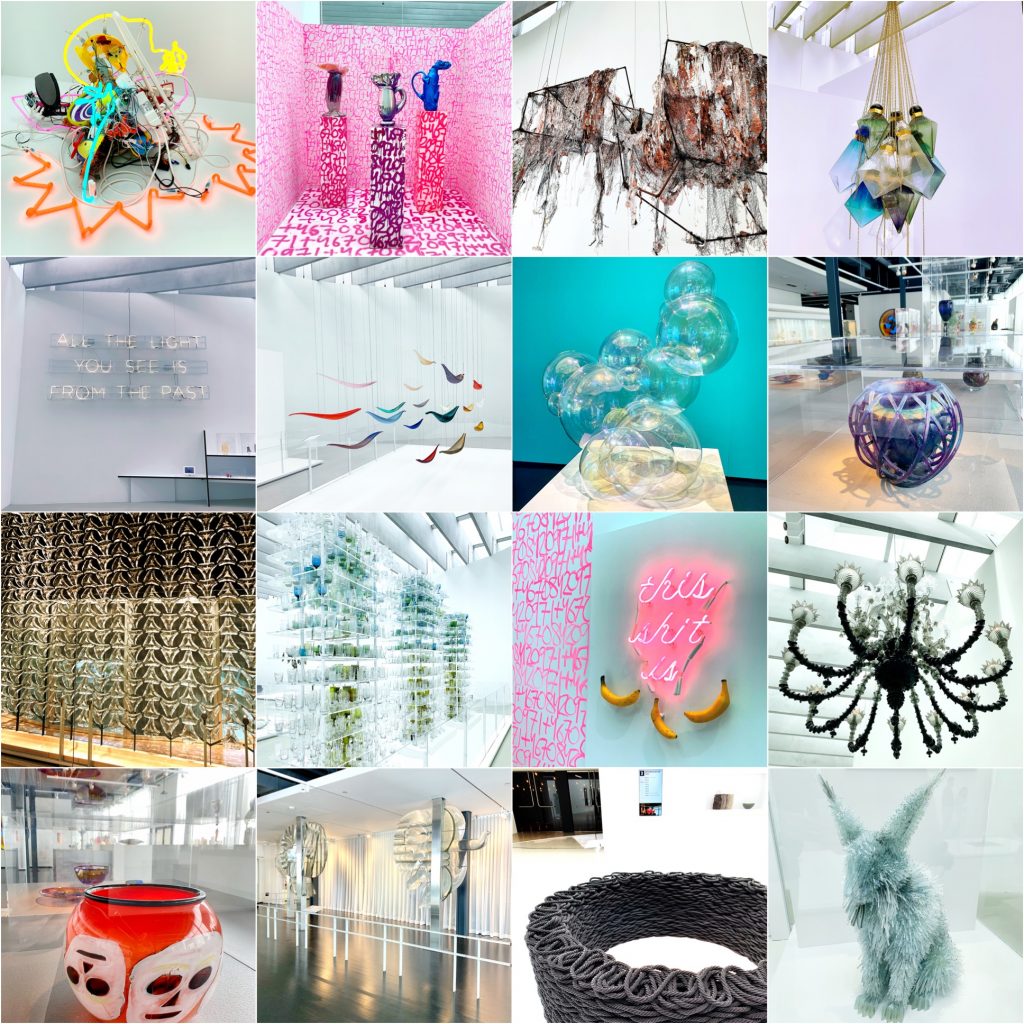
Whether centered on historic events both great or terrible, ahhhhhh-mazing art funded by really rich people (lookin’ at you, Walmart founders), super-famous musicians (“thank you … thank you very much”), fictional movie locations (“Brooks Was Here … So Was Red”), or room after room of various treasures (don’t call it junk!), these are the places you’ve just got to see to believe! And you’ll have a ton of fun doing it, too. Let’s get into it!
The National Civil Rights Museum explores the history of the Civil Rights Movement in the United States from the 17th century to the present, its impact on our culture today, and the stories that changed our nation.
Every American should visit the National Civil Rights Museum, located at the the site of the assassination of Martin Luther King, not only for its significance but also because it is so well done.
The exhibits inside the National Civil Rights Museum were interestingly done, quite interactive, and the visit proved to be much more emotional than either of us expected.
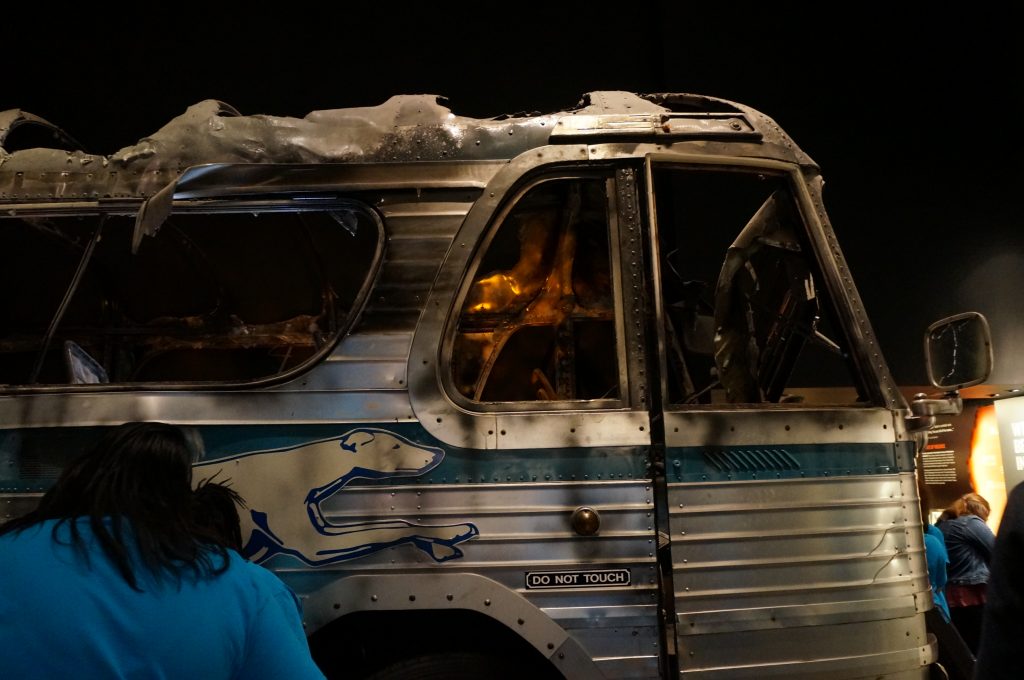
MLK Jr., the best-known Civil Rights leader of all-time, was shot and killed while standing on this balcony of the Lorraine Motel. Room 306 (where King died) and the adjoining Room 307 of the Lorraine Motel were withdrawn from use and left as a memorial behind plexiglass.
In the distance is Bessie Brewer’s Rooming House, from which James Earl Ray fired the fatal shot that killed MLK Jr. The room is prominent as you approach the National Civil Rights Museum, and after winding your way through the entire complex, you find yourself at the last stop, on the inside of the hotel, looking back out at the front with the same view that MLK Jr. would have had.
Of course, the desires of Blacks and all other minorities during these times still ring true today, coming to light in a equally poignant way with the issues illuminated by the deaths of George Floyd and others in 2020 and 2021. The Museum was a wonderful reminder of how much work remains to be done in our country!
RV'ing? Consider staying at Graceland RV Park and Campground, 9 miles south of the Museum, but oh-so-very conveniently located right on the grounds of "you know what" ... see Museum #2 below!
2. Graceland – Memphis, TN
Graceland is so much more than a Mansion. It was the private retreat of the King of Rock ‘n Roll. It was where his family grew up, spent their time together and enjoyed life. Today, you’re invited to explore Elvis Presley’s home, Graceland Mansion, and immerse yourself in his life and legacy at Elvis Presley’s Memphis Entertainment Complex.
If you’re in Memphis to visit the National Civil Rights Museum, you’re just a 8 mile drive away from seeing Graceland Mansion, Elvis’ family home … so why not drop in? (Elvis was always having people drop in!) The jaw-dropping tour of his 17,000 sq ft. “happy place” was truly extraordinary, and one of the most interesting and well-done tours you’ll experience!
Perhaps less “museum” and more “interior decorating inspiration,” the Music Room and its greeting peacocks are just a hint of what’s to come on the guided tour of Graceland.
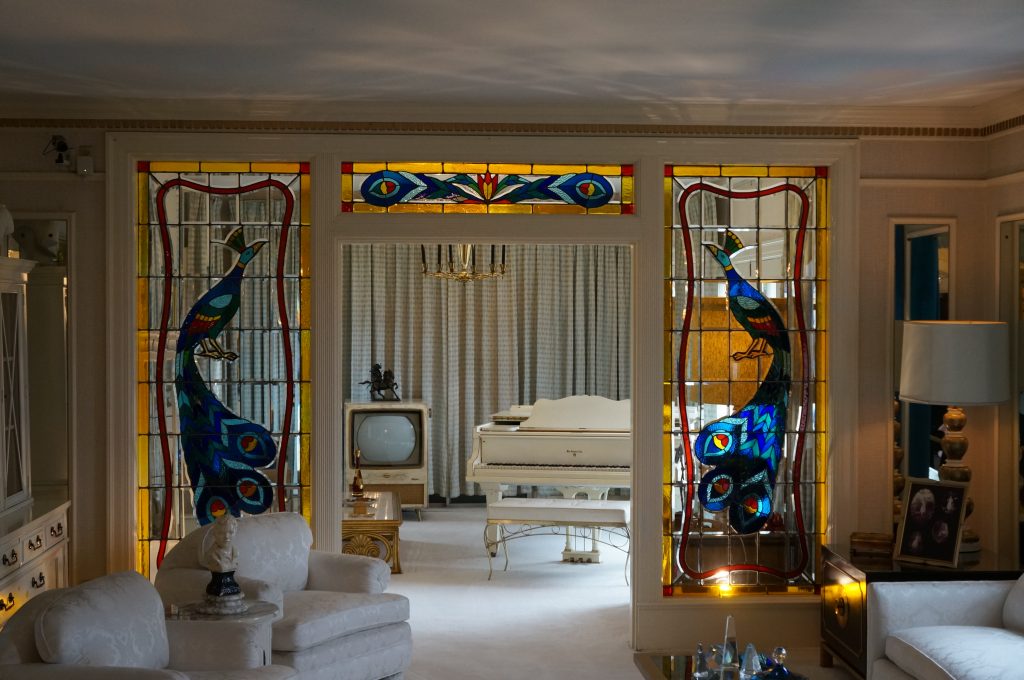
Elvis was a voracious reader (mainly spirituality books) and also loved television (mainly news and football). After reading that President Lyndon B. Johnson had three televisions so he could watch news on all major networks at once, Elvis took that idea to his downstairs media room.
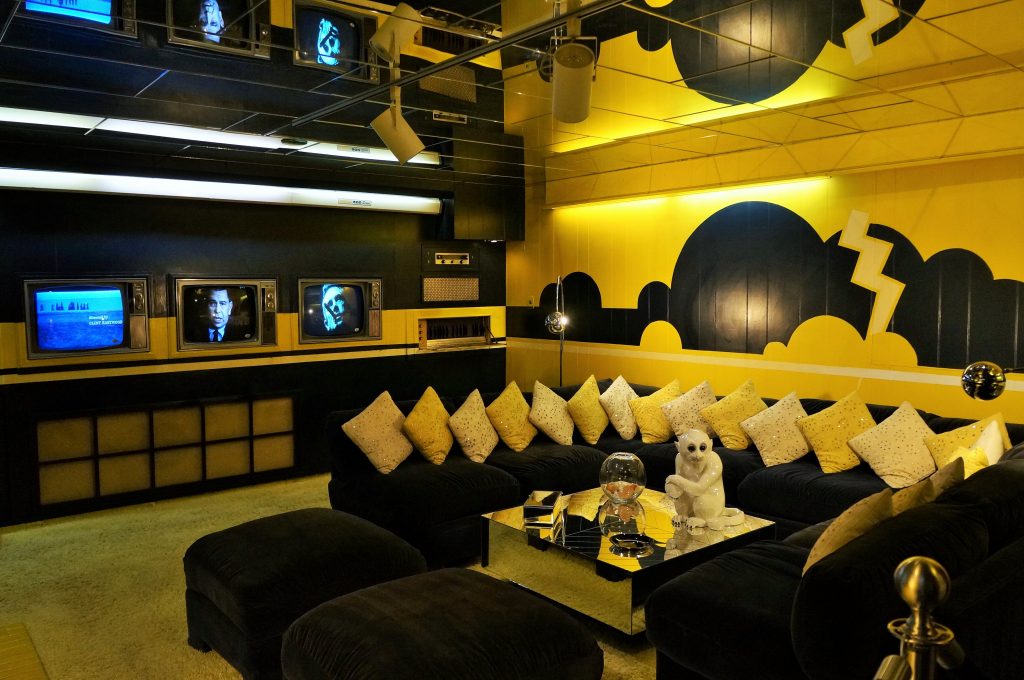
Elvis loved to play pool and had the ceiling and all the walls of his billiard room covered in 400+ yards of pleated fabric. It took 3 people 10 days to hang all this, and to this day a team of five archivists vacuum-cleans the pleats weekly using a special attachment.
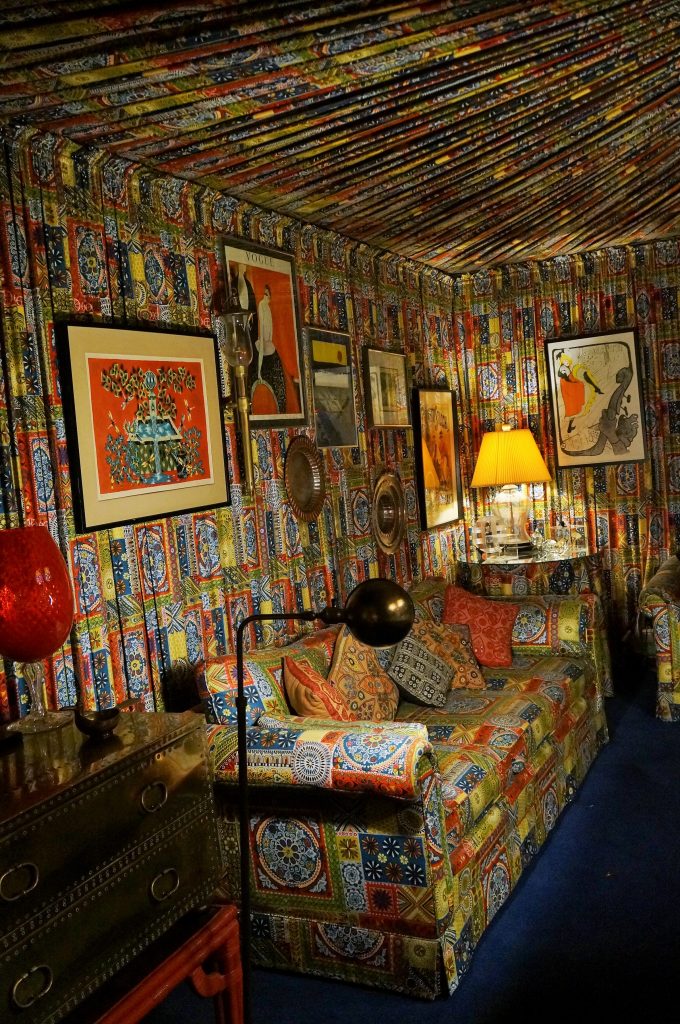
The “Jungle Room” den features luxurious green shag carpeting and an indoor waterfall of cut field stone, as well as furnishings that only somebody as famous as Elvis could pull off. The Jungle Room was converted to a recording studio at one point and Elvis cut the bulk of his final two albums right here.
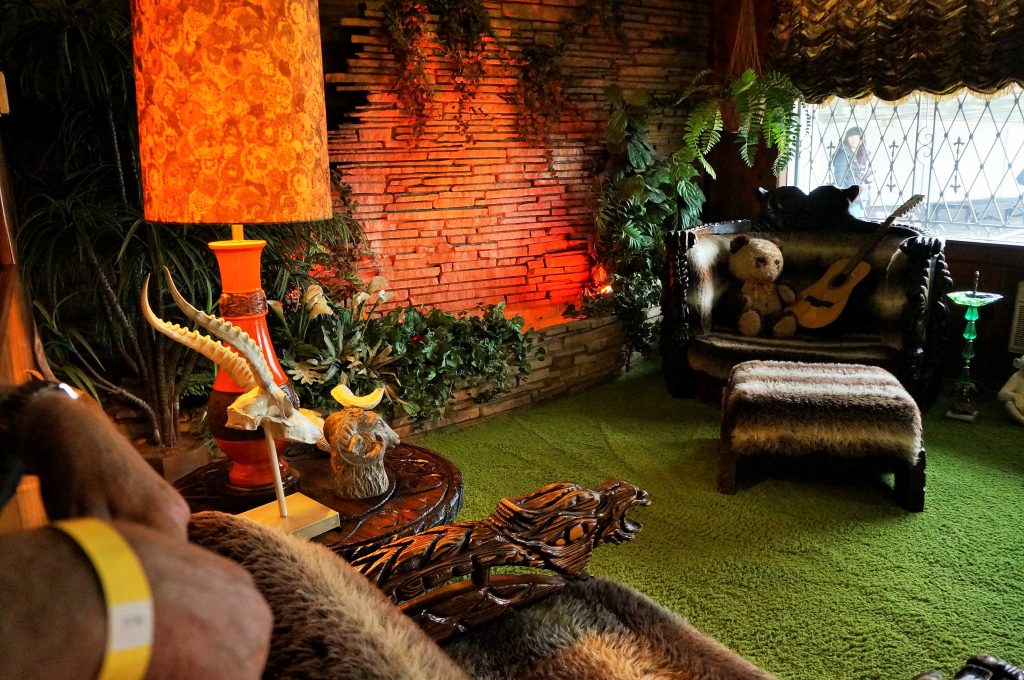
Elvis, his parents, and grandmother are all buried at Graceland, as well as a memorial to his stillborn twin brother, Jesse Garon. The guitar pick (lower left) was left by Paul McCartney in 2013, so “Elvis can play in heaven.”

Elvis’ plane, the Lisa Marie, on which he famously took his family from Memphis to Denver to eat peanut butter sandwiches and then return right home, is also available to walk through.
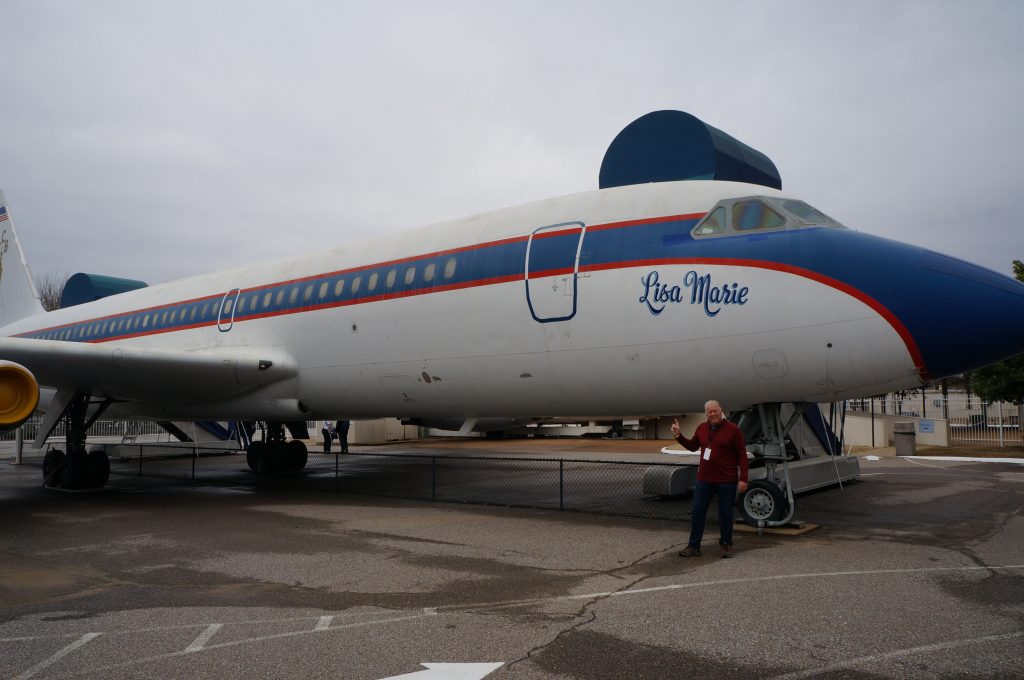
Graceland also has a relatively new complex across the street called “Elvis’ Memphis” which houses a nicely-curated collection of Elvis memorabilia and multi-media presentations, including Elvis’ auto collection and lots and lots and lots of unbelievable costumes from throughout his career.
Music lovers, while in Memphis you should also check out Sun Studios, the most famous recording studio in the world; Beale Street, a short but lively stretch of Memphis jam-packed with music venues and clubs; and tiny Mr. Handy’s Juke Joint Blues Hall, the fave Beale Street location for fantastic live blues!
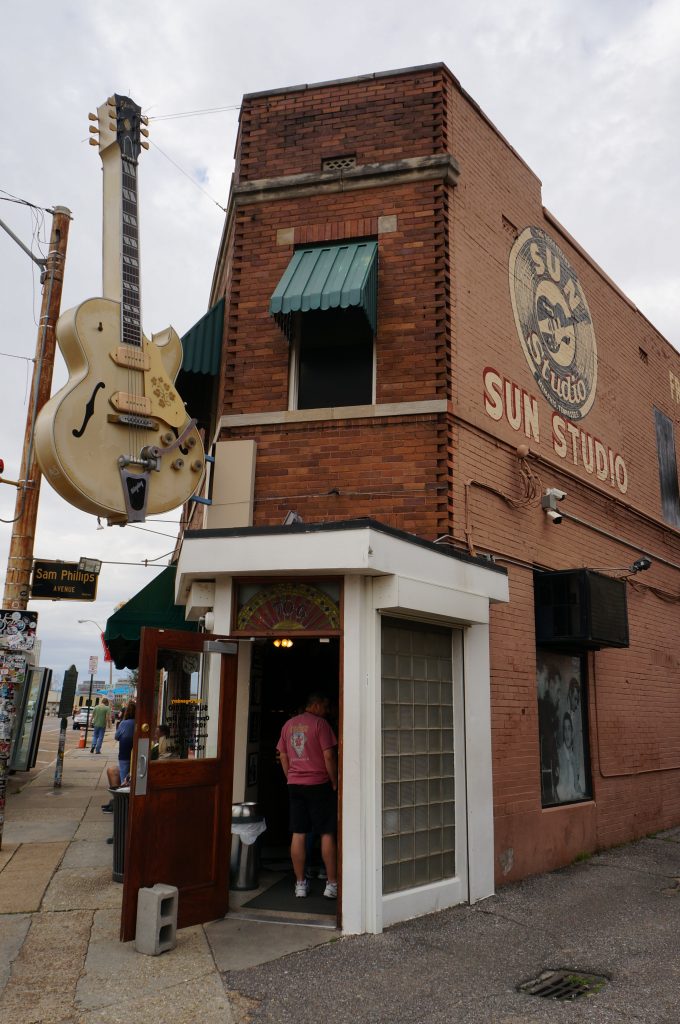
Sun Studios 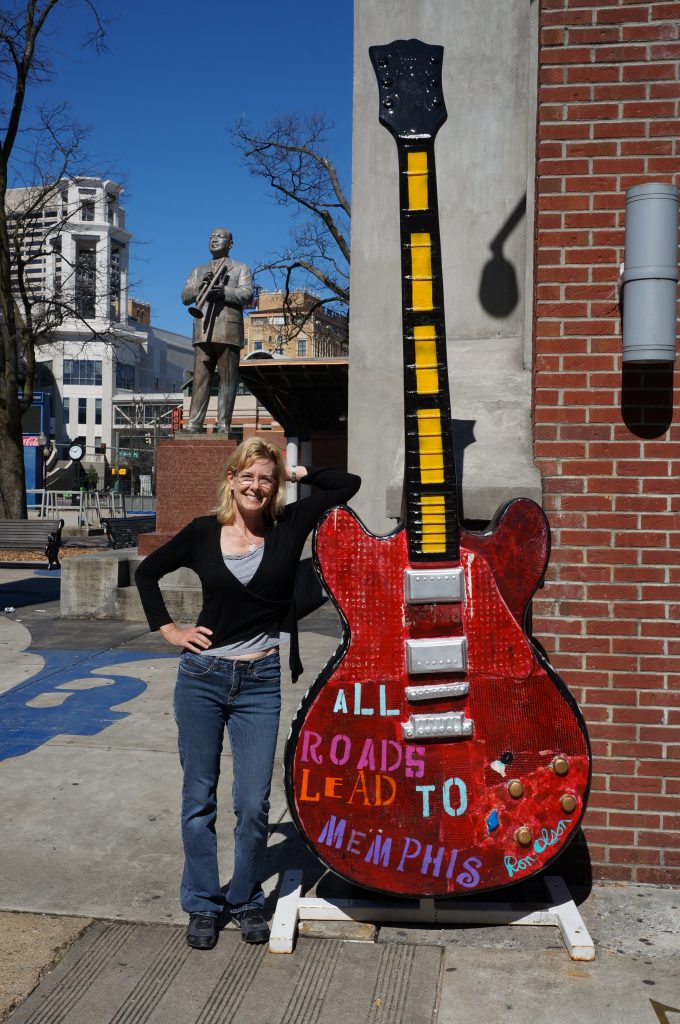
Beale Street 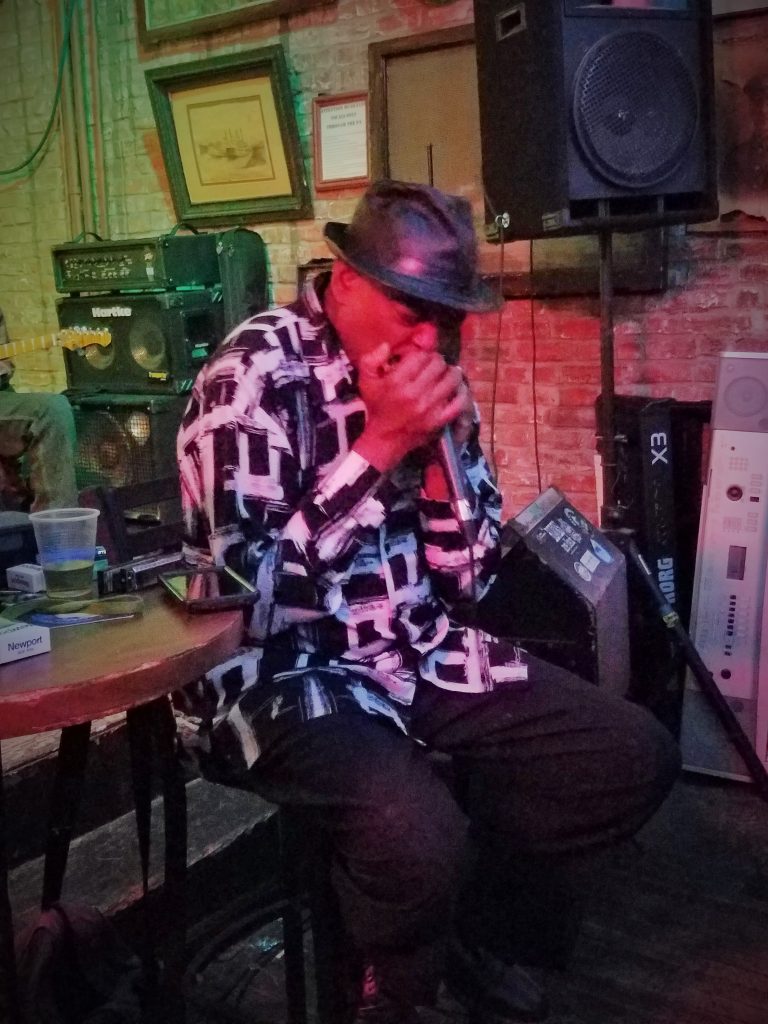
Mr. Handy’s Juke Joint Blues Hall
Read more of our post about Memphis!
3. Rock and Roll Hall of Fame – Cleveland, OH
The Rock & Roll Hall of Fame works to engage, teach and inspire through the power of rock and roll. The museum documents the history of rock music and the artists, producers, engineers, and other notable figures who have influenced its development.
Love Elvis? So did the Rock and Roll Hall of Fame! Elvis was in good company in the very very first group of inductees in 1986, including Elvis Presley, James Brown, Little Richard, Fats Domino, Ray Charles, Chuck Berry, Sam Cooke, the Everly Brothers, Buddy Holly, and Jerry Lee Lewis. The Rock and Roll Hall of Fame will “rock your world” as it pays tribute to the history of rock music!
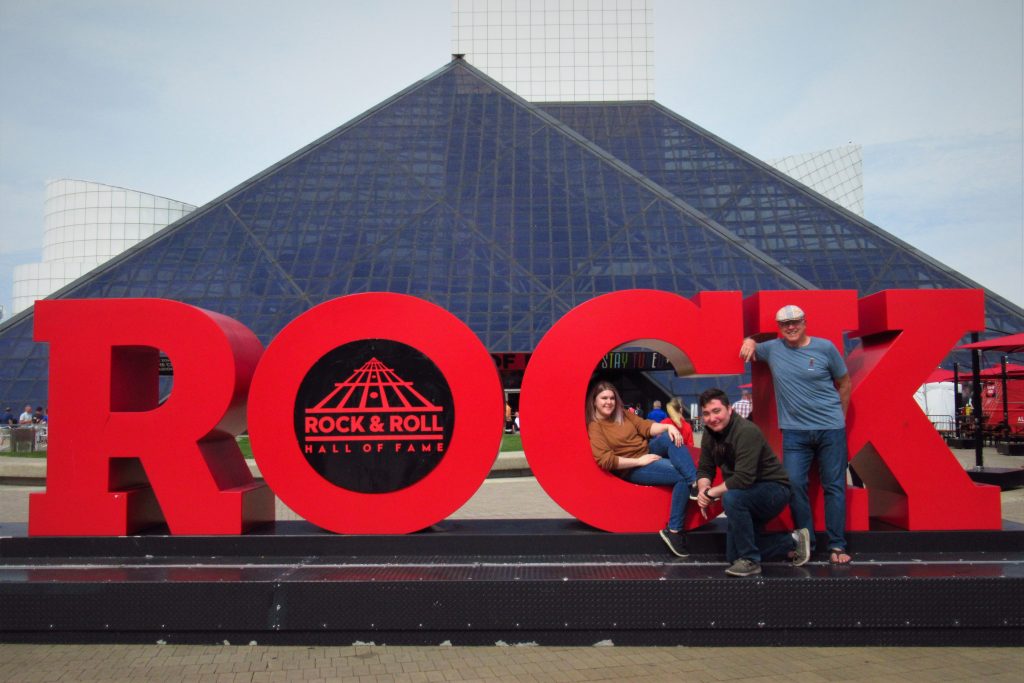
There are thousands upon thousands of amazing mementos and iconic pop-culture memorabilia, more than you could even wrap your mind around, displayed in a variety of exhibits and interactive activities on multiple floors of the 150,000-sq.ft. double-domed, glass-enclosed building, impressive in itself!
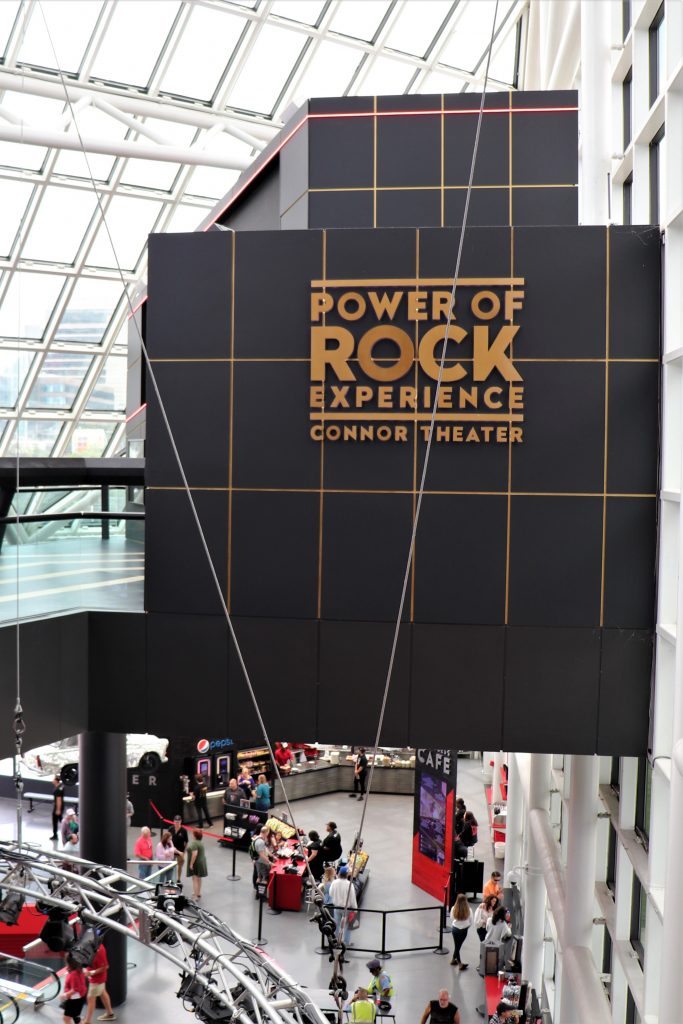
In “The Garage,” visitors can pick up an instrument, bring their band out of retirement, and play to all the other visitors walking by. Some were great, some were not-so-great, and some were going to be remembered mostly for their emo album covers.
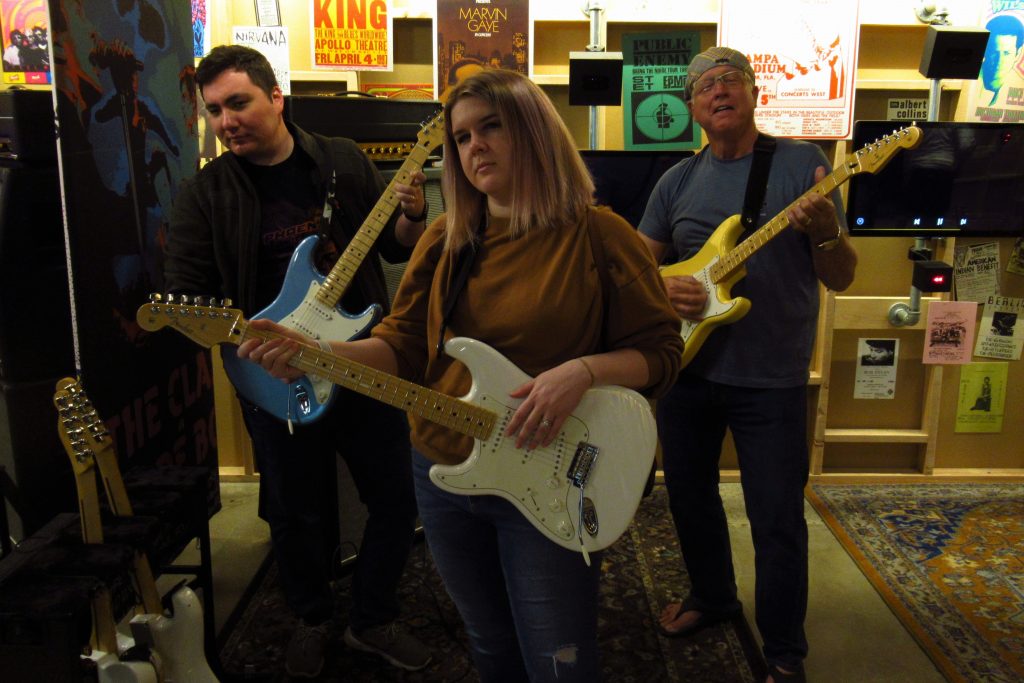
Of course, the Rock and Roll Hall of Fame exists primarily to recognize individuals and groups for their contributions to musical excellence. Annual Hall of Fame inductees are chosen for three factors: Impact, Influence and Awesomeness. Yes, really! Awesomeness is an official factor!
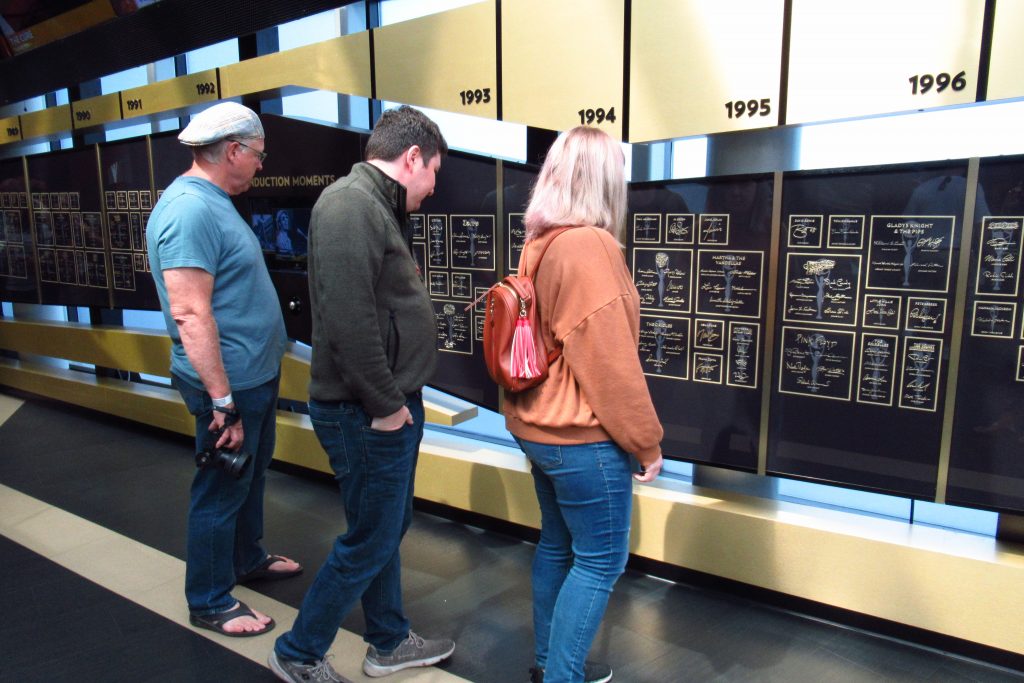
The exhibits and displays go on and on and on! You’ll want to block out a whole day to visit this place!
RV'ing to the Rock and Roll Hall of Fame? Be forewarned that it is located in the heart of a huge city! Navigation and parking can be quite the challenge, and there is a dearth of campgrounds anywhere in town! Consider staying about 30 minutes south in the Streetsboro/Cleveland KOA for its wide open spaces and full hookups.
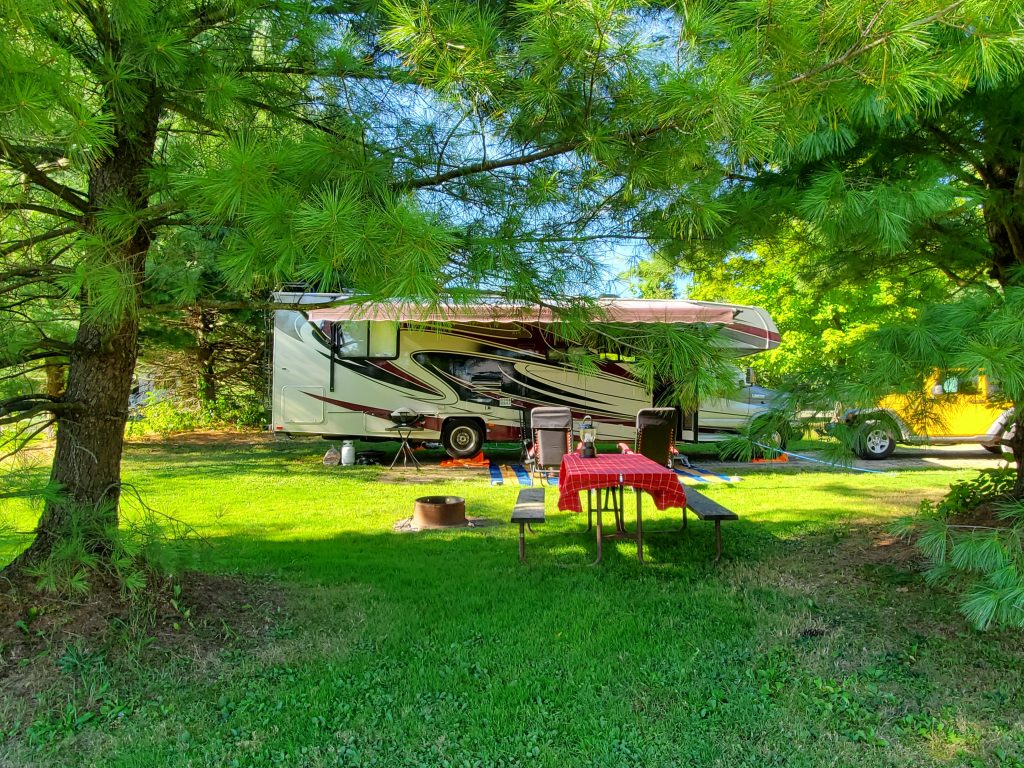
- Read more of our post about fun things to do in Northern Ohio, including the Pro Football Hall of Fame and Cuyahoga Valley National Park!
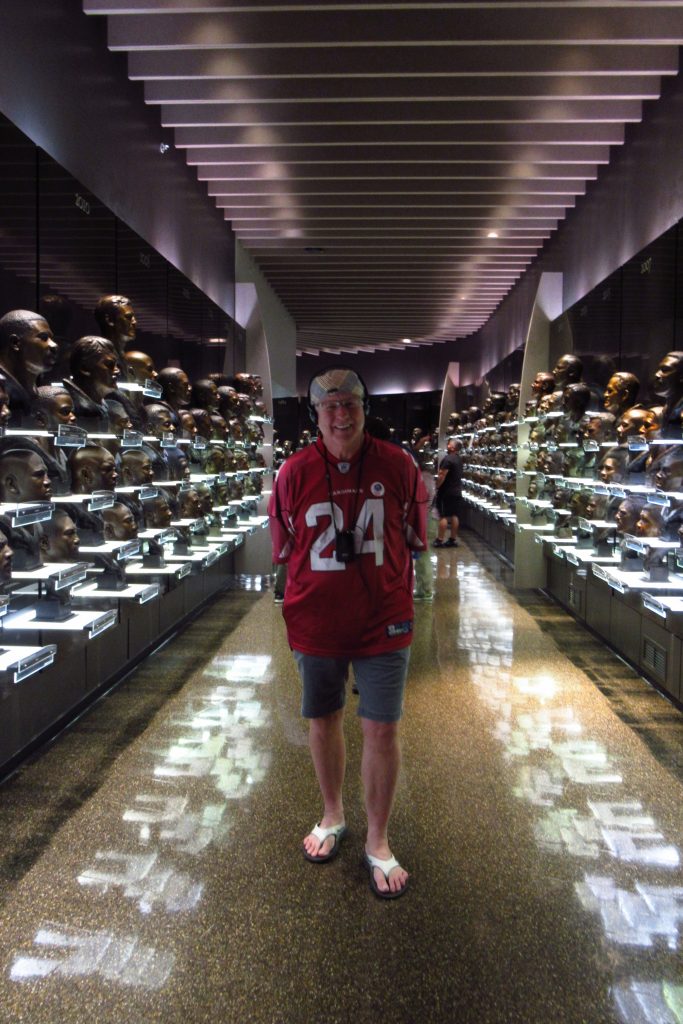
Pro Football Hall of Fame 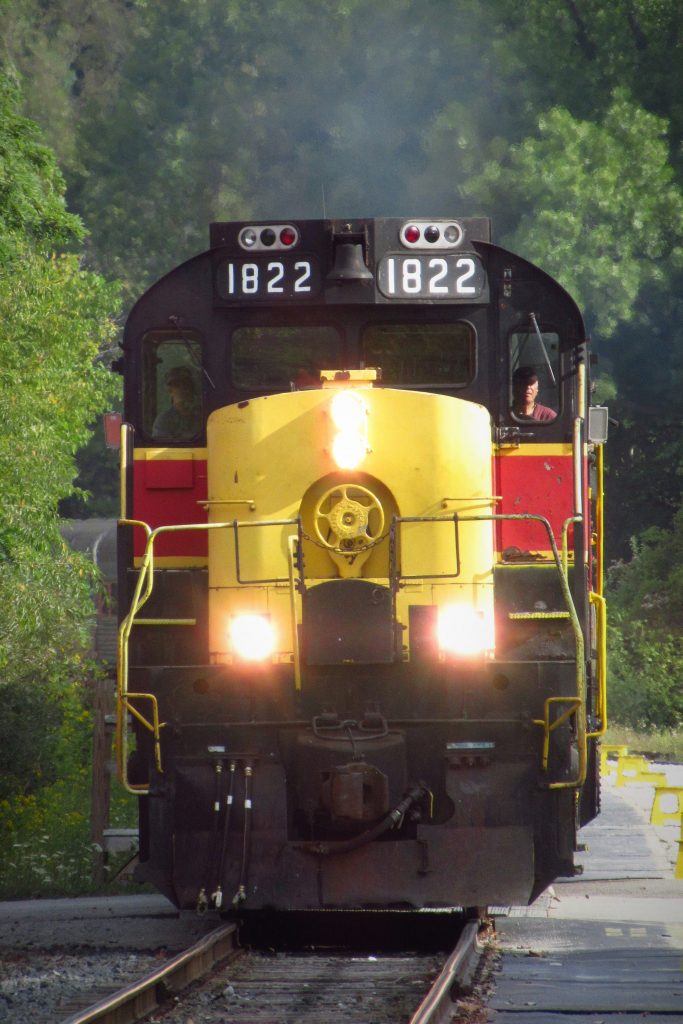
Cuyahoga Valley National Park
4. Ohio State Reformatory Experience Museum a.k.a. “Shawshank Redemption Prison Museum” – Mansfield, OH
Stroll the halls and visit the cells of some of history’s toughest criminals. Tour the intact set of world’s favorite movie, The Shawshank Redemption. Whether you’re reliving scenes from classic films, hunting for the paranormal, or basking in beautiful architecture, take a walk through history at The Ohio State Reformatory.
Also in Northern Ohio and a mere 82 miles south of the Rock and Roll Hall of Fame, the Ohio State Reformatory is the old prison where the cult-favorite 1994 movie “Shawshank Redemption” was filmed.
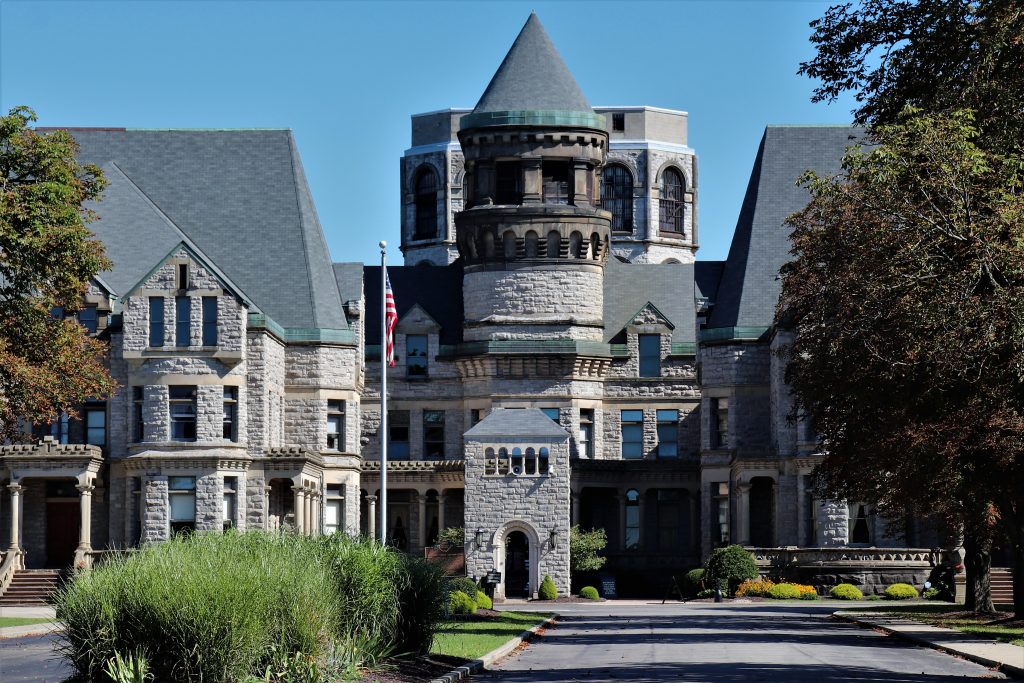
Mansfield, Ohio, is the location of the Ohio State Reformatory, an 1886-era facility to rehabilitate teens and young adults through “hard work and education.” Read this: juvenile prison.
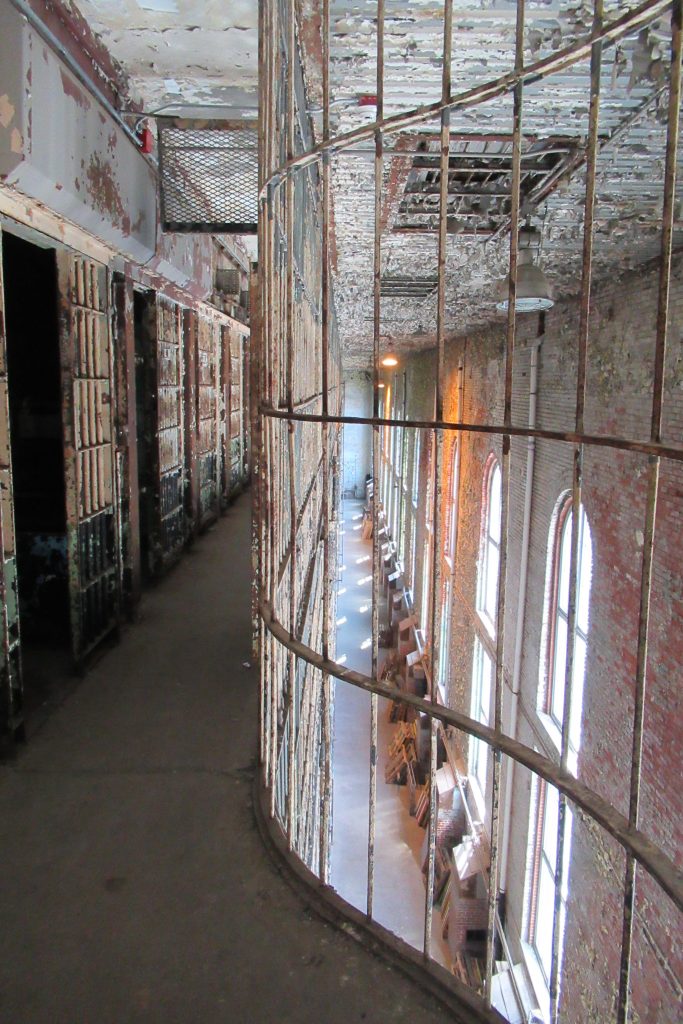
It is also one of 12 or so locations around Mansfield where the terrific movie The Shawshank Redemption was filmed. Shawshank contains one of the most memorable (and true) movie quotes of all time, “GET BUSY LIVIN’, OR GET BUSY DYIN‘.”
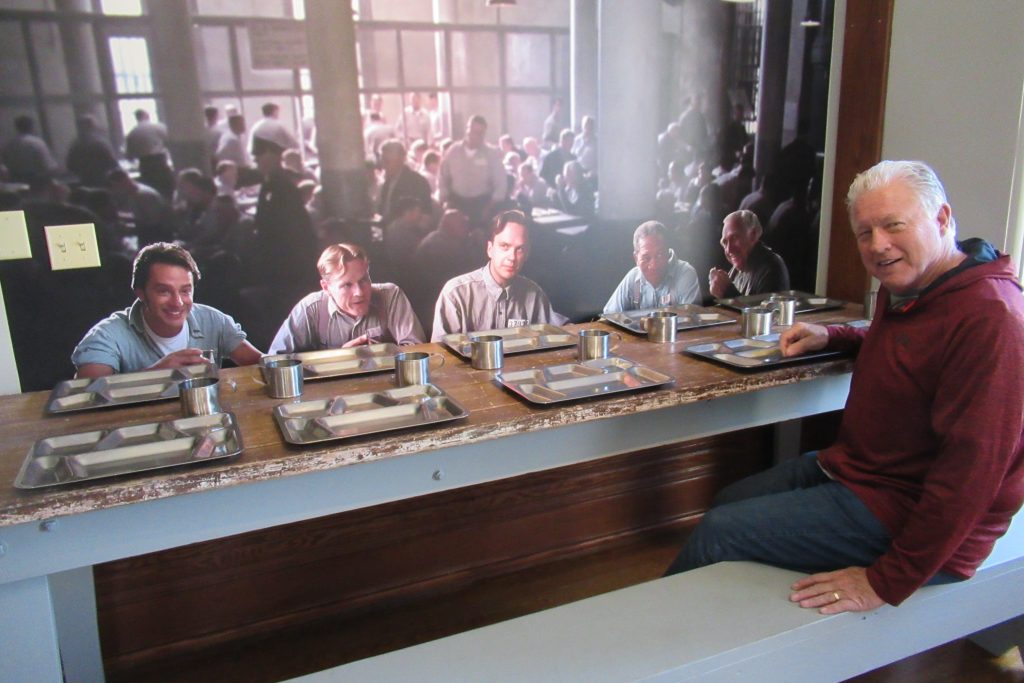
The movie is based on a Stephen King short story called “Rita Hayworth and the Shawshank Redemption.” It was a total bomb in the box office (a paltry $16 million), but developed a cult following when released to video, where it did an additional $80 million.
The prison had an excellent display of memorabilia and sets from the filming. Of course, it is most exciting to you if you’ve actually seen the film before you go. Assuming you have, you can’t help but be fascinated by things like the bedroom where Brooks hanged himself rather than have to live outside the prison walls.
Parts of the prison featured in the movie, including “the hole” and “the yard,” are unavailable in September and October, as they make preparations for Halloween haunted house events, but the warden’s office, Andy’s library, and many more are open year-round.
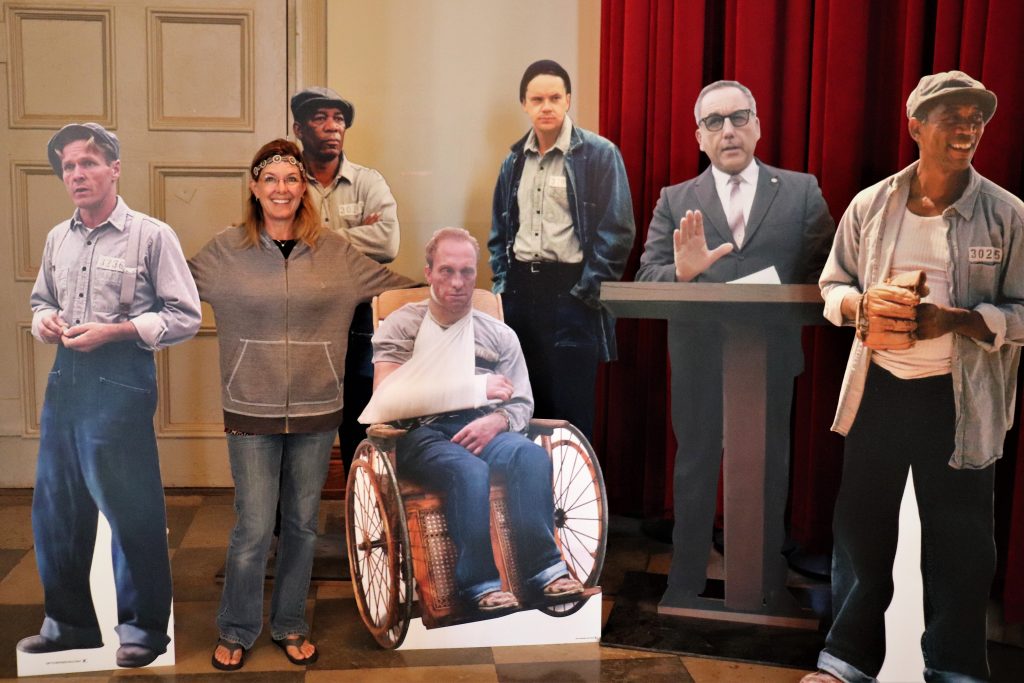
More than just a movie set, this is also an excellent prison museum. They offer a series of fun tours and events in an effort to raise funds to restore the decaying buildings. Audio wands give the history of the cell blocks, warden station, chapel, and more while you wander about at your leisure.
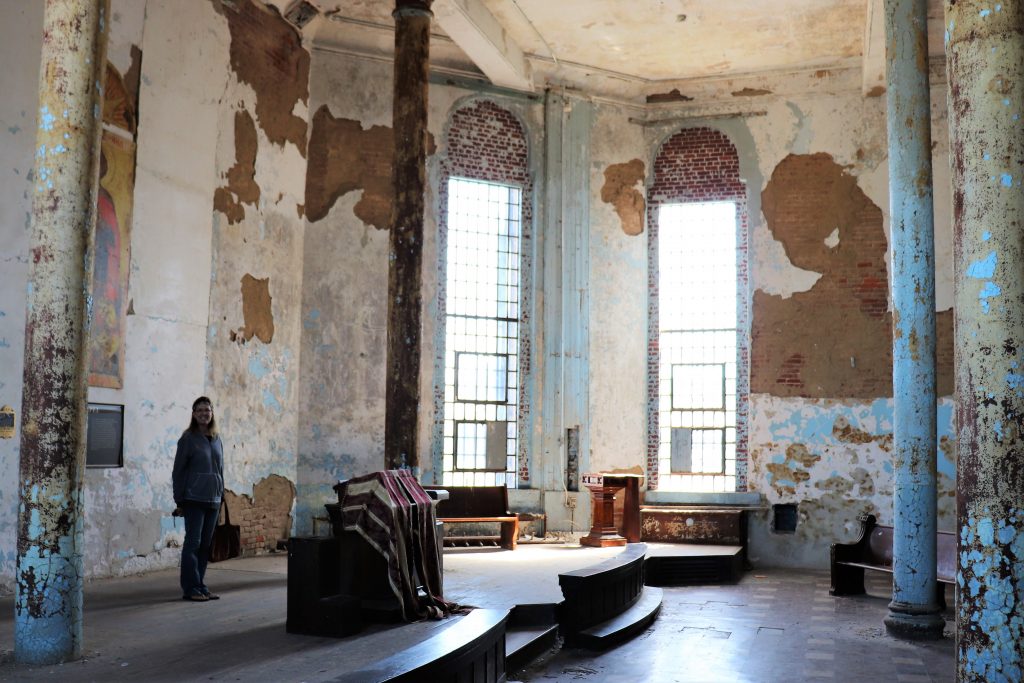
If you're fascinated by law enforcement, check out our blog posts highlighting these other prison museums:
- Old Montana Prison in Deer Lodge was Montana’s only home for convicted criminals for 108 years starting in 1871. Inmates included at least one member of Butch Cassidy’s “Wild Bunch” and two of the top three suspected “Zodiac Killer” candidates.
- The Colorado Prison Museum in Canon City is housed within a real 1930’s-era women’s cell block, and is filled chock-full with lots of historical items. You go into each of the 32 cells with their unique themes and related exhibits about famous prisoners, past wardens, historic riots and escapes, and “behavior control devices” including balls and chains, cattle prods, and a whipping horse known as the “Old Gray Mare.”
5. Crystal Bridges Museum – Bentonville, AR
Crystal Bridges houses a renowned, world-class collection of American art, ranging from Rockwell to Warhol, in a striking architectural structure, set on 120 acres of Ozark forest with five miles of trails, with free admission always.
Thanks to the generosity of members of the Walton Family (founders of a little enterprise called Walmart) and their charitable works, Bentonville, Arkansas has an amazing array of infrastructure and amenities throughout the area, from music pavilions to theaters to bike trails. Perhaps their most generous (billion-$$+) contribution, however, is the stunning Crystal Bridges Art Museum.
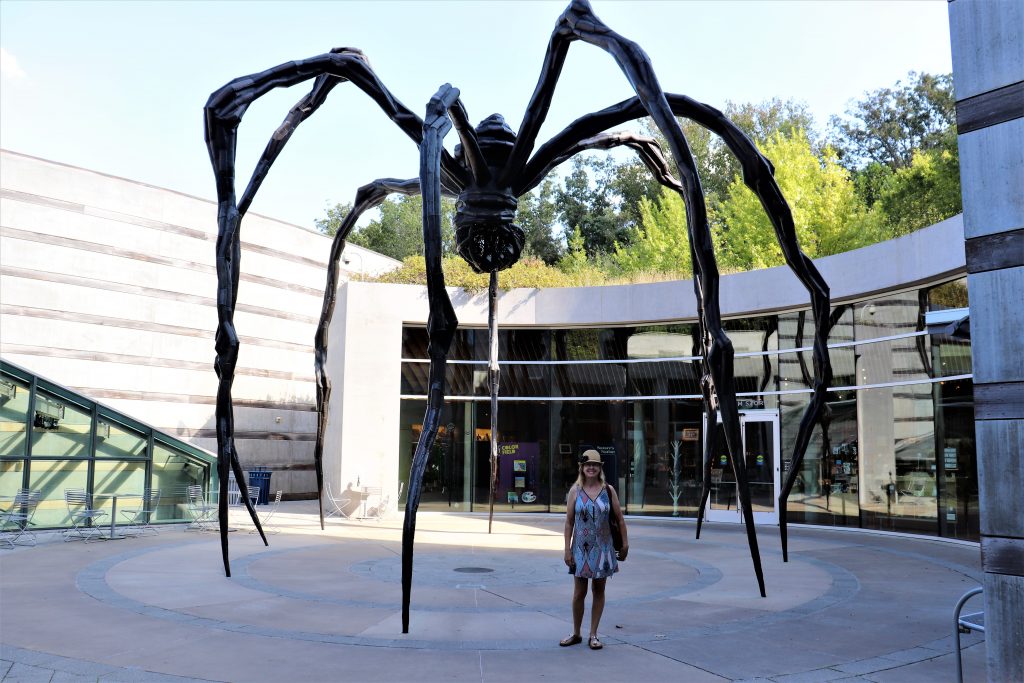
Built to look like it is “floating,” Crystal Bridges is a renowned American art musuem set on 120 lush acres in the Ozarks, with walking trails, art gardens, and even a Frank Lloyd Wright house.
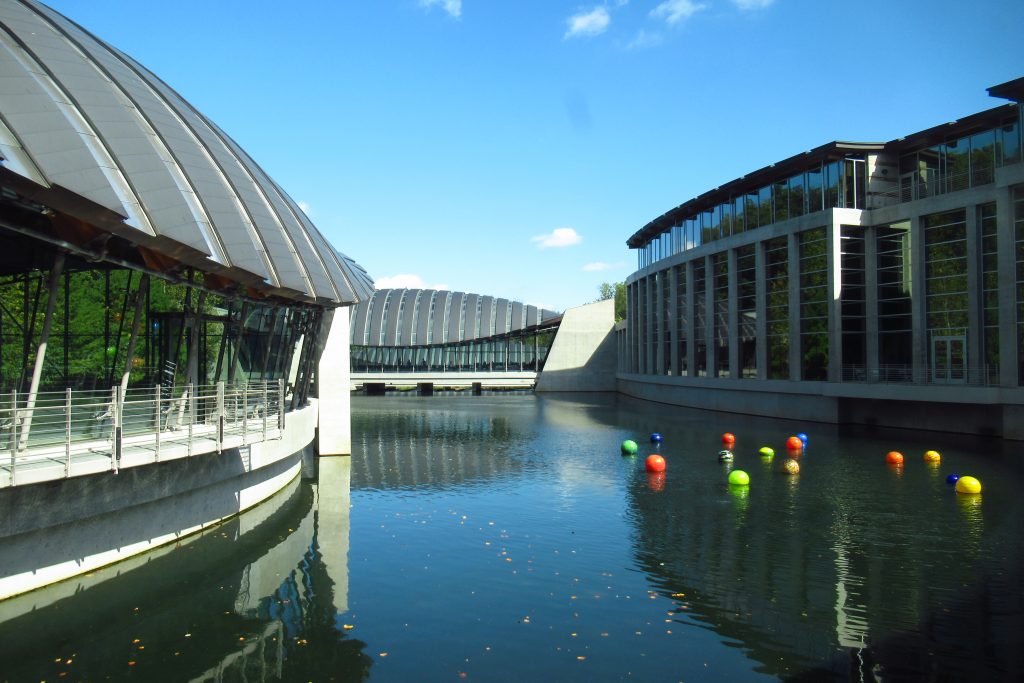
Exploring Crystal Bridges will take the better part of an entire day, and you’re gonna get hungry. Not to fear … they have one of the best Museum cafes in the world. The museum was opened on 11/11/11, and so their highly-regarded (and extremely delicious!) restaurant is called Eleven.
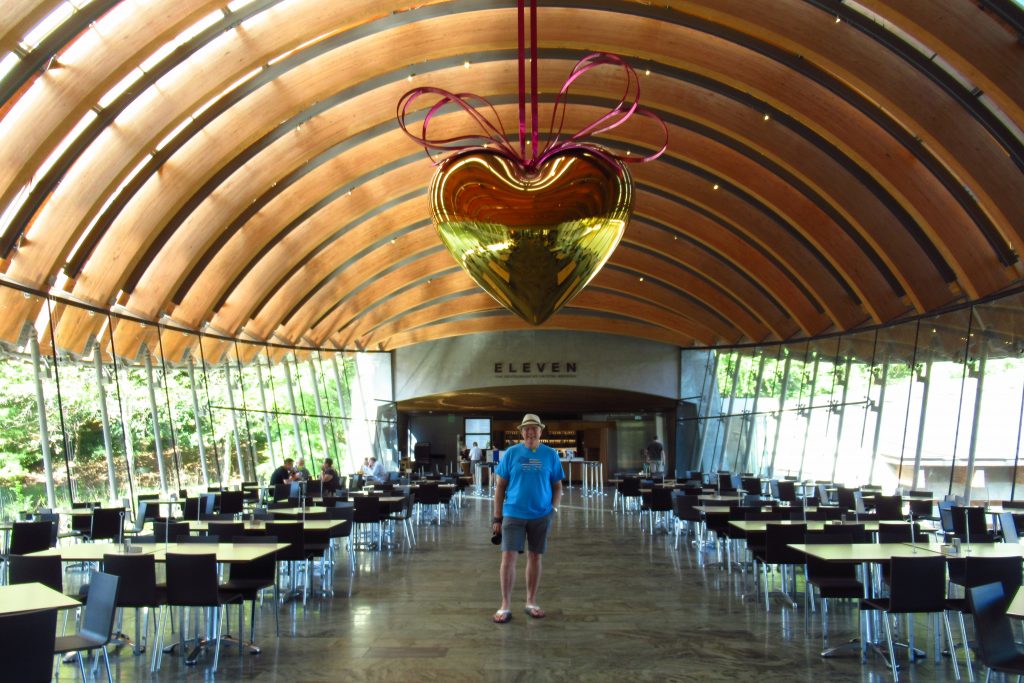
A variety of permanent and visiting art installations are distributed throughout the various “floating” buildings.
Much of the art is outdoors along walking trails over multiple acres (delightful in nice weather, sticky other times). When we were there, their outdoor exhibition displayed a number of works in the North Forest. You know you’re a big property when you have a entire North Forest.
Inside, in air-conditioned comfort, their permanent collection has hundreds of truly interesting works by American masters from colonial times to present. Our favorite was this sweeping coat/robe/body armor made entirely from thousands of Army dog tags.
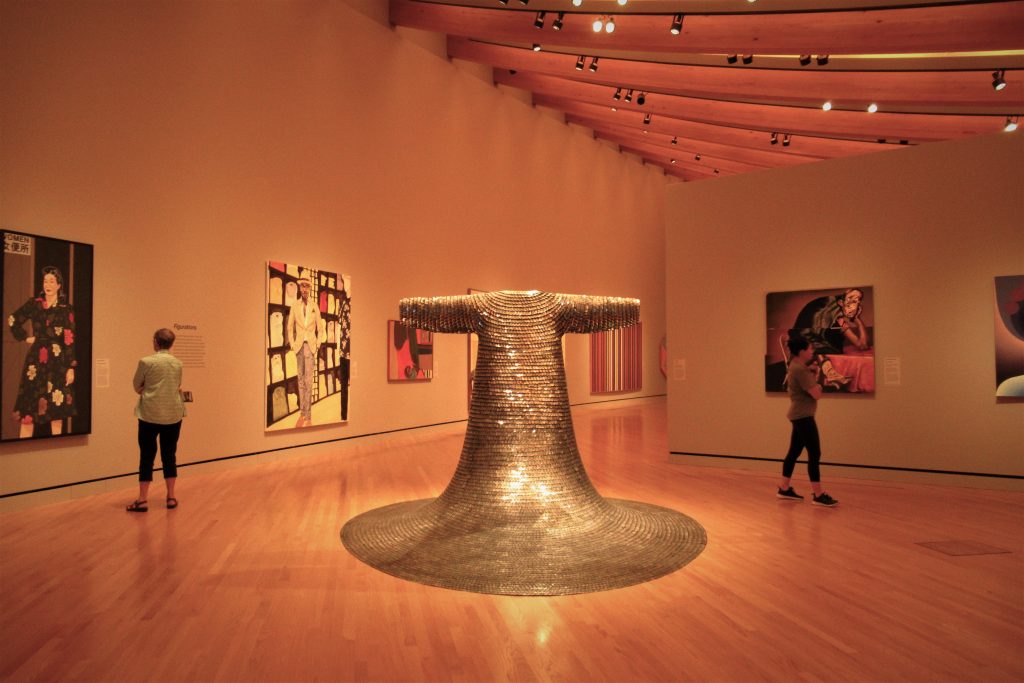
Because of the Walton Family, admission here is also always free, and it was truly a spectacular place! If you love exploring art, you’ll love Crystal Bridges!
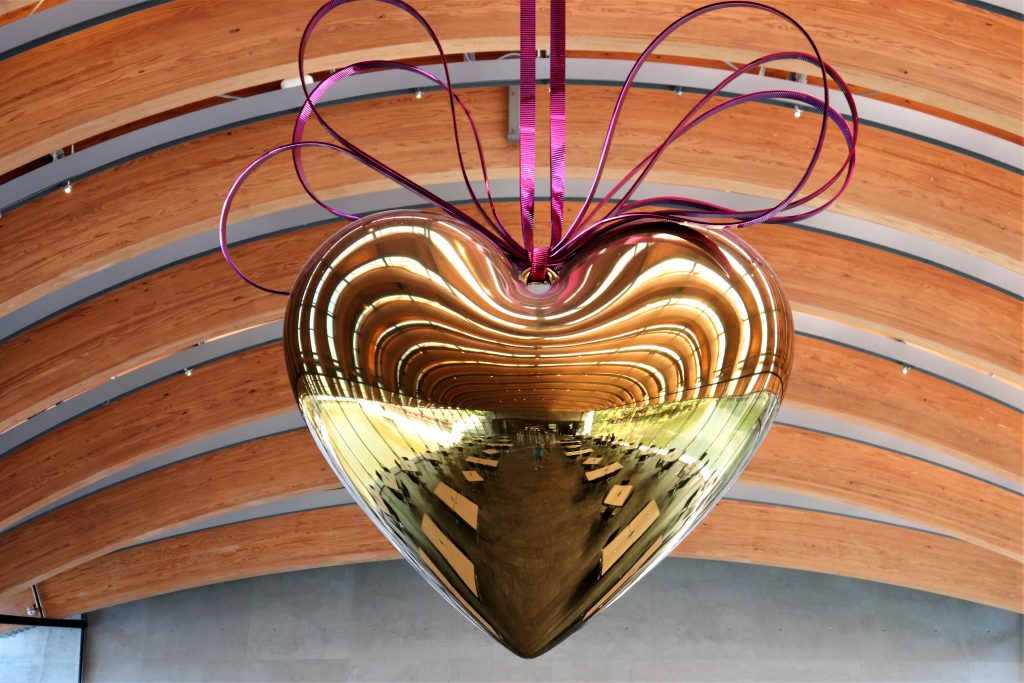
6. Oklahoma City National Memorial – Oklahoma City, OK
The outdoor symbolic memorial is a place of quiet reflection, honoring victims, survivors, rescuers, and all who were changed forever by the Oklahoma City bombing on April 19, 1995. It encompasses the now sacred soil where the Alfred P. Murrah Federal Building once stood.
From the spectacular to the somber ….. this is a place of quiet reflection, but that doesn’t mean it’s boring. The Oklahoma City National Memorial surprised us with its message, its medium, and its beauty.
In a greatly simplified summary, the perpetrators were disgruntled Americans who sought revenge against the federal government, particularly for its role in killing of civilians at Ruby Ridge and David Koresh’s Branch Davidian complex at Waco. This was a 20-block crime scene with 312 buildings damaged by the blast. Why “memorialize” such a horrific event?
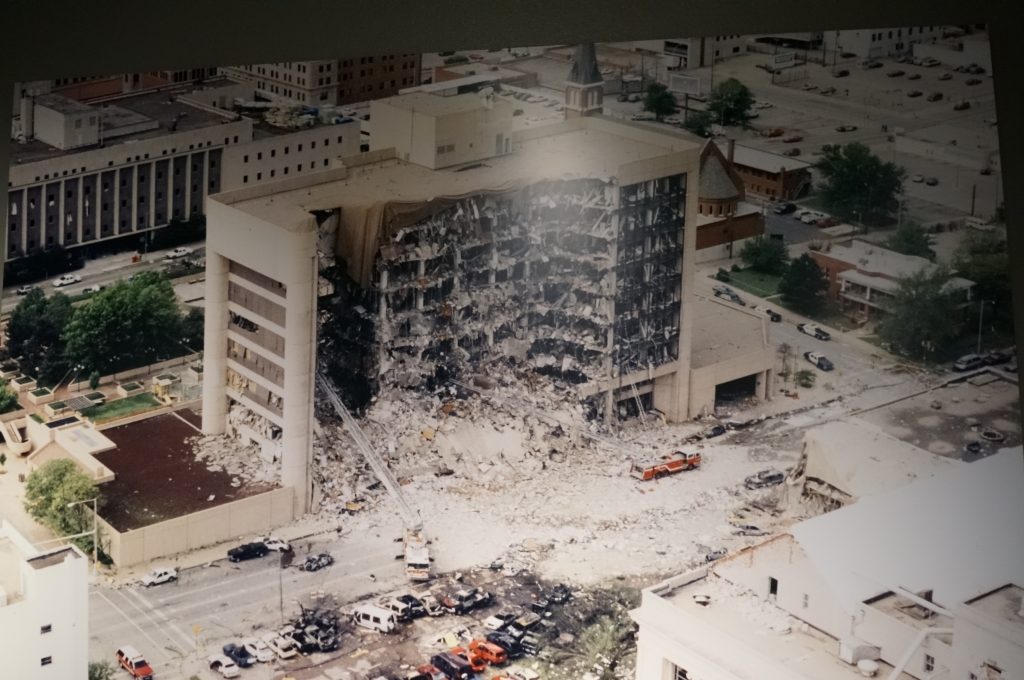
“May all who leave here know the impact of violence.” The people who were killed were all just innocent people going about their daily lives, and yet were the victims of unthinkable violence. There can be much similar reflection today in our current climate of gun violence in schools. The perpetrators wanted to “get even,” and yet the victims were not even the ones who caused their anger.
The losses were staggering: The bombing orchestrated by Timothy McVeigh and Terry Nichols takes 168 lives, including 19 children, and makes orphans of 30 children. 219 children lose at least one parent and eight families lose more than one member. Hundreds of people were critically injured.
The road on which McVeigh’s rental truck packed with explosives was parked has been turned into a beautiful reflection pool. At each end is a monument, one marked 9:01 and one marked 9:03. The bombing occurred at 9:02. The 9:01 East Gate represents the innocence before the attack. The 9:03 West Gate marks when healing began.
The Field of Empty Chairs, 168 in all, is arranged in nine rows that reflect the floors where victims were working or visiting. The 19 smaller chairs represent the children. The Field matches the footprint of the Murrah Building and the glass bottoms light up at night. Each chair is etched with the name of a person killed.
There is an excellent documentary on Netflix called “Oklahoma City.” This was the worst terrorist act of its kind prior to 9/11, and still remains the deadliest act of domestic terrorism in America. In short, it was ALL of America’s wake-up call that forevermore, we must meet violence with vigilance.

7. The Neon Museum – Las Vegas, NV
The Neon Museum preserves the history of Las Vegas through the city’s most iconic art form: neon. It features signs from old casinos and other businesses displayed outdoors on 2.62 acres, plus special exhibits and shows.
The Neon Museum outside downtown Las Vegas is the most light-and-color filled history museum you’ll ever visit! All of the neon contained in their outdoor “boneyard park” has been preserved from old Vegas casinos, hotels and businesses when they were torn down or remodeled.
In their entry sign, the first “N” came from the Golden Nugget, “E” from Caesars Palace, “O” from Binion’s Horseshoe, and the last “N” from the Desert Inn. In the second photo above, all these interlocking H’s formed the corner bullnose of the Horseshoe Casino’s facade on Fremont Street, which was the happening place to be before the Strip took over. At the time, it was the world’s largest use of neon, with more than 8 miles of tubing.
The Visitor Center is housed inside a restored lobby shell from the now defunct La Concha Motel. The main collection has lots of restored signs from places like the Stardust, Silver Slipper, Sahara, Aladdin Casino and many others, as well as more than 200 unrestored signs. It’s hard to describe the scale of everything you’ll see, for even a single letter from a sign could be as tall as a regular building.
The Neon Museum hosts special artist exhibits, and at the time we visited was featuring a special “Lost Vegas: Tim Burton” Exhibition when we visited. Original art and poetry by Burton, the famous film director, producer, artist, writer, and animator perhaps best known for the movie Beetlejuice, has been installed throughout the regular displays. Burton called Vegas “my own internal Burning Man,” referring to the festival of artistic culture and self-expression that happens in California each year. It was definitely interesting and abstract, just like Burton!
Pay the extra money to experience the exhibition called “Brilliant,” which uses sight and sound in an enclosed yard to take visitors back to old Las Vegas in the 1950’s. Visitors to this show stand in the middle and walk around looking at everything as the 20-25 minute show goes on. Historic photos and film from 50’s Vegas are projected onto this wall and other parts of the display, while classic music from Frank Sinatra, Elton John, Liberace, Dean Martin and other classic Vegas artists is played. What’s crazy is that NONE of these signs are live or active. They are lit up solely from lights been shone ONTO them via an amazing computerized light show designed by an artist!
Each of the displays has been important to Vegas not only artistically, but historically. Museum officials urge visitors to use their phone app to see the signs in their original habitats and to learn more about the story of each. Being outside and only open/visible at night, weather can impact your visit — best not to go during heat of summer, dead of winter, or when it’s raining … plan accordingly!
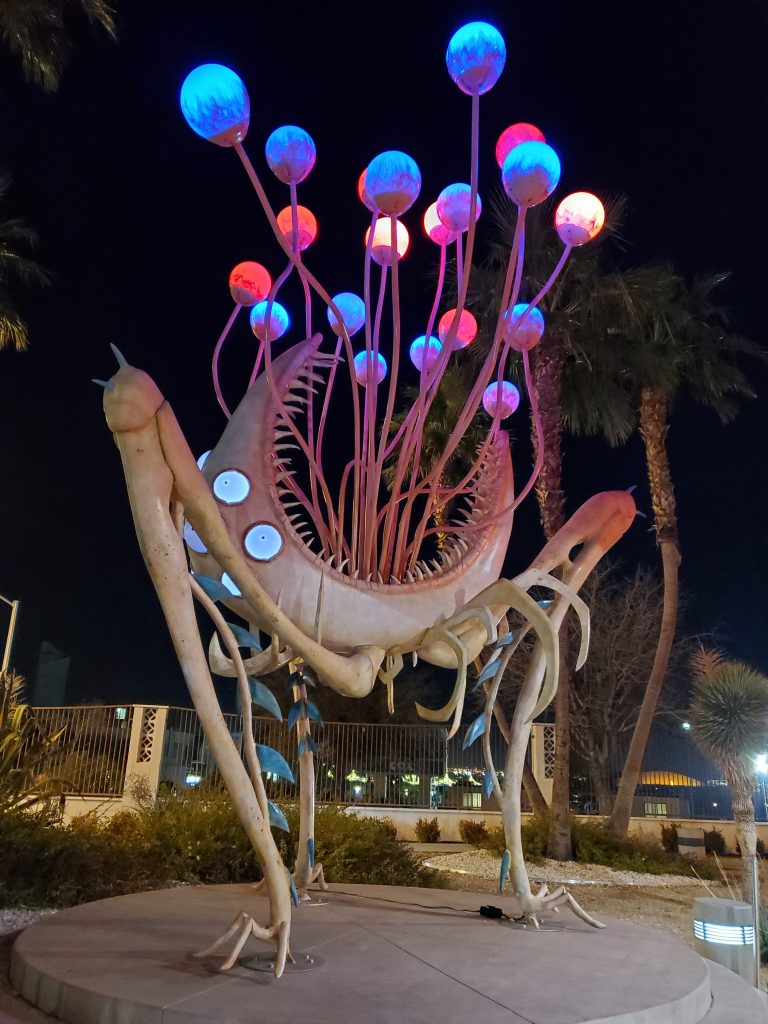
When staying in Vegas, there are surprisingly few RV park options, but we prefer Oasis Las Vegas RV Resort, south of the strip!
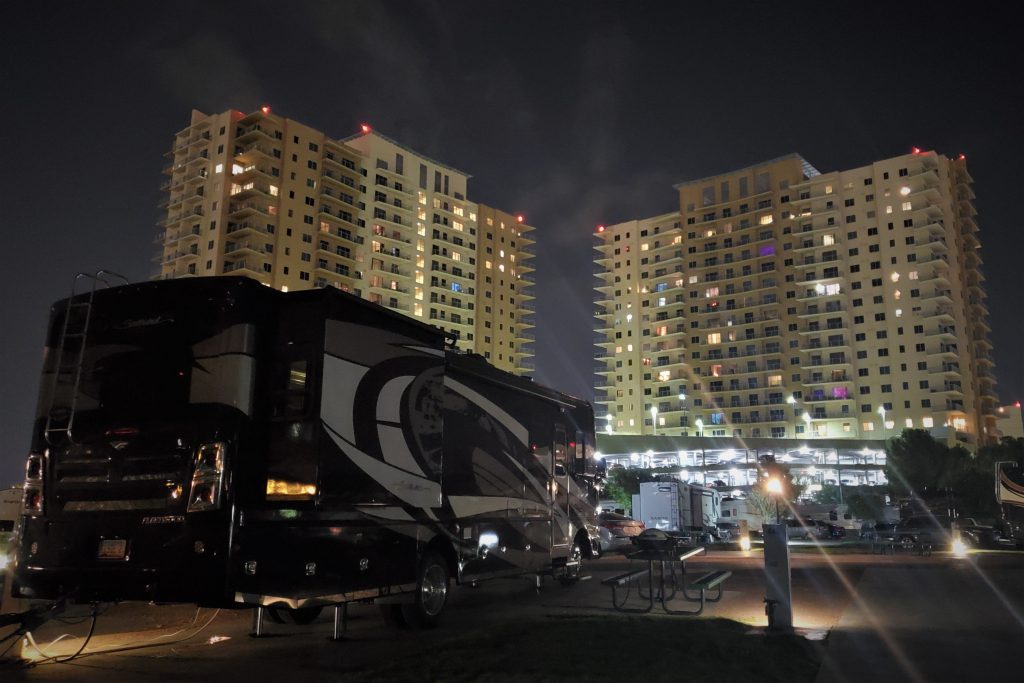
If you like your outdoor historical museums less flashy and more deserted, you might be interested in Old Car City USA! Over 4,000 old cars are scattered in a loosely-organized fashion throughout this multi-acre, forested site in Georgia, which seems to be slowly eating them alive. More about Old Car City USA and that area of the South in this post.
8. Nasa Johnson Space Center – Houston, TX
NASA’s center for human spaceflight training, research, and flight control are conducted features space artifacts, permanent and traveling exhibits, experiences and theaters related to the exciting future and remarkable past of America’s human space-flight program.
NASA Johnson Space Center in Houston is one of 10 space centers in the U.S., the most famous being Kennedy in Florida (from where most shuttles take off), and this one, for the popular but erroneous quote, “Houston, we have a problem.” (Actually said: Houston, we’ve had a problem here.)
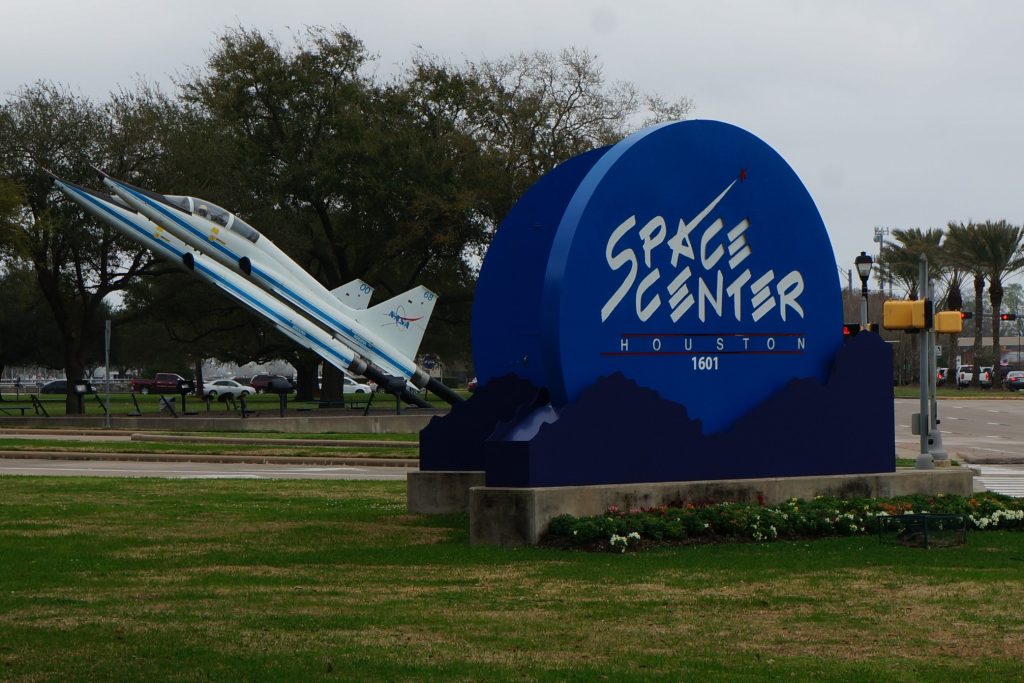
The science center has lots of cool, hands-on exhibits, but the real draw (at least to us) was the tram tour of JSC. This is not a replica. It is the actual home training base of the nation’s astronauts, International Space Station mission operations, Orion program, and more … the real deal!
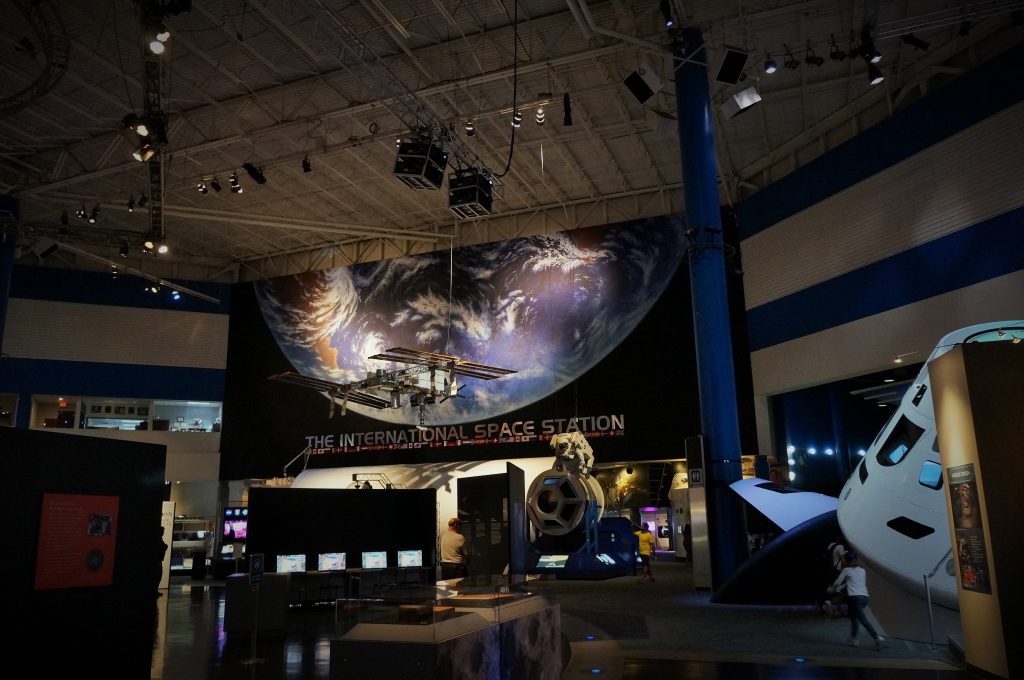
Mission Control is run out of a 1950’s-era building, with 1950’s-era furniture and actual drinking fountains (didn’t those go the way of the pay phone?). We were sat in the viewing gallery of the actual historic Mission Control from which NASA led Gemini (which we learned is “Ja-Mee-Nee,” not “Gem-Ah-Nigh”) and Apollo missions. Many important people have sat in these seats, including sitting presidents and even Queen Elizabeth. It’s retired now, but retains all the actual vintage stuff, which only looks fake because it’s so dang out-of-date.
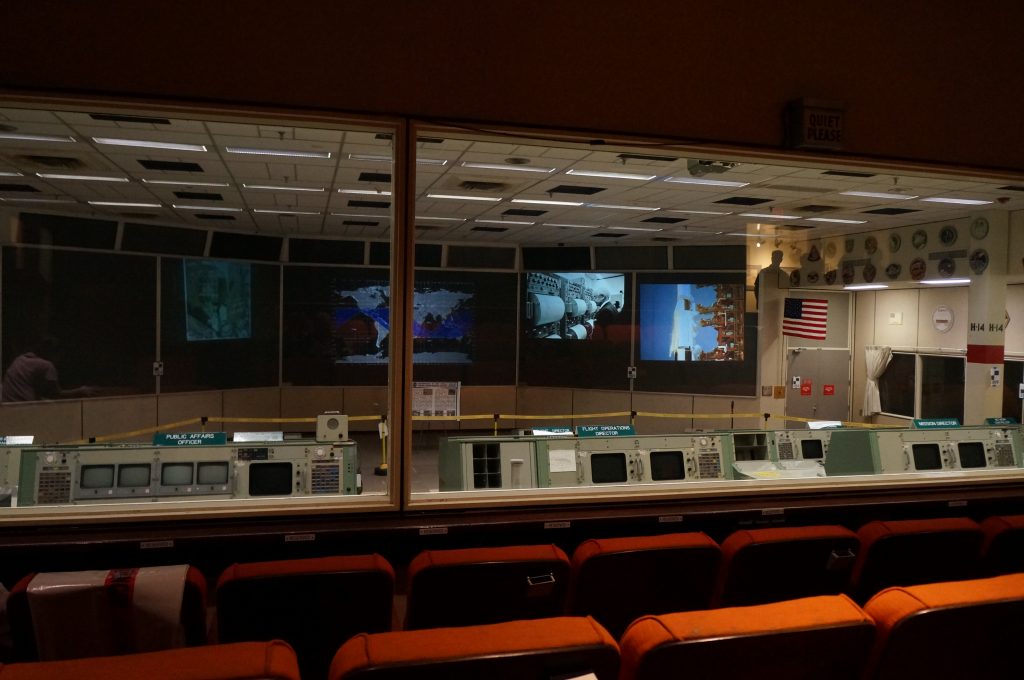
Also part of the tour is a huuuuuuge Space Vehicle Mockup Facility. It’s got an elevated path with full glass windows so visitors can look down and watch them at work. This is one of the places where astronauts train for missions, and where scientists are developing ever-more amazing space exploration vehicles. Again, not a museum … a working facility! So exciting!
The tour also takes visitors to Rocket Park (euphemistically named: actually a huge warehouse in a cow pasture), where one of of only three of the remaining actual Saturn V rockets is displayed. It is impossible to properly convey how huge this is!
The shuttle replica Independence is mounted on top of the historic, original NASA 905 shuttle carrier aircraft. Tally marks on the outside commemorate her many missions as a high-flying pack mule! This is the world’s only shuttle mounted in a shuttle carrier aircraft, and the only one the public can enter.
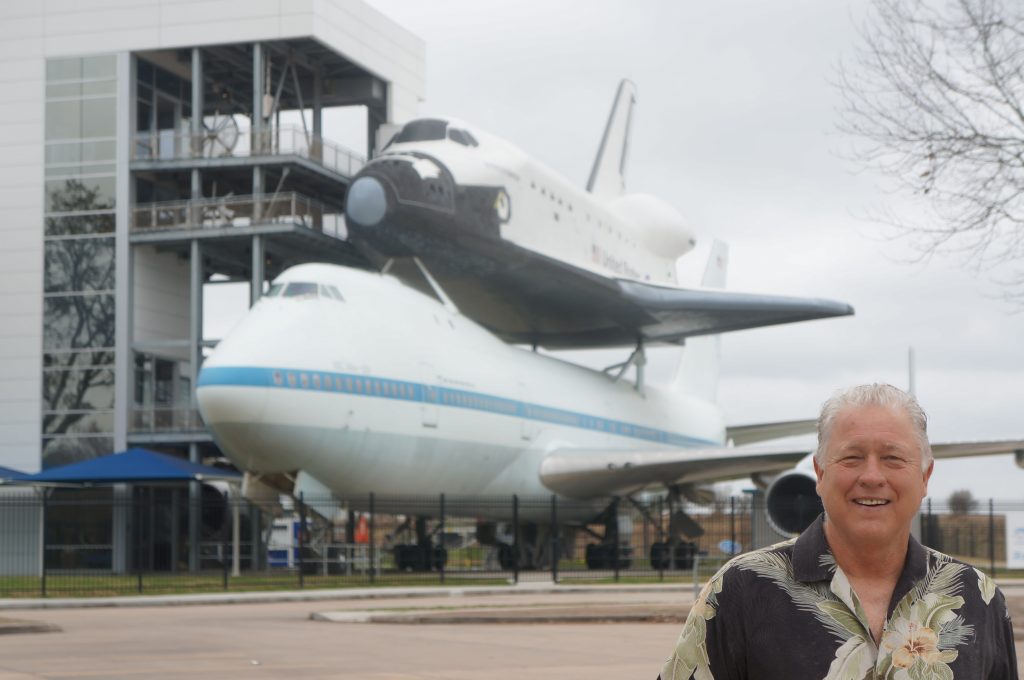
Interactive exhibits and presentations really bring space life to real life! Dedicate at least half a day to this amazing place, and you’ll come away with a renewed understanding and appreciation of the new frontiers of space travel!
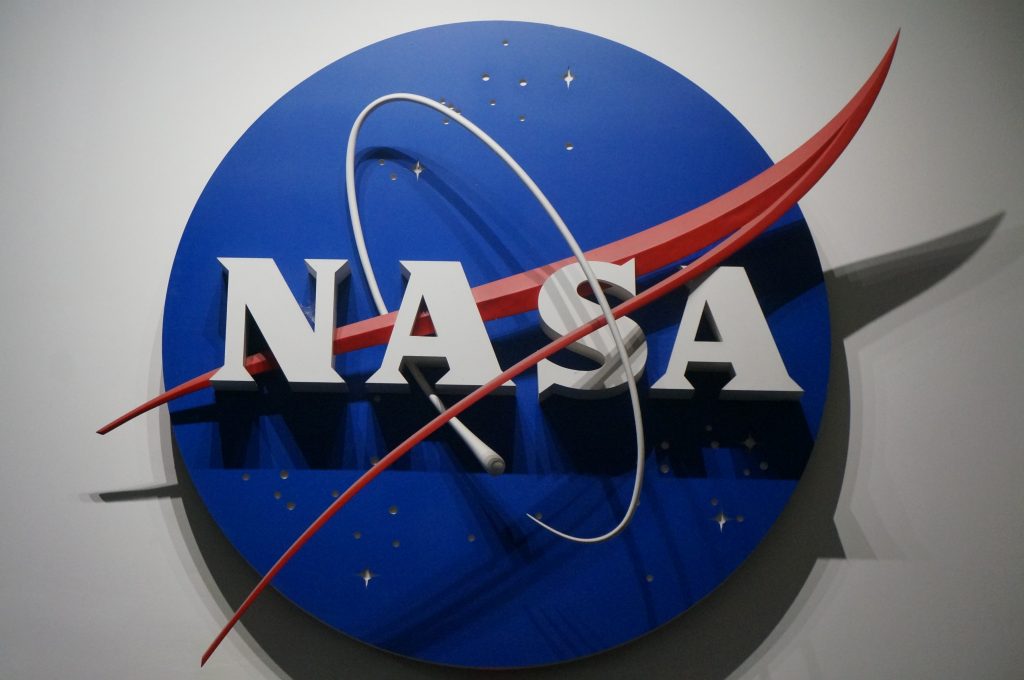
If pride in our outer space exploration has you feeling patriotic, you might also enjoy this post about the Zippo Lighter and Case Knife Museum - proudly made in the USA for decades!
9. Bannack State Park Ghost Town – Bannack, MT
Bannack State Park is the site of Montana’s first major gold discovery in 1862, preserving over 50 buildings that line Main Street with their historic log and frame structures that recall Montana’s formative years.
Bannack (near Dillon, MT) is one of the best preserved ghost towns in Montana. Not technically a “museum,” it is indeed a fantastic “living history” experience with over 50 buildings are still standing, each with a story to tell. You’re shockingly allowed to tromp through most of them. Bring Fido … even doggies are allowed inside!
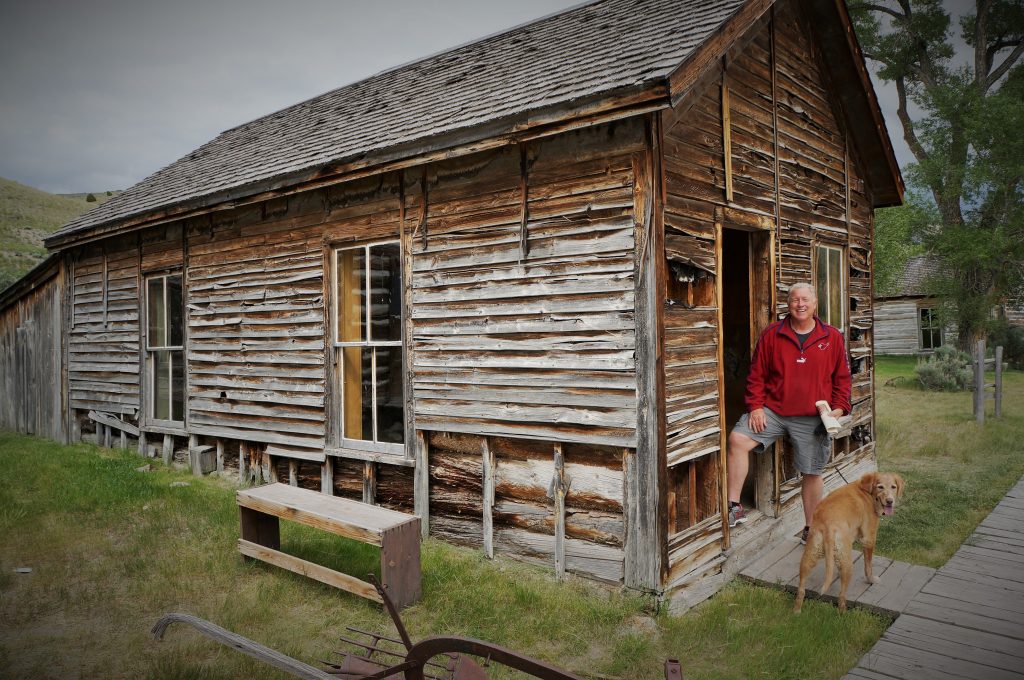
Bannack’s history began in 1862, when gold was discovered along the banks of Grasshopper Creek, so named for the dense grasshopper population in the area. The subsequent gold rush led Bannack to become the first territorial capital. Bannack’s gold was special. While most gold is 85-90% pure, some of Bannack’s assayed 99.5% pure. Gold scales were found in practically every establishment in town as people paid for goods and services directly with gold instead of bothering to convert to currency. Original mining tools are displayed.
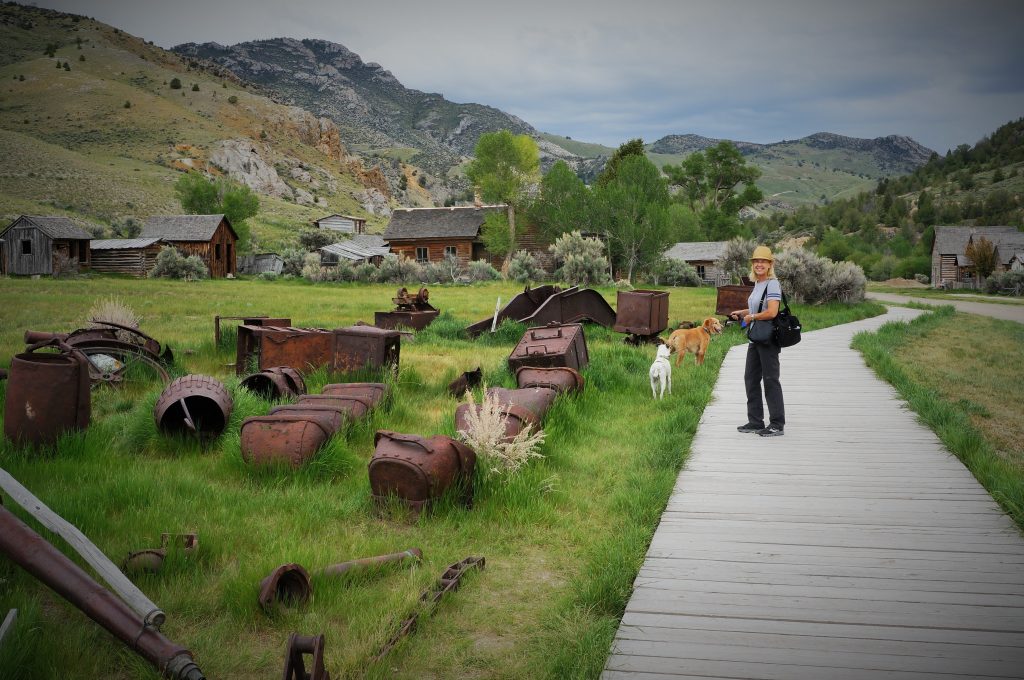
The Hotel Meade was purchased for $1,250 and was the center of town social activity. It was originally Montana’s first courthouse and was also Montana’s first hotel. Popular activities for the town’s 3,000 residents were dances, spelling bees (the height of excitement in the late 1800’s?!), traveling theatre troupes, fishing, and even visiting the town’s bowling alley or ice skating on the frozen creek for five miles or more. Bannack even had it’s own baseball team and played against other rural communities’ teams. When you visit in winter today, they will lend you ice skates to skate on the frozen dredge pond!
When the gold rush was at its peak, the two jail cells were rarely used … offenders were simply warned, banished or hanged. Nobody wanted the job of watching prisoners when they could be working their gold claim instead! Prisoners were chained to metal rings attached to the floor. The jail was built such that if you looked out through the barred windows, the gallows were plainly visible … just a reminder.
Beyond the saloons, gambling halls and brothels, many residents socialized within fraternal organizations like the Free Masons. The fraternal Masonic Lodge (upstairs) shared a building with the schoolhouse (downstairs). The first schools in Bannack were “subscription” schools … essentially private schools with parents paying tuition for their children to attend. Life in Bannack was tough and so was school, with snow blowing in through the cracks between the wallboards, and very few schoolbooks.
The rustic Bannack Cemetery was used starting in 1876, and over 60 marked graves provide a testament to the harsh realities of life in a frontier town, where most inhabitants died very young.
With the decline of easy mining, the majority of population moved on and Bannack was on its way to becoming a ghost town. Once the proud capital of the Territory of Montana, it became abandoned until the state acquired the property and buildings to preserve Bannack for future generations.

If you're fascinated with living history towns like Bannack, you'll also want to check out Bayhorse Ghost Town outside Challis, Idaho!
10. Corning Museum of Glass – Corning, NY
The Corning Museum of Glass is the world’s largest space dedicated to the art, history and science of glass. It showcases award-winning, interactive science and technology galleries, the most comprehensive glass collection in the world, and an internationally renowned glassworking school.
New York’s “Finger Lakes” region is the land of gorges, and waterfalls, and sloping shorelines, and luscious rolling farm fields cascading down to a series of lakes. Watkins Glen is not far from Corning, NY, and its fabulous, must-visit Corning Museum of Glass.

It’s part modern art museum ….

part history lesson ….
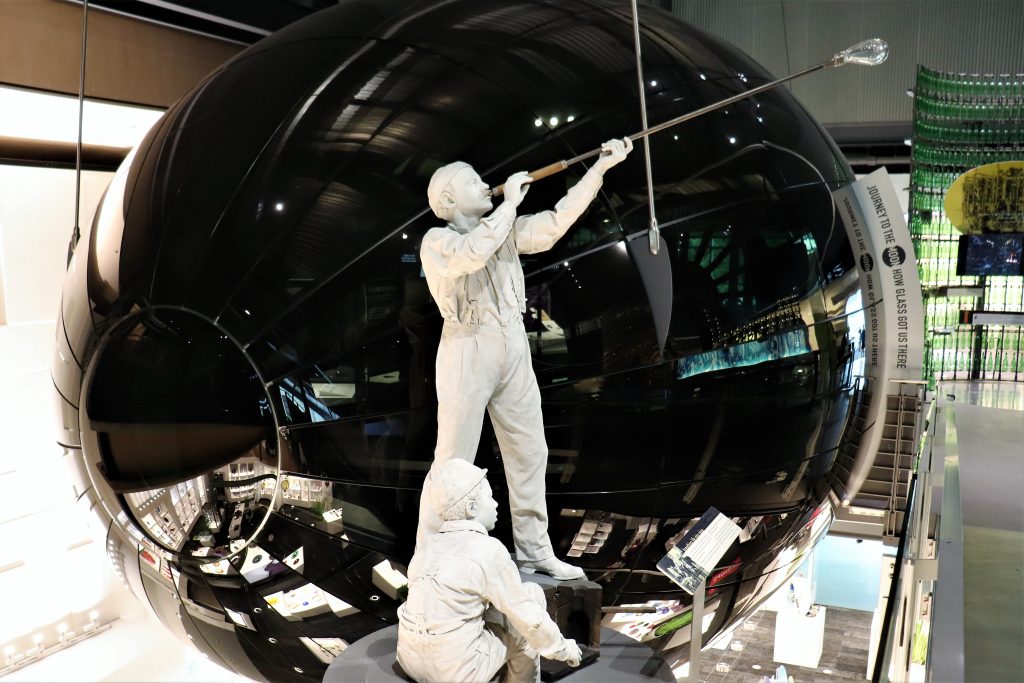
part science and learning center ….
part gift-shopping extravaganza ….
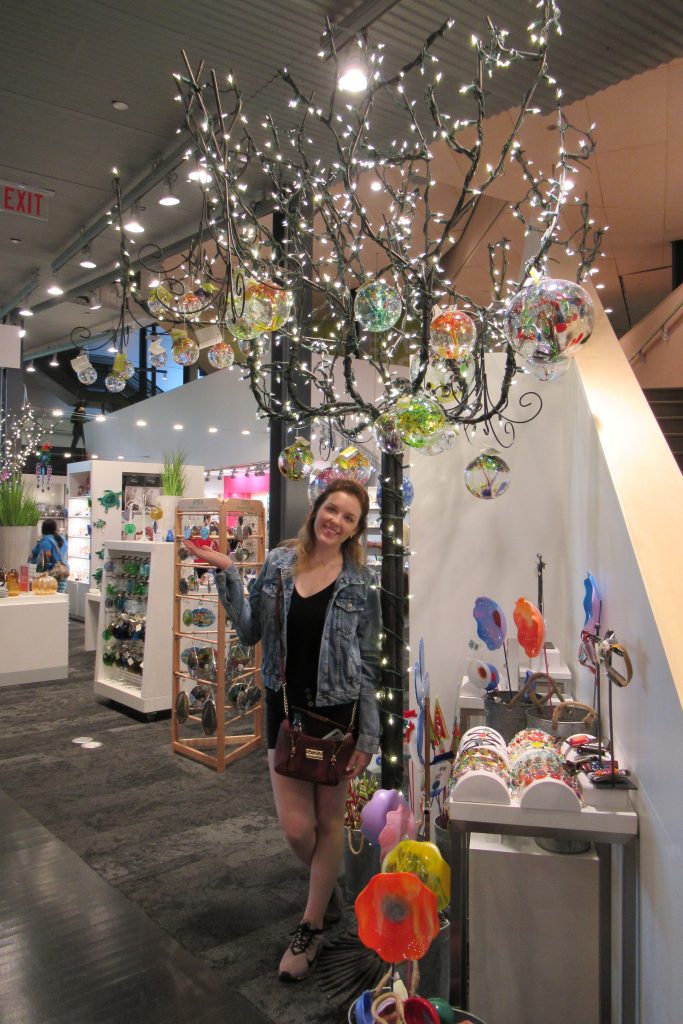
part photographer’s playground ….
And, most importantly, the place you can MAKE YOUR OWN GLASS PROJECT!
You might think that a glass museum wouldn’t hold much fun … but you’d be wrong!!! Beautiful, interesting, fun and inspirational … that is the Corning Museum of Glass! Check it out!
A mere 18 miles from Corning, Watkins Glen State Park has terrific RV camping and a super-fun Gorge Trail that should be part of your adventure! But come prepared ... in 2 miles you're going to experience 832 steps … 19 waterfalls ... babbling brooks and cool pools passing through 380 million year old sandstone and shale … and endless opportunities to get very very wet! It's a blast! Read more about Watkins Glen here!
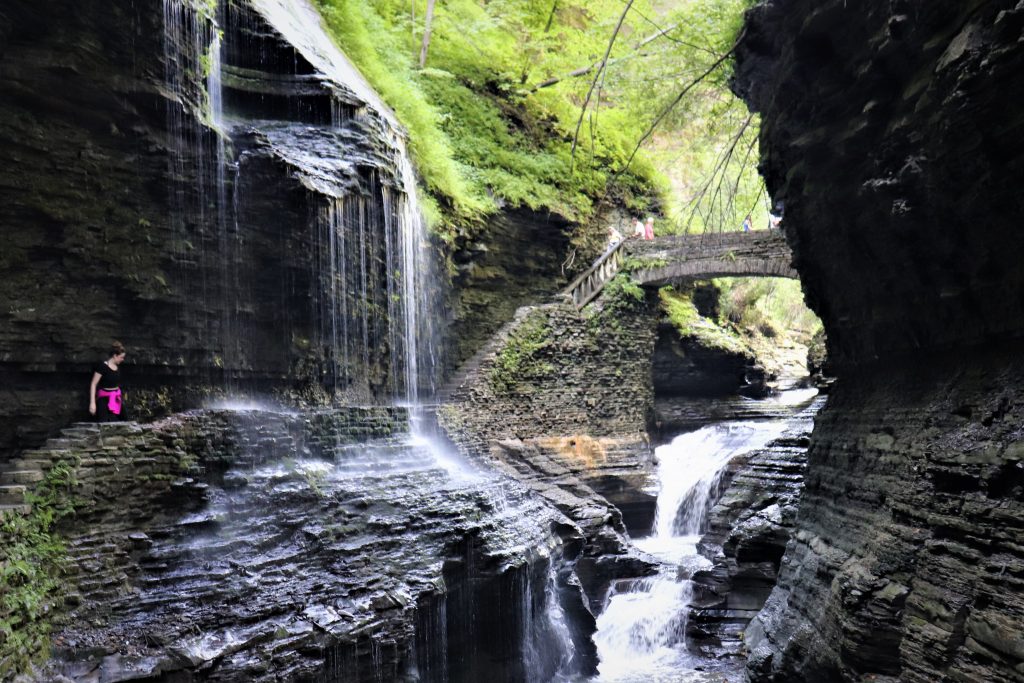
Traveling across the country, we have come to realize that every small town has some kind of museum highlighting the local area’s pride and joy, no matter how small. Pencil sharpener museum, anyone …?
There you have it … the Charming Adventures recap of our 10 favorite museums with the “WOWZA” factor, and subject matter you won’t soon forget! Certainly, check their websites before heading out for any recent changes, but we give all of these museums two thumbs up and our heartiest recommendation! Be sure to let us know some of your other favorites!
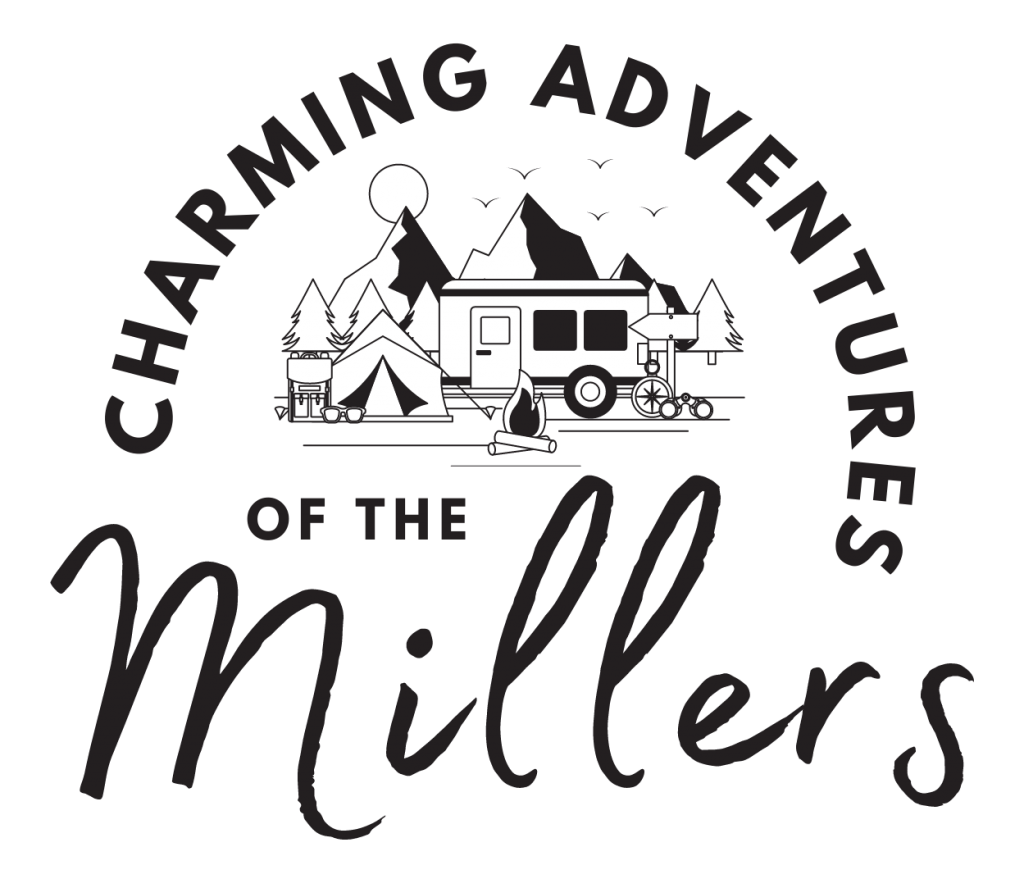
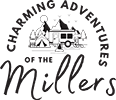
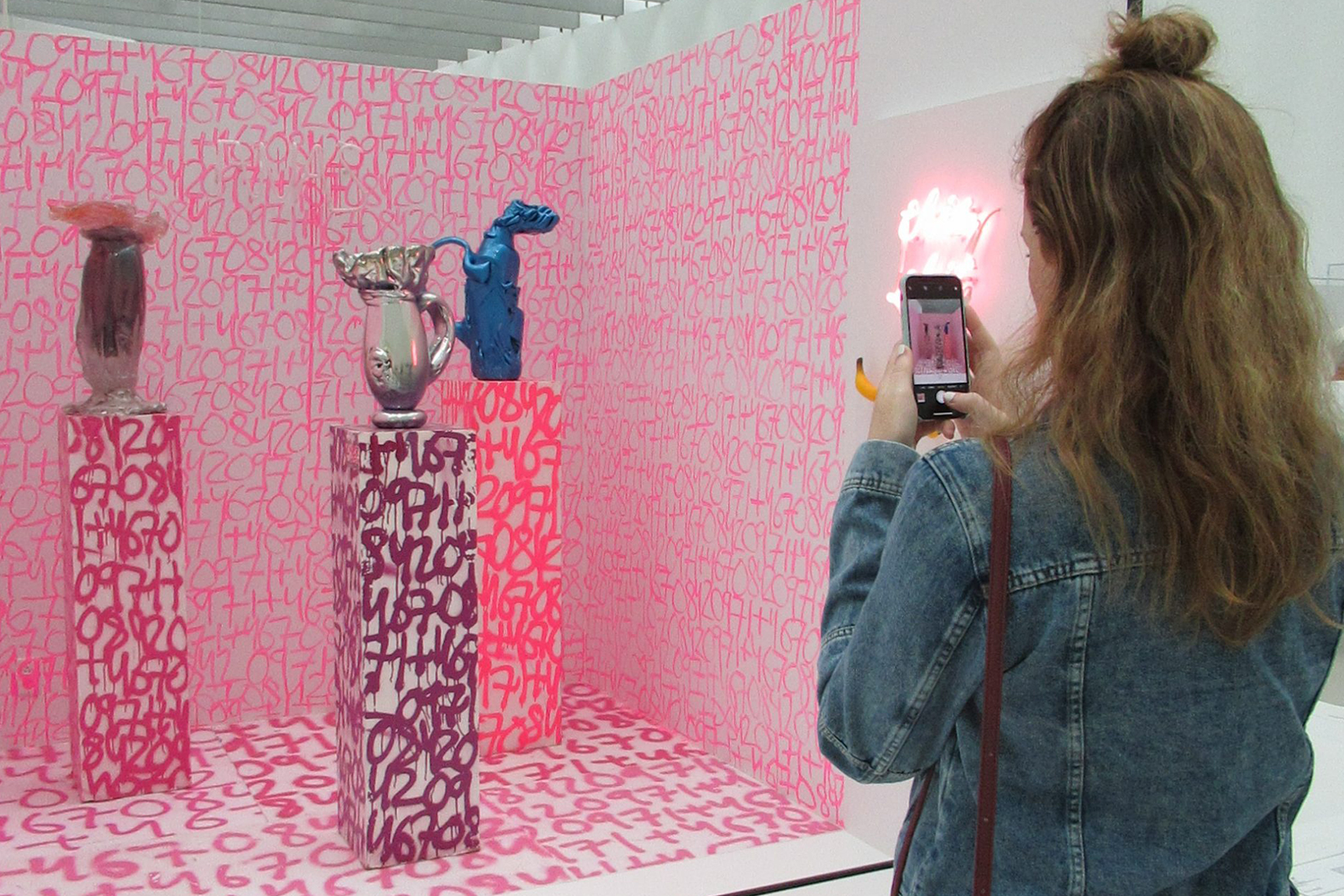
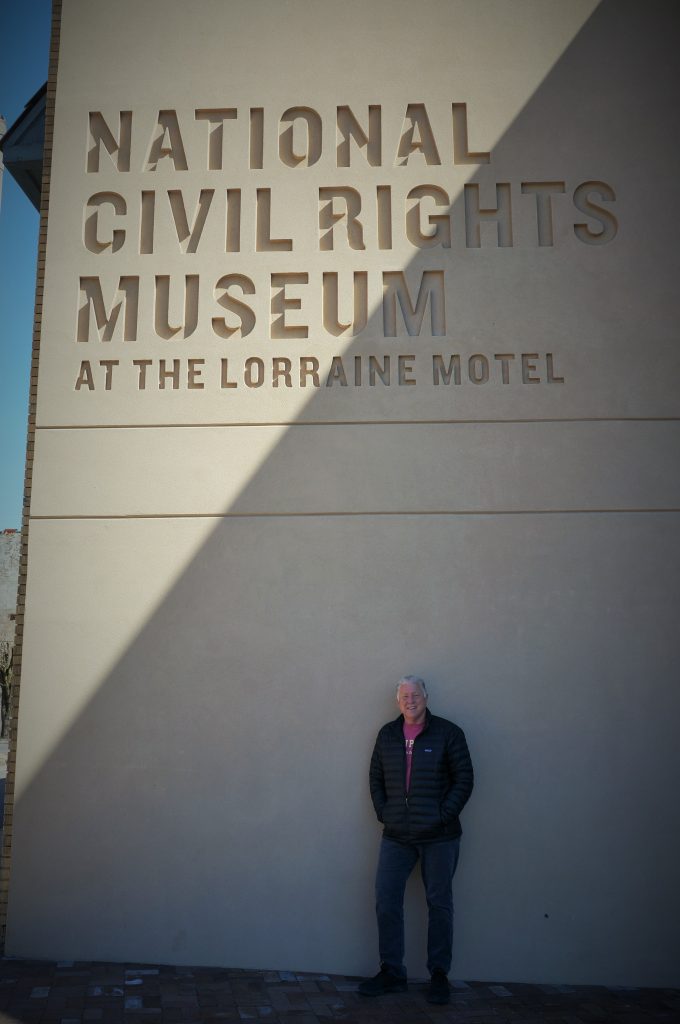
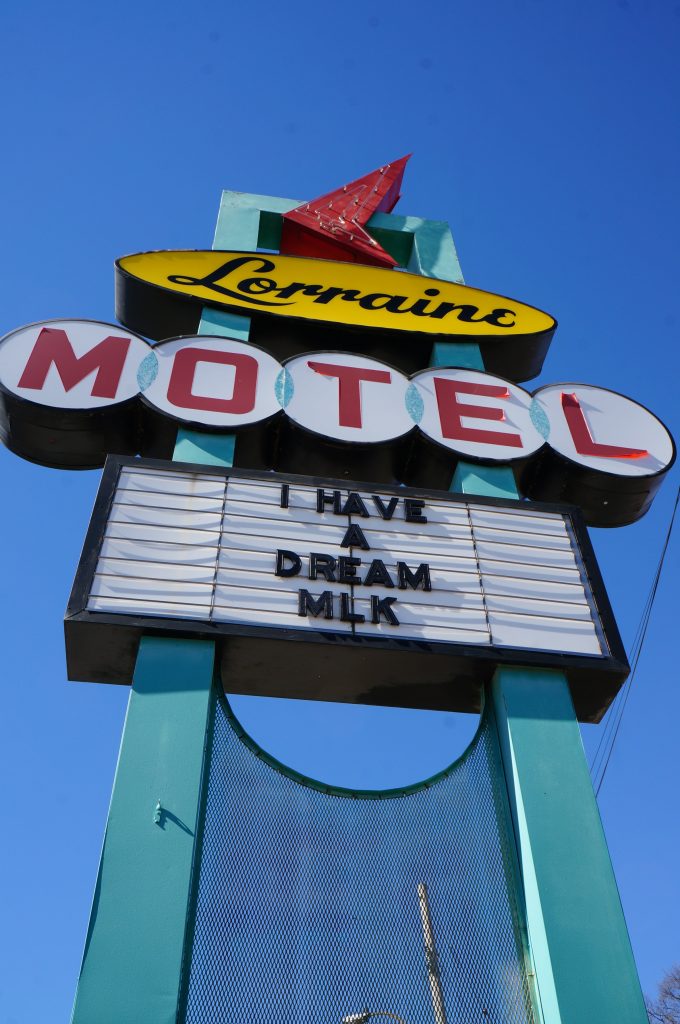
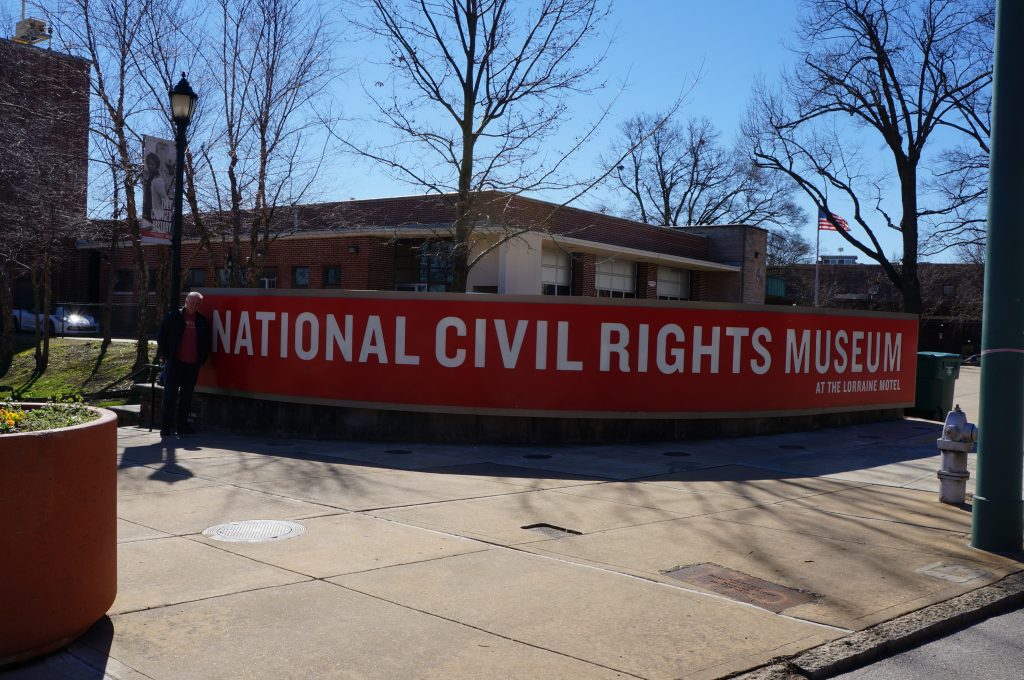
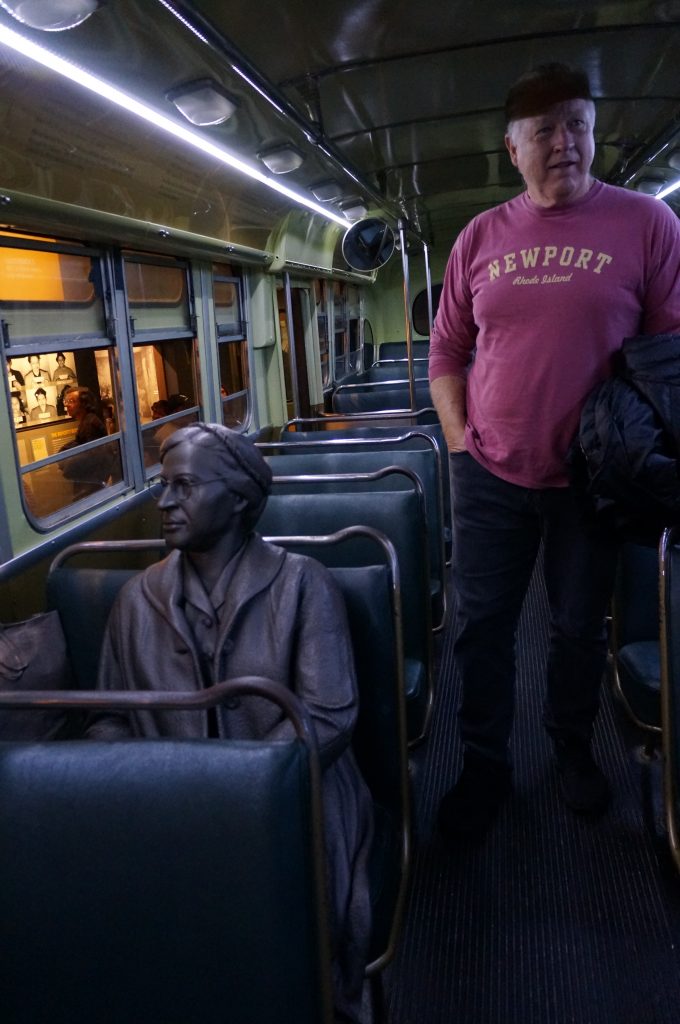

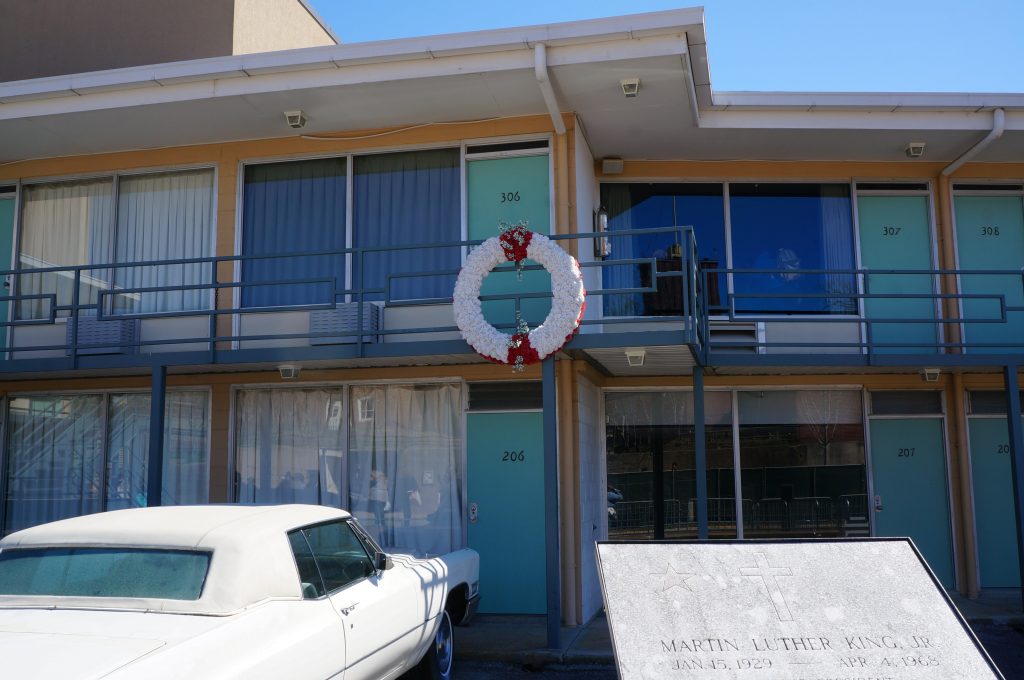
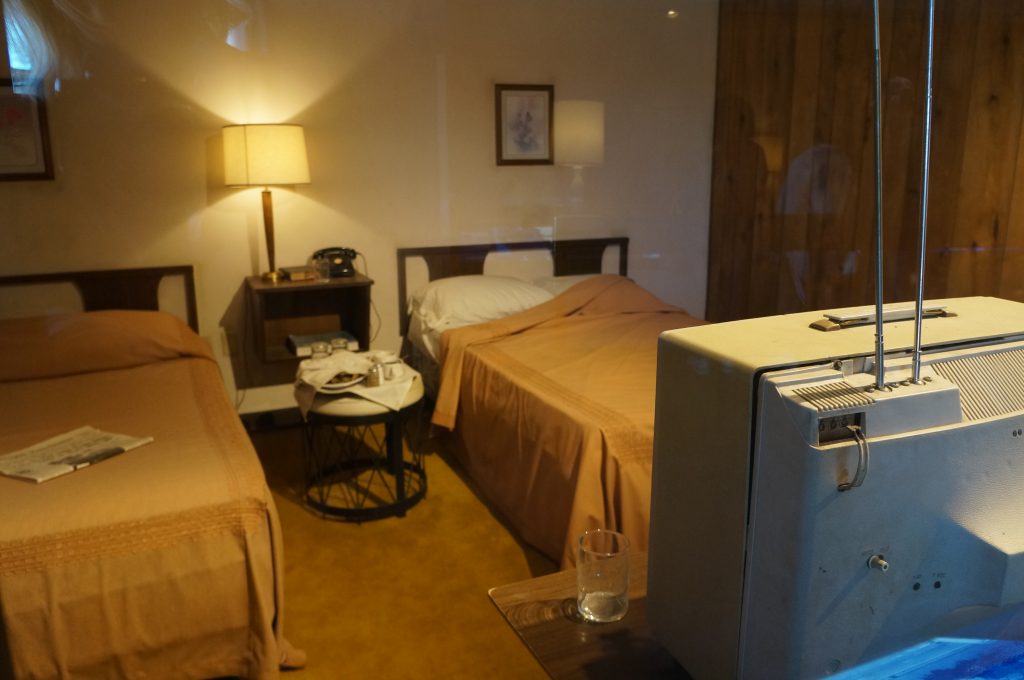

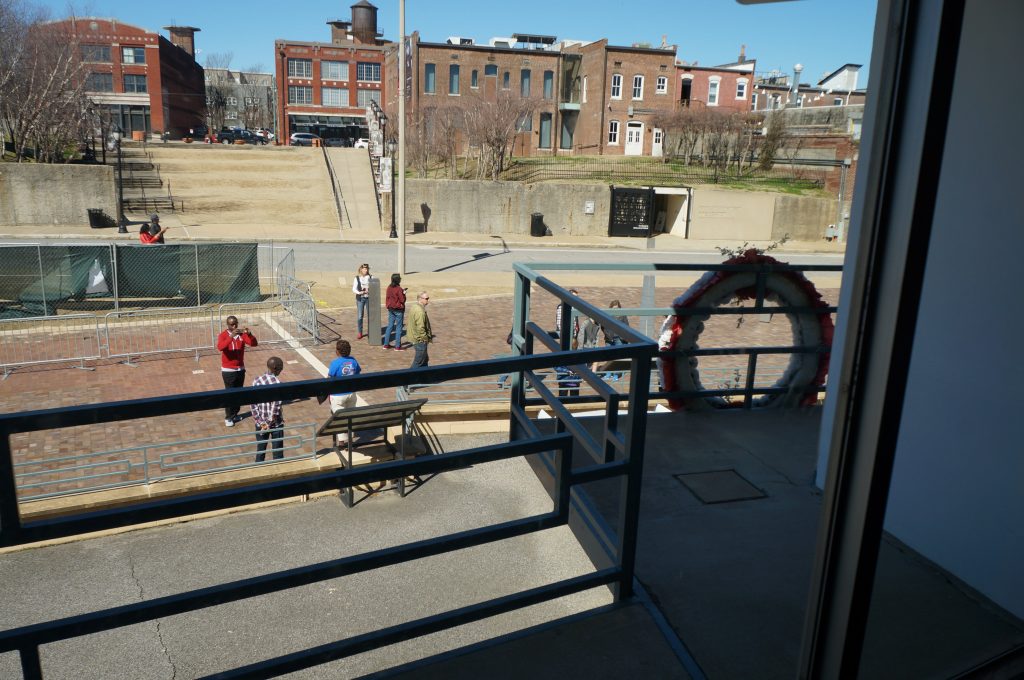
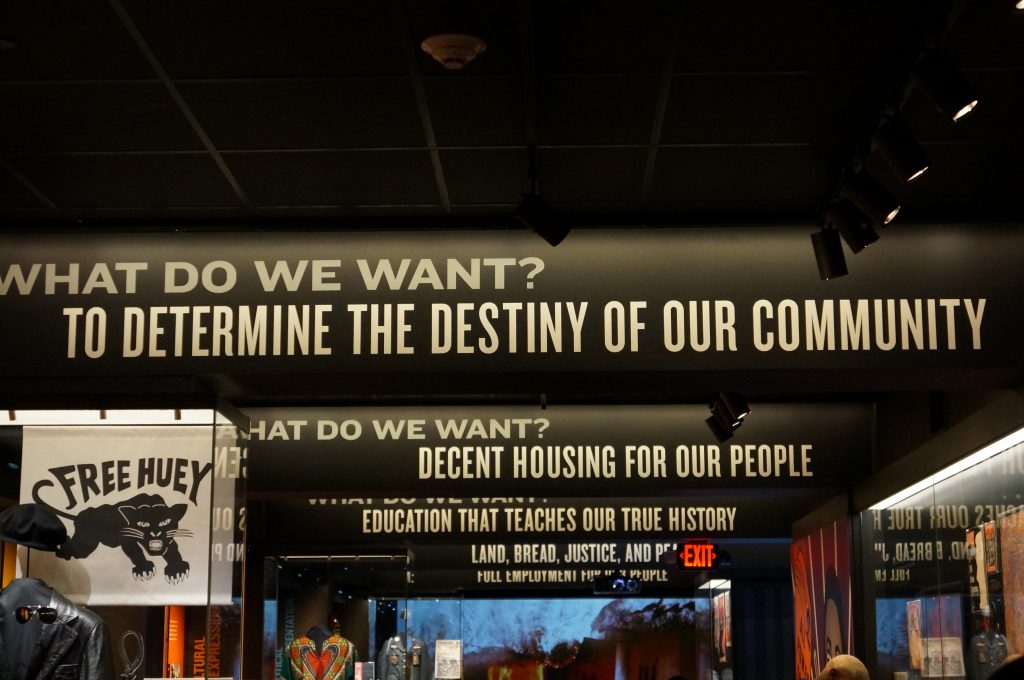
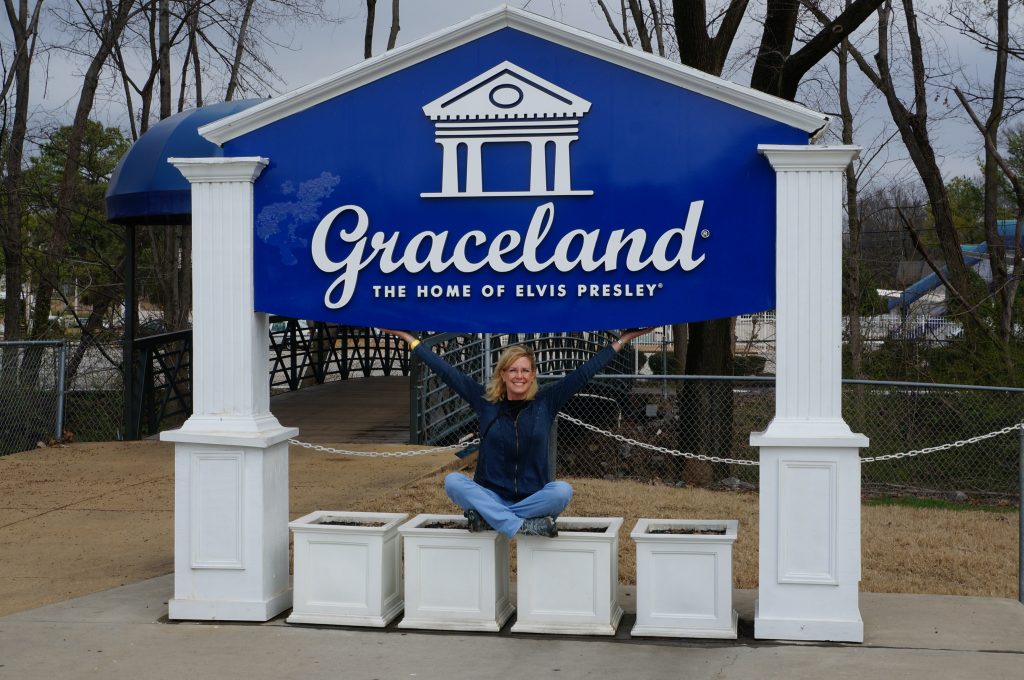
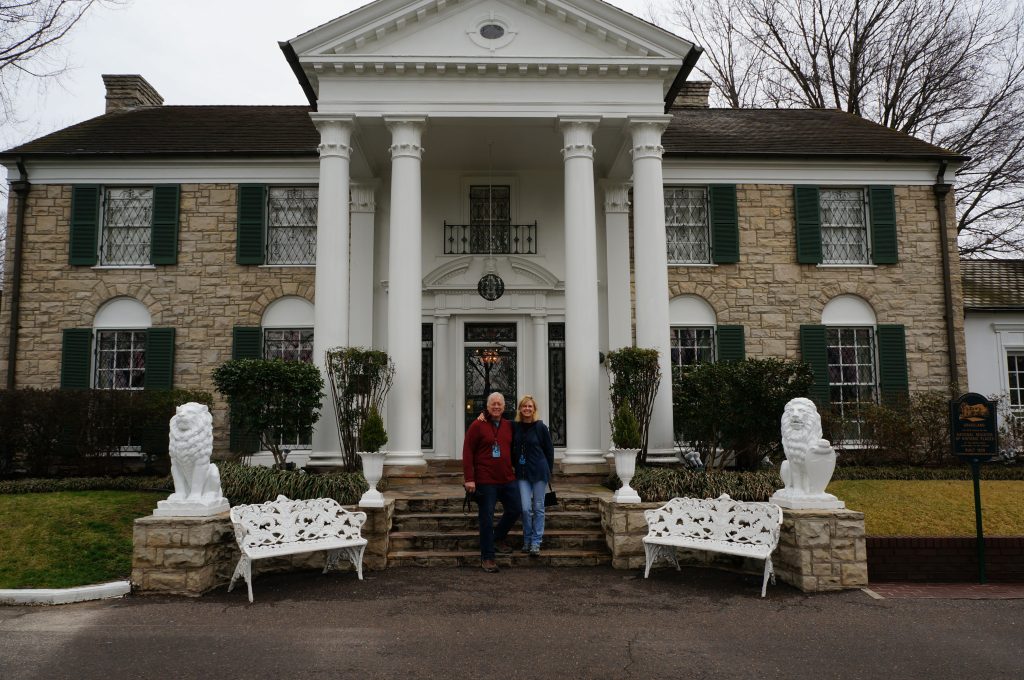
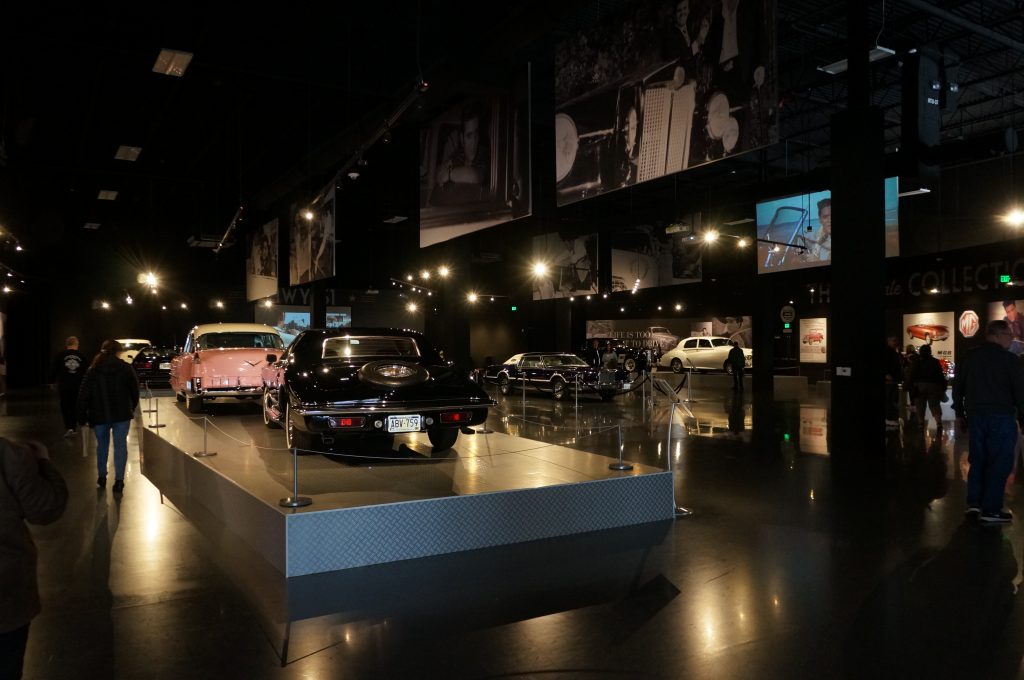
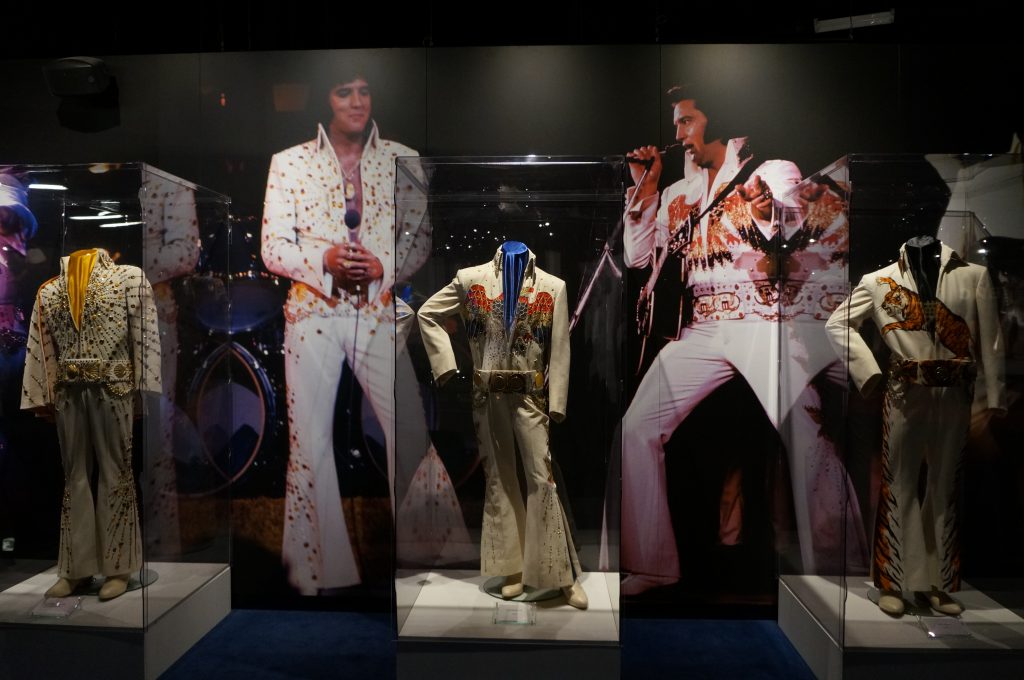
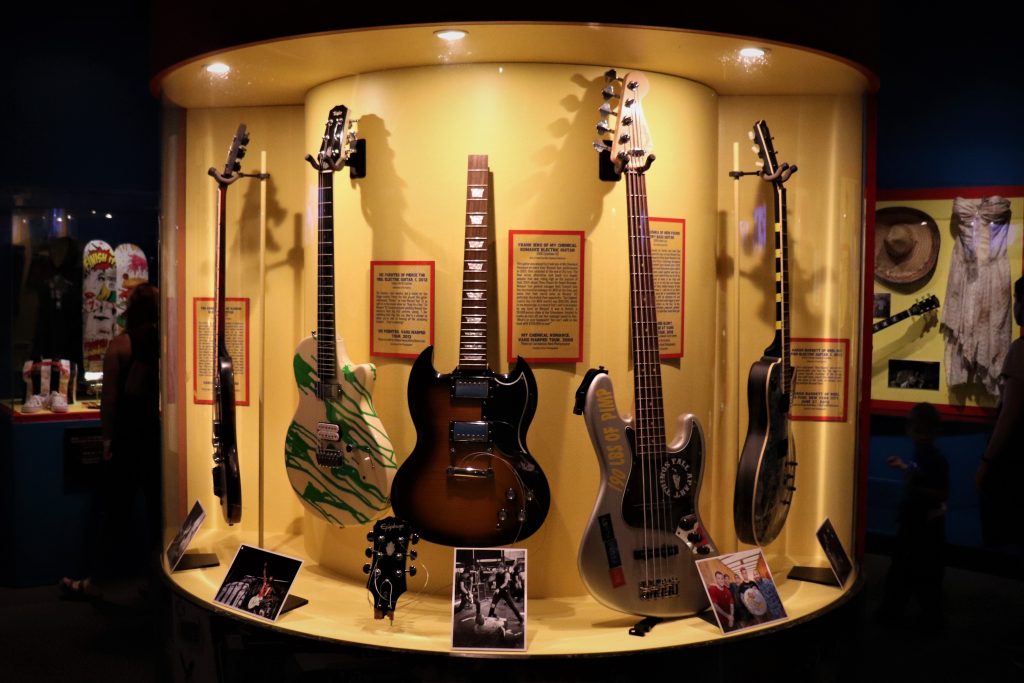
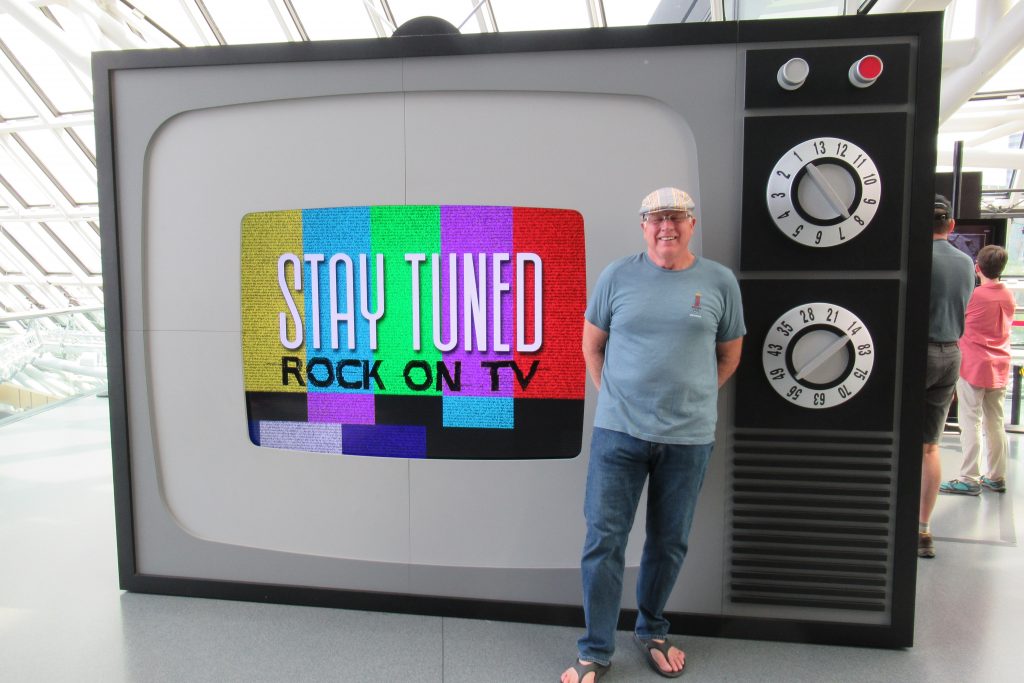
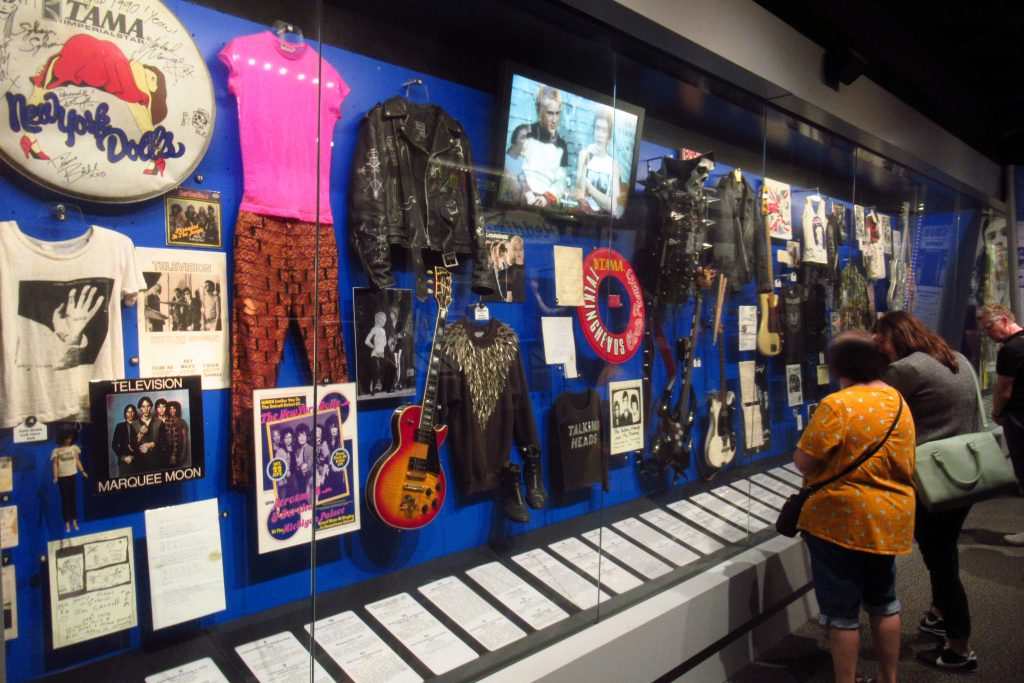

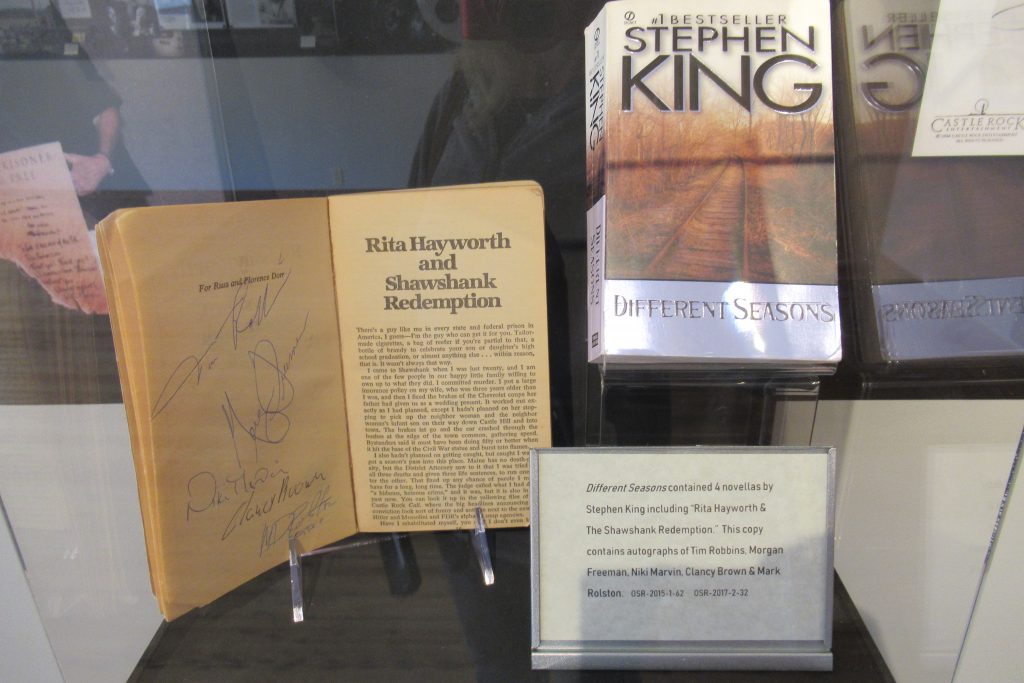
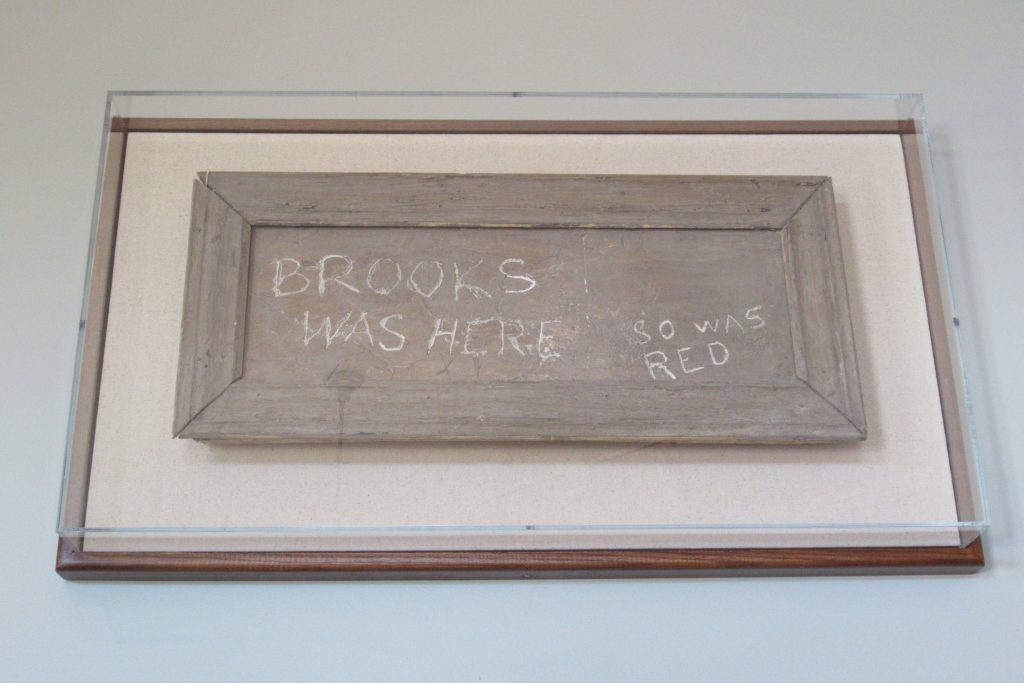
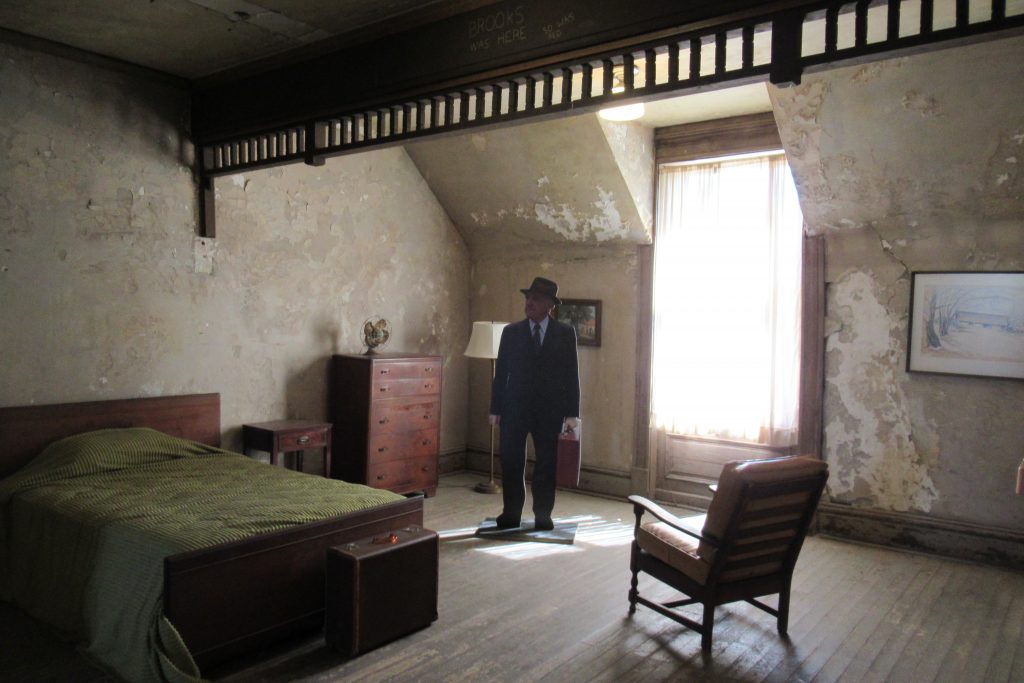
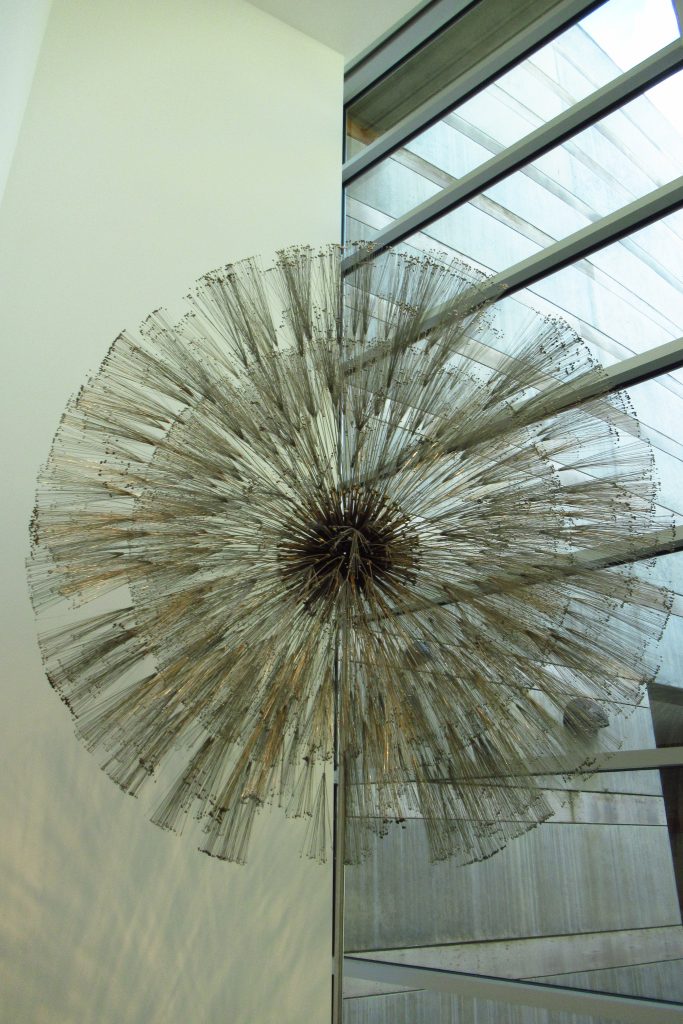
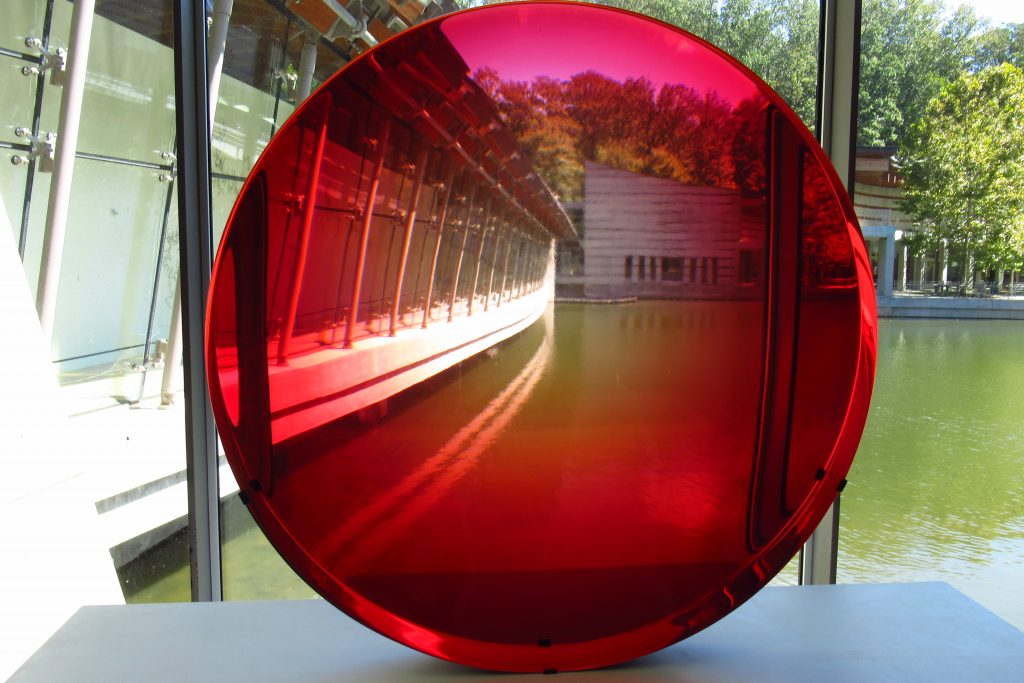
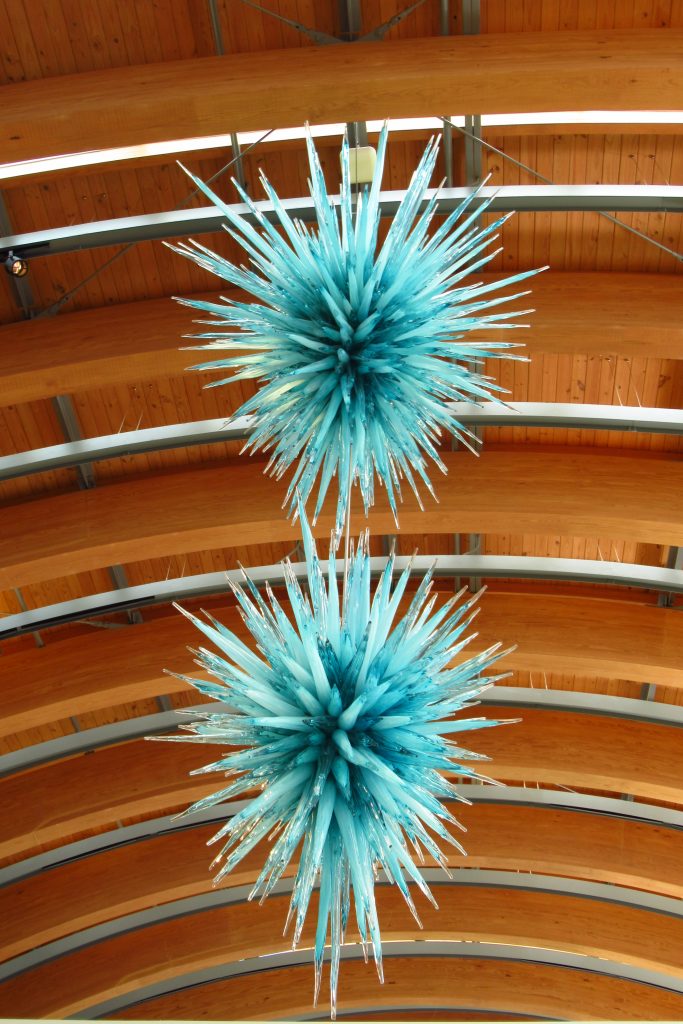
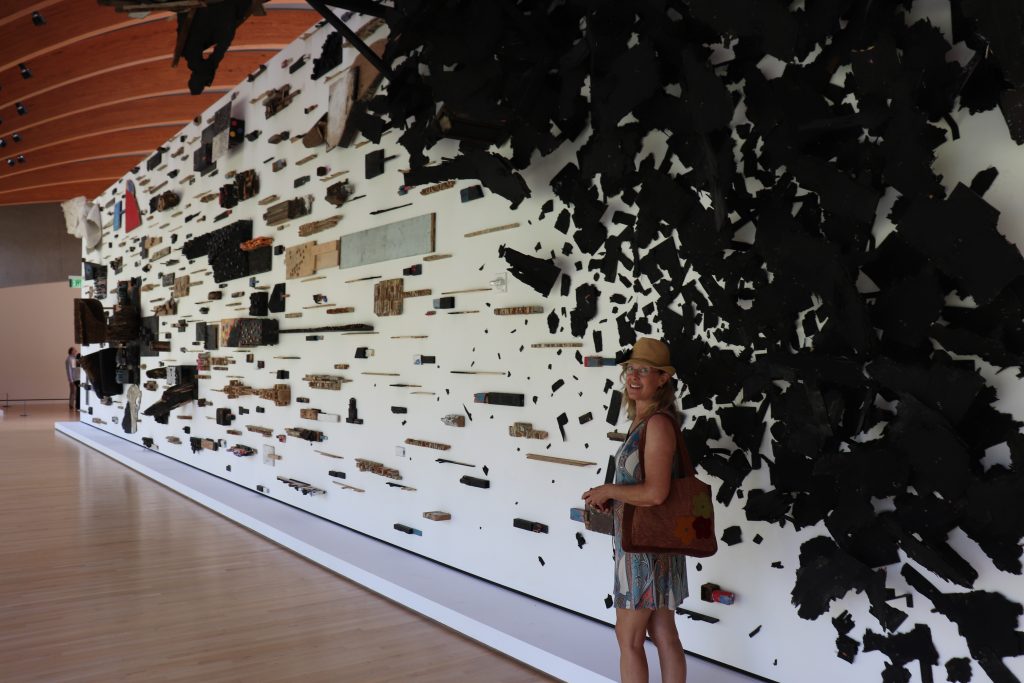
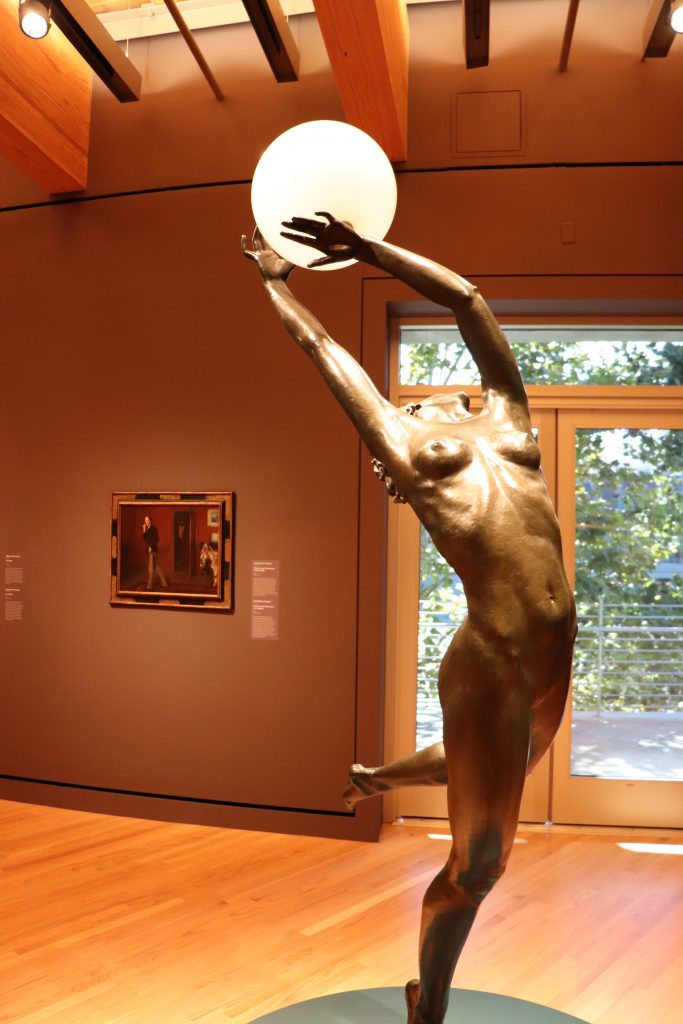
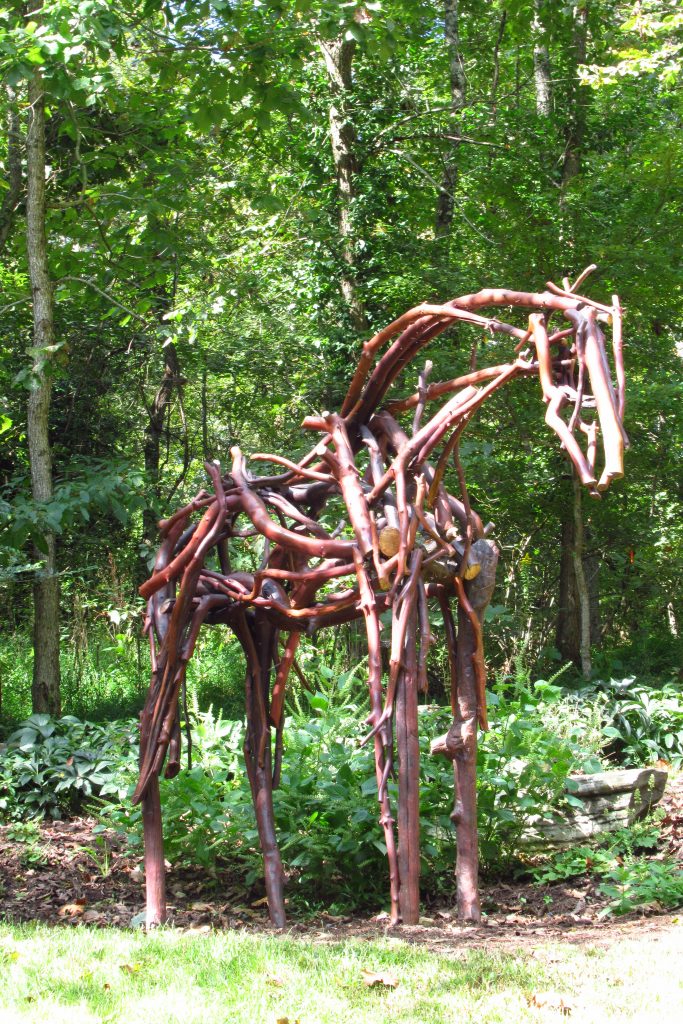
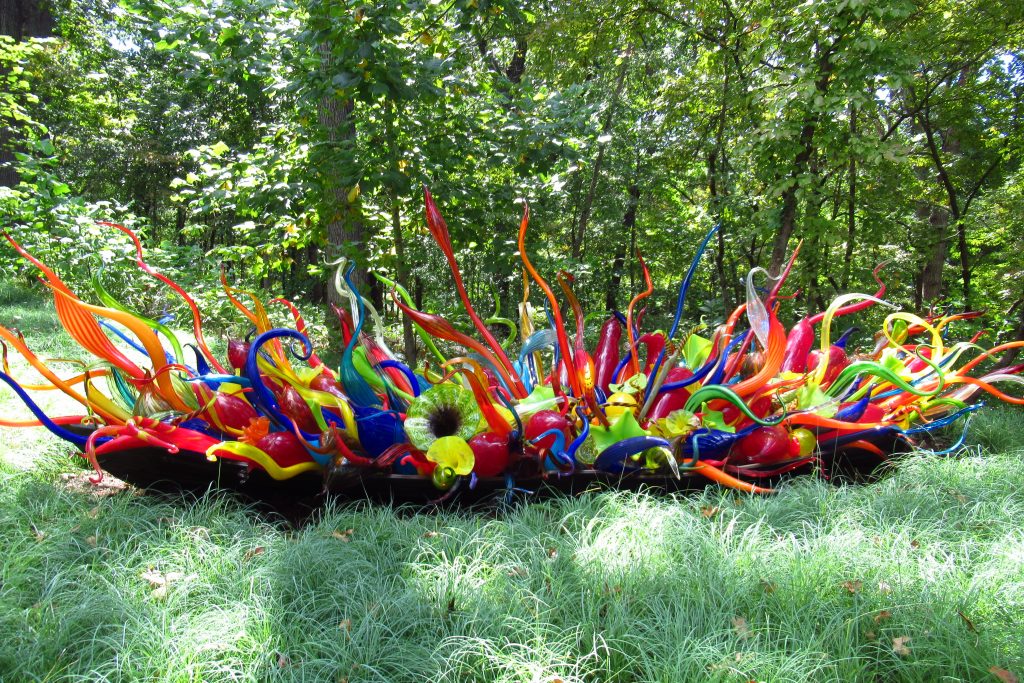
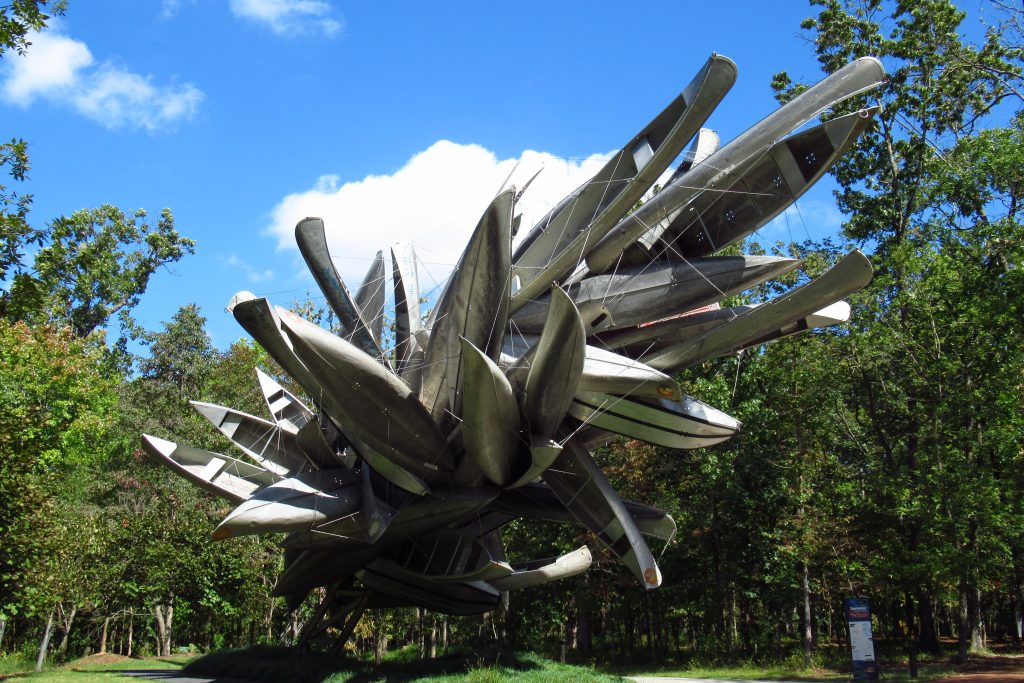
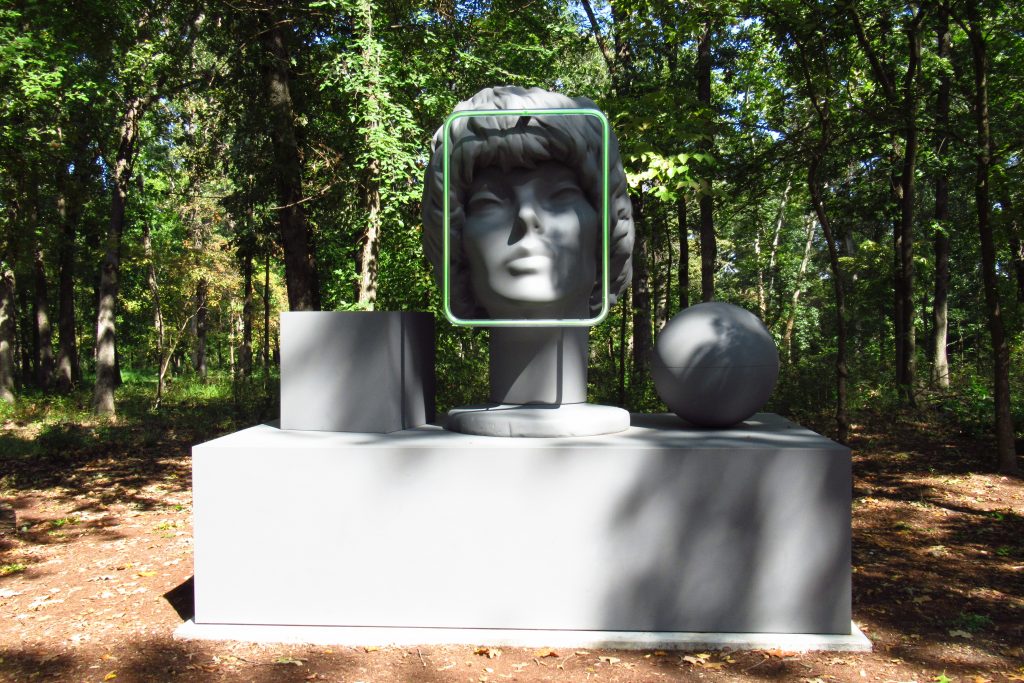
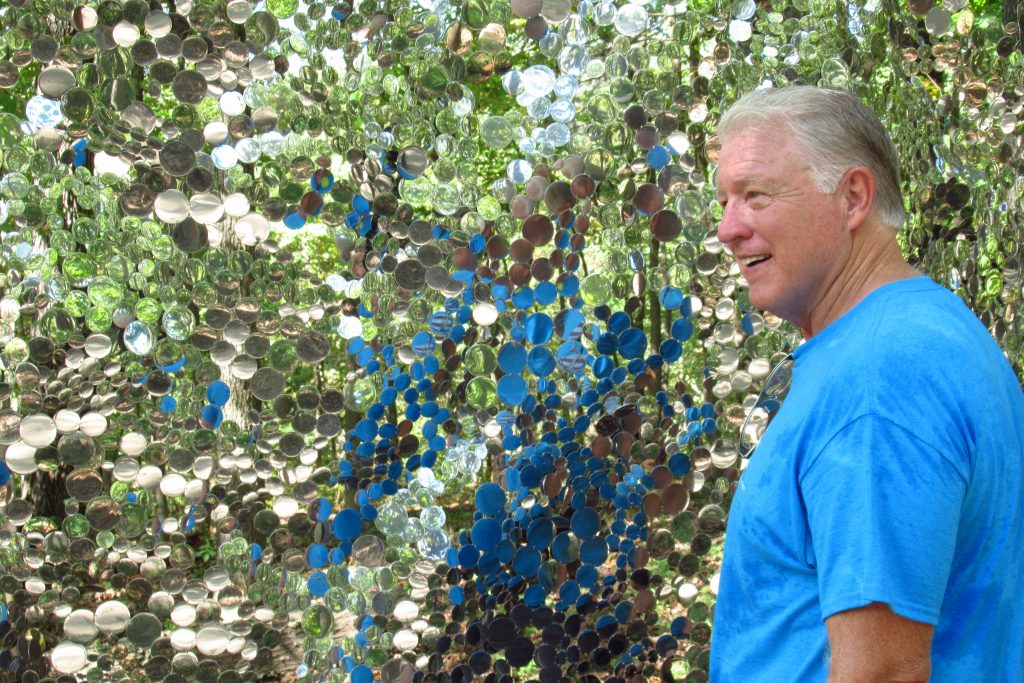
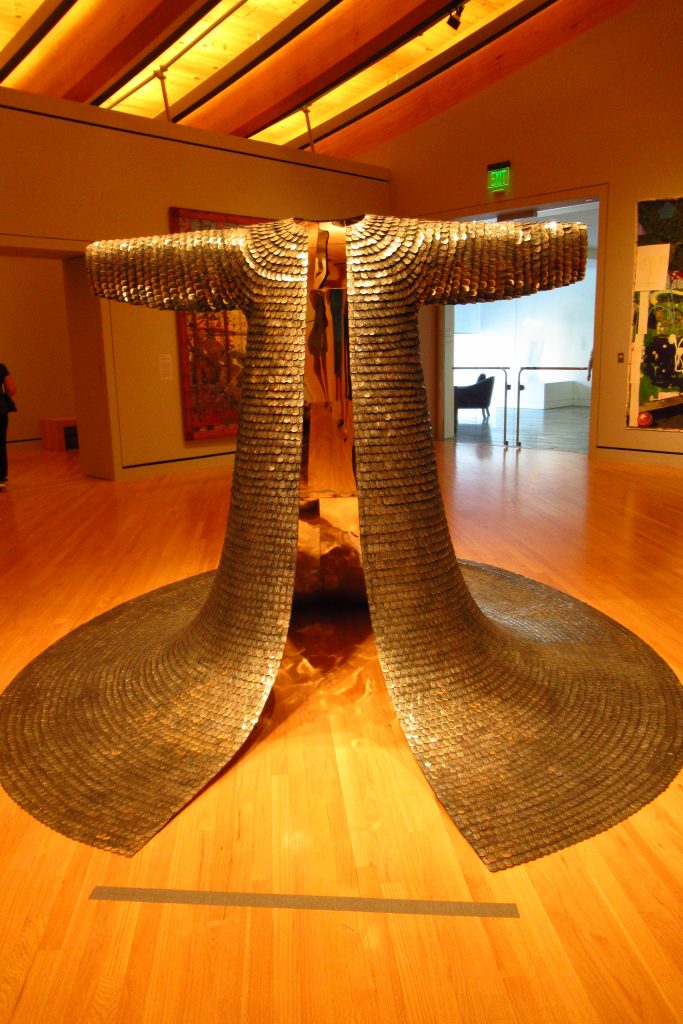
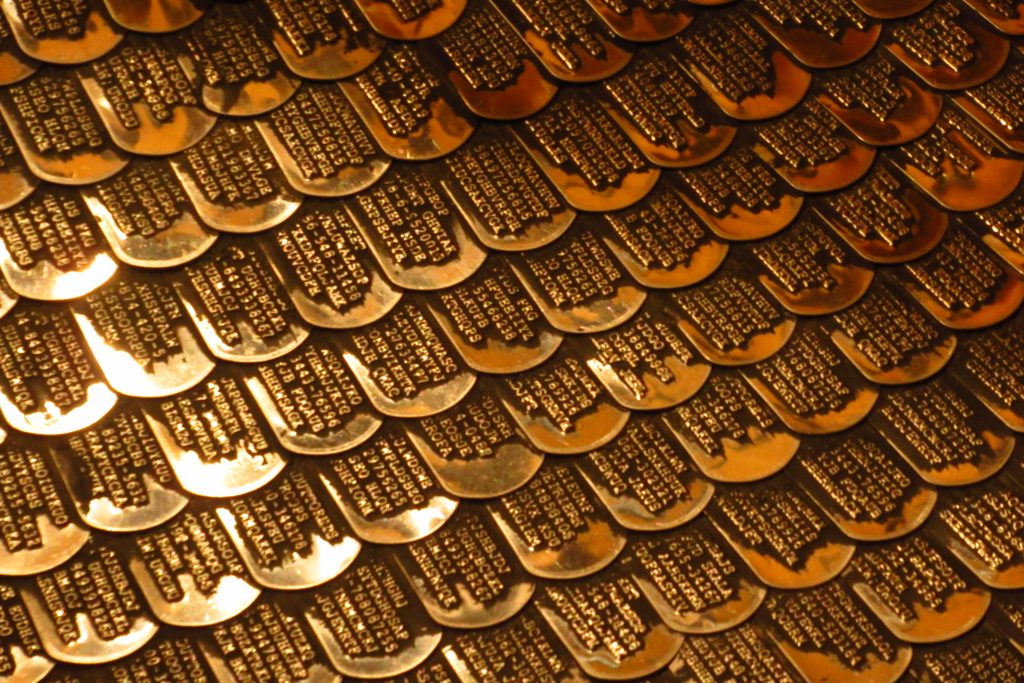
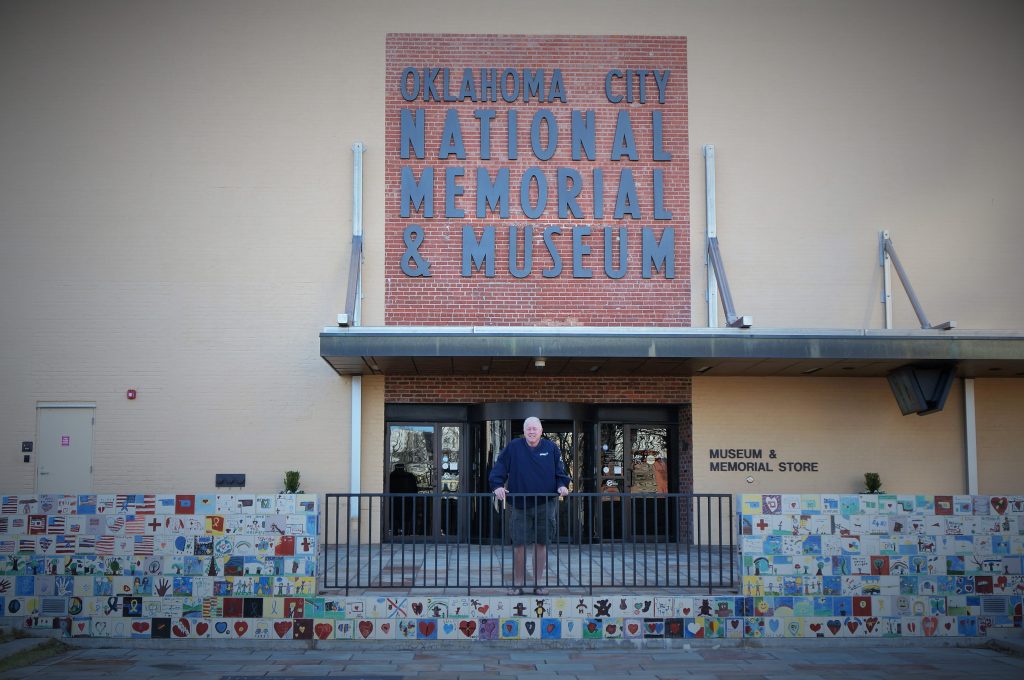
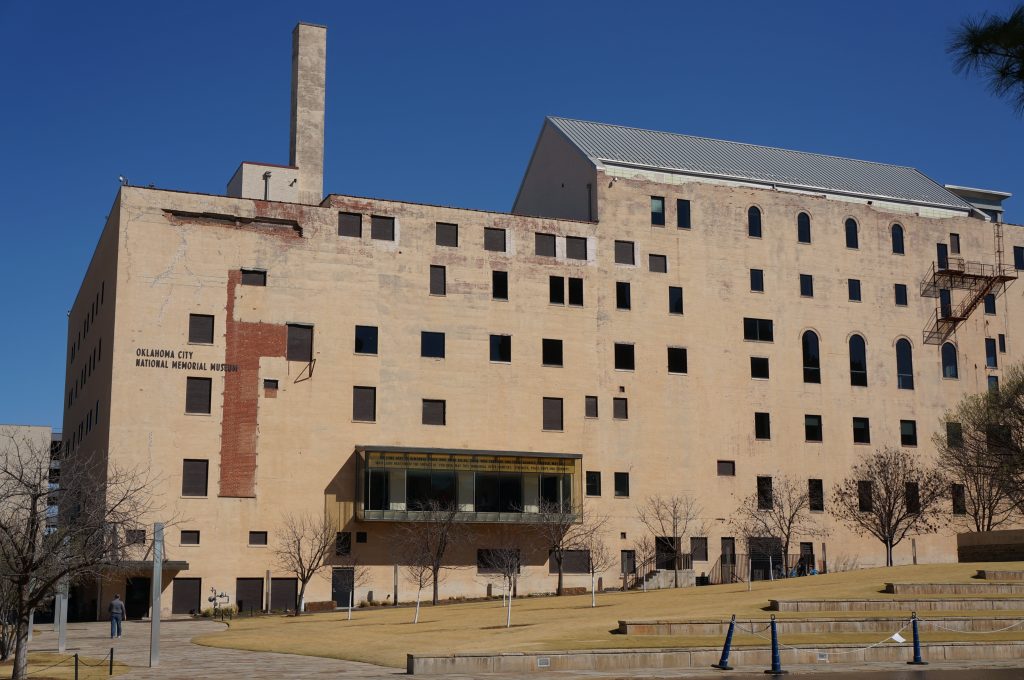

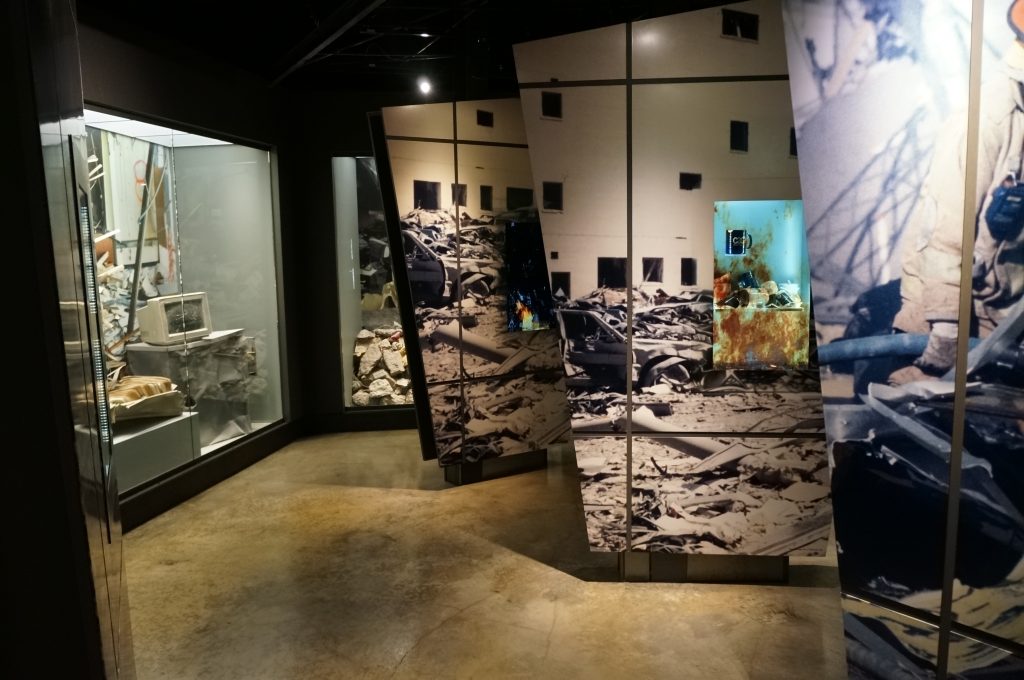
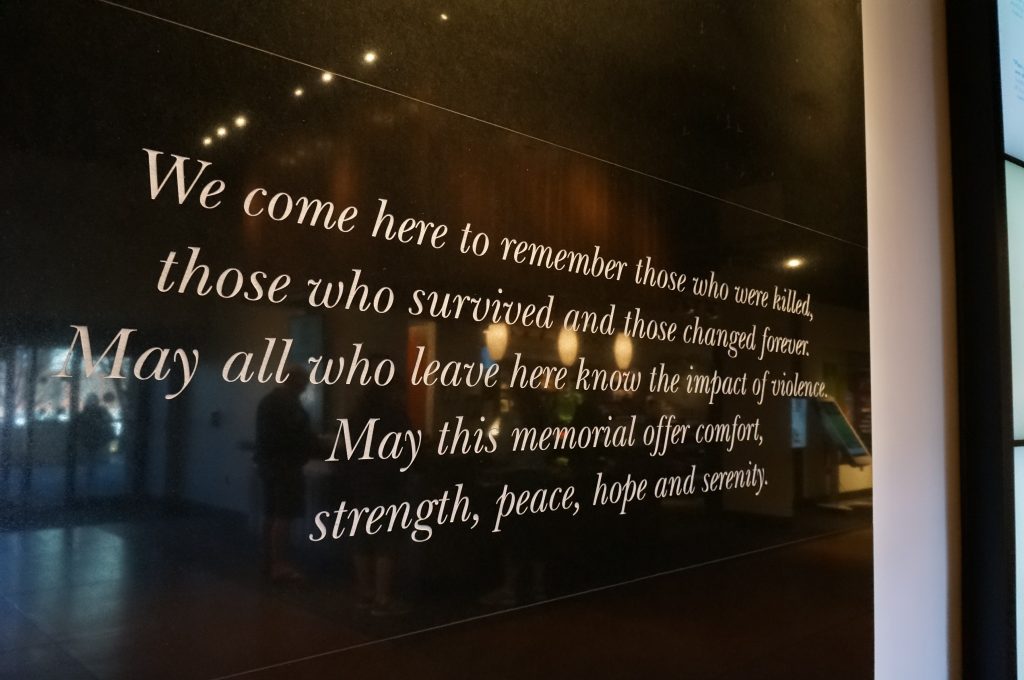
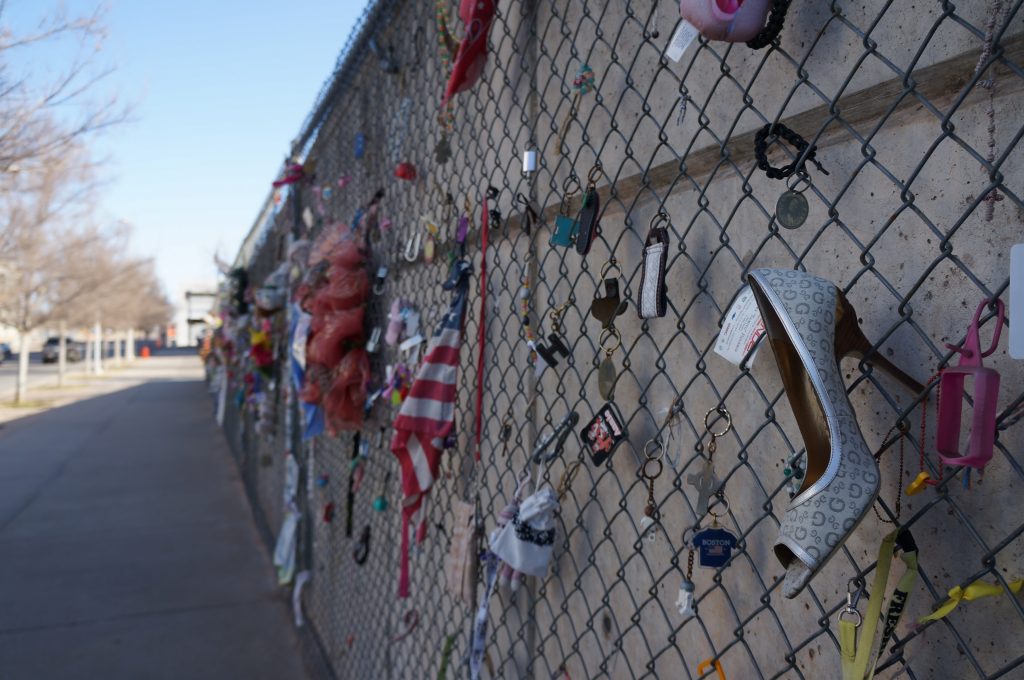


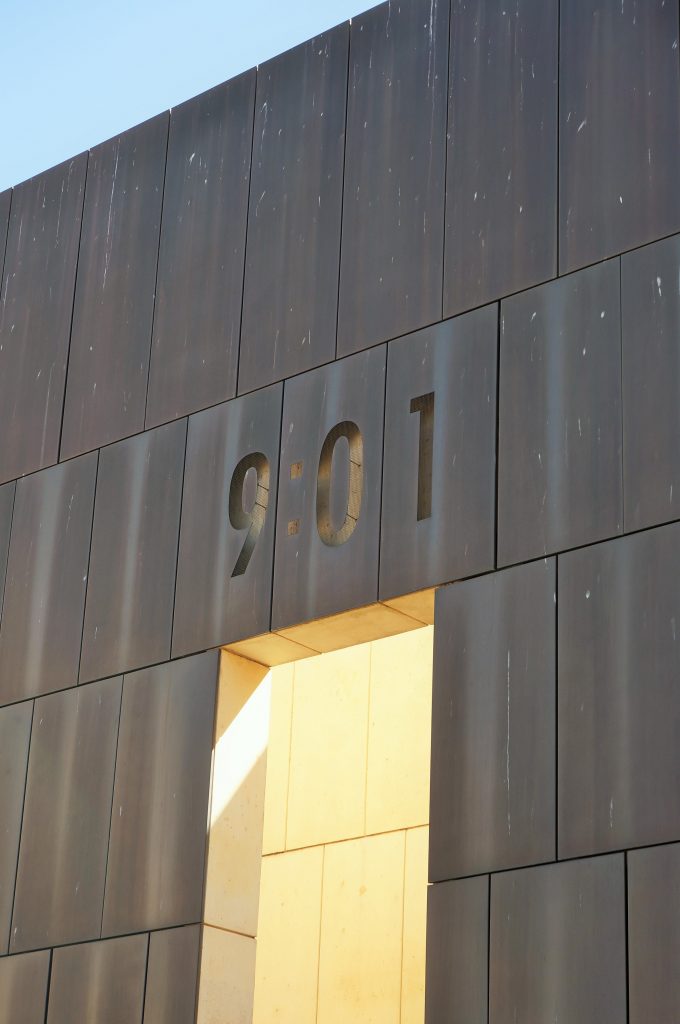

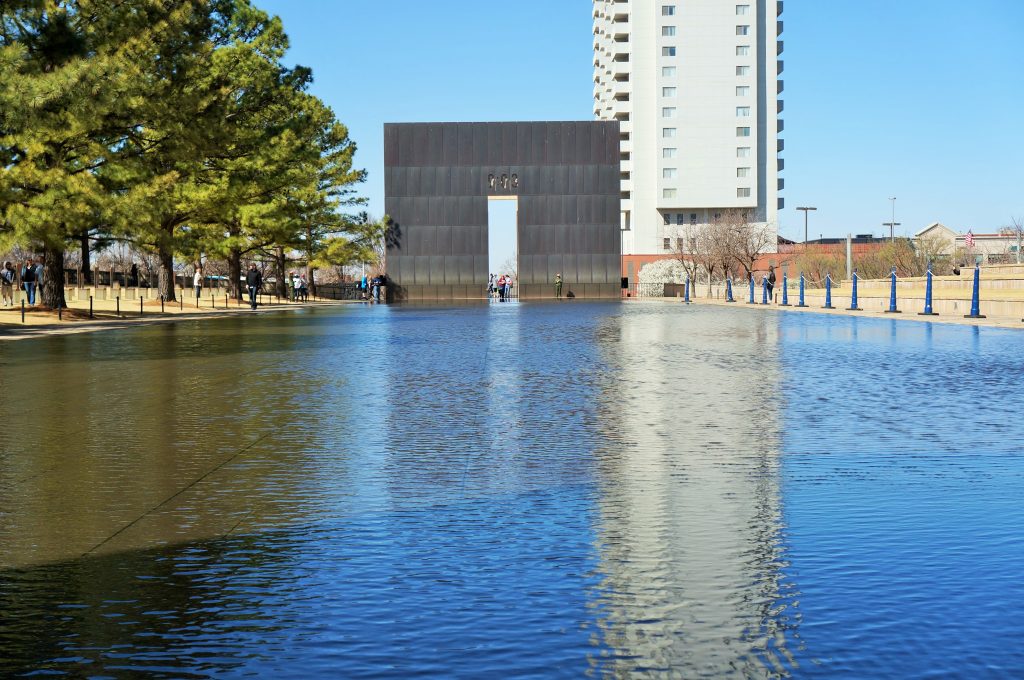

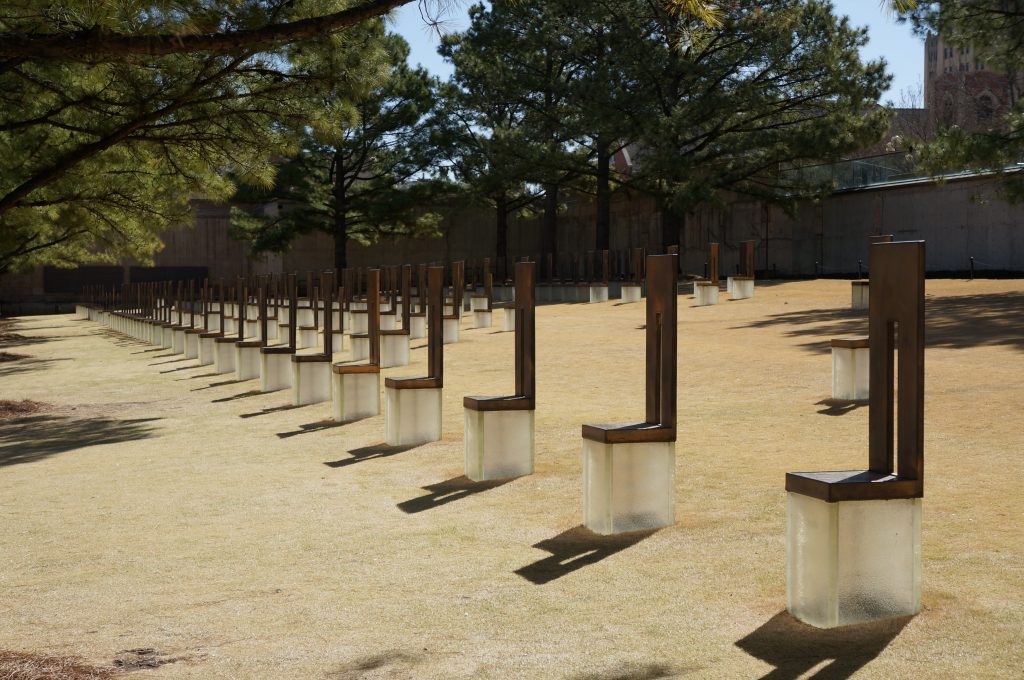

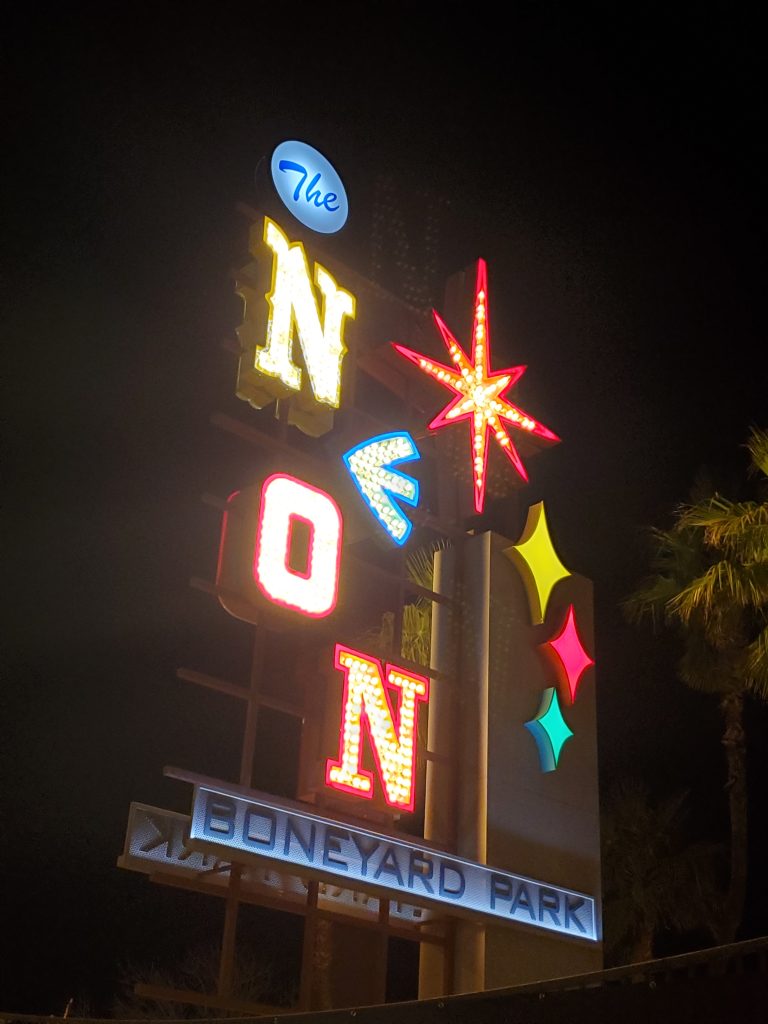
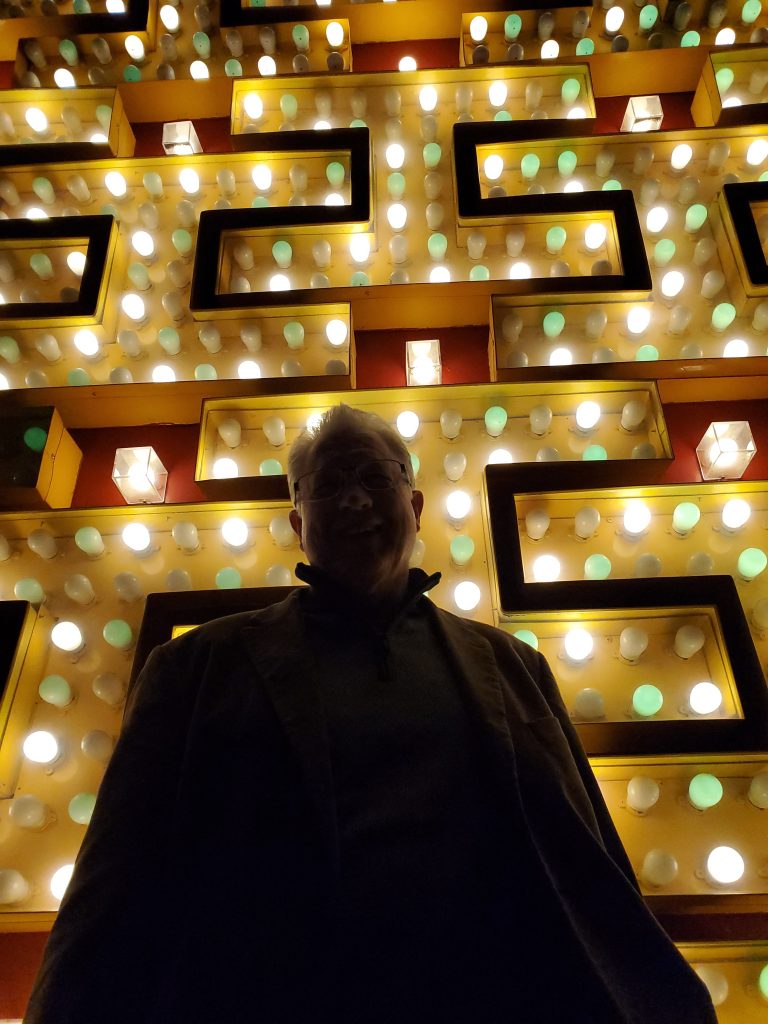
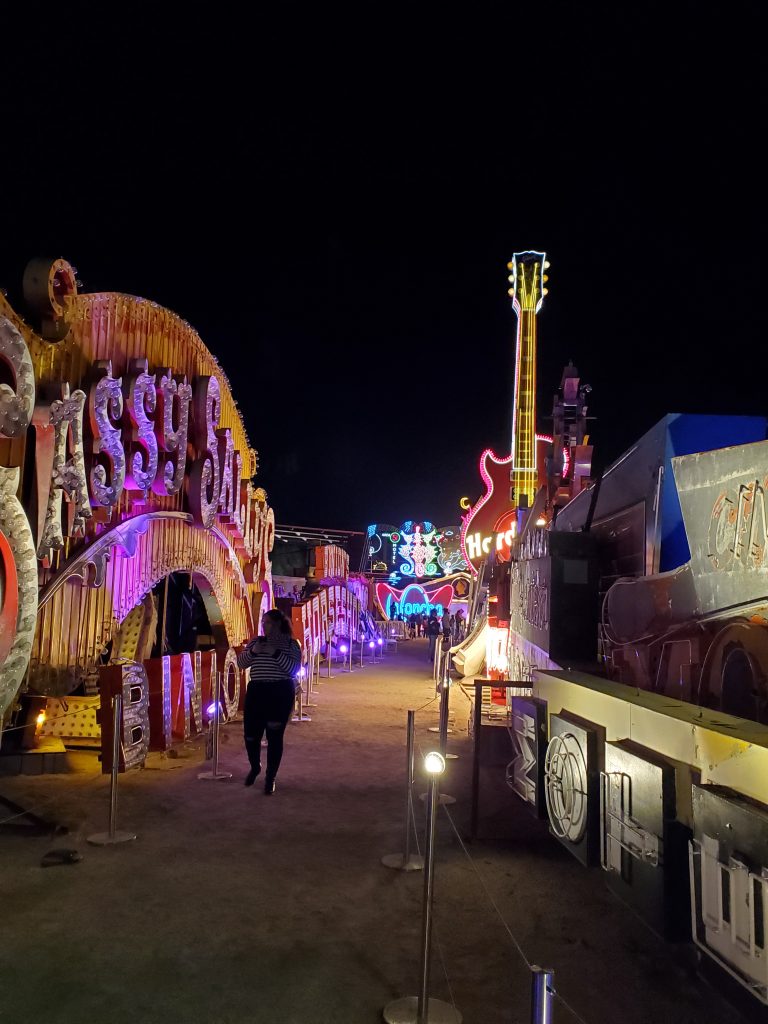
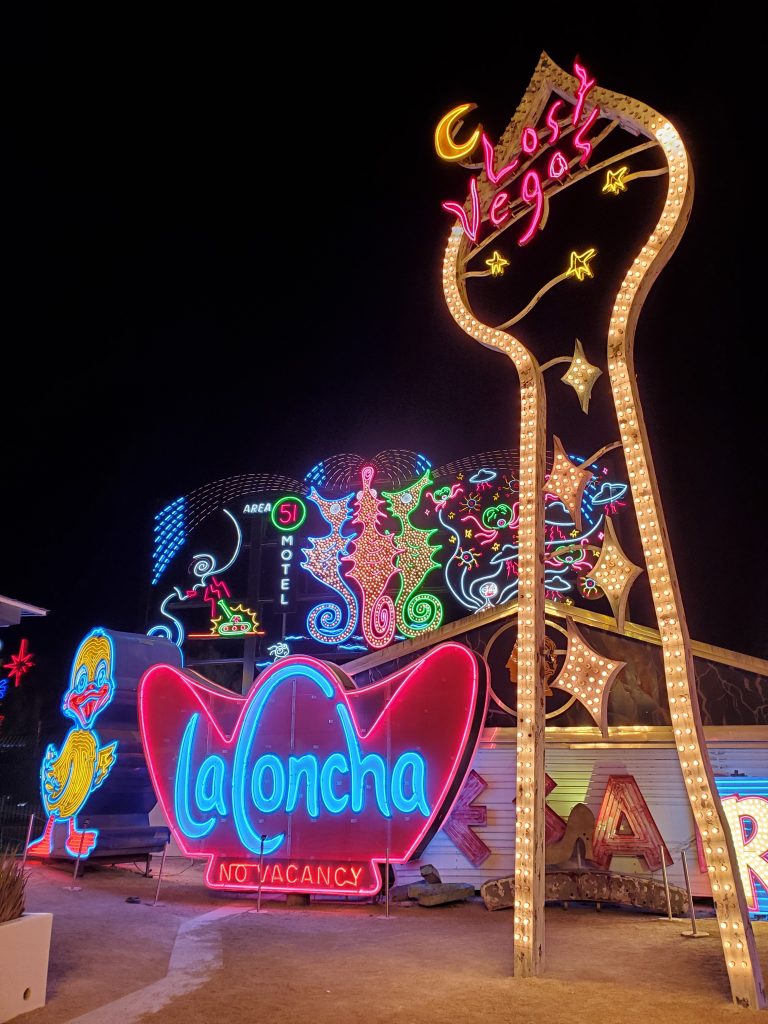

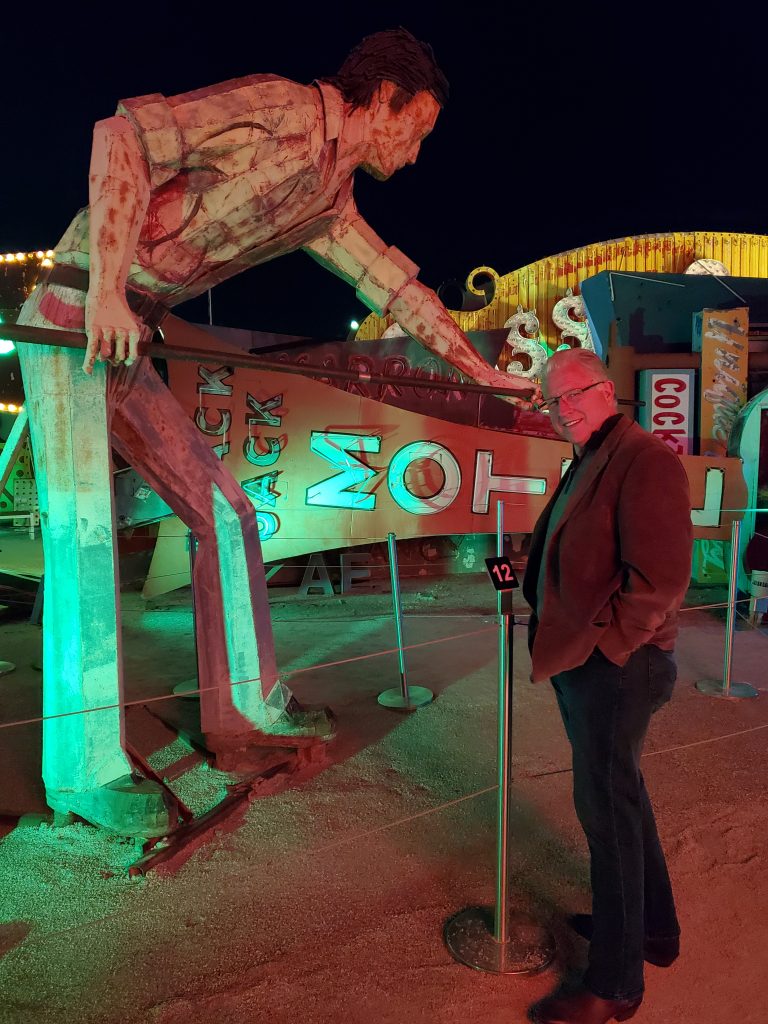

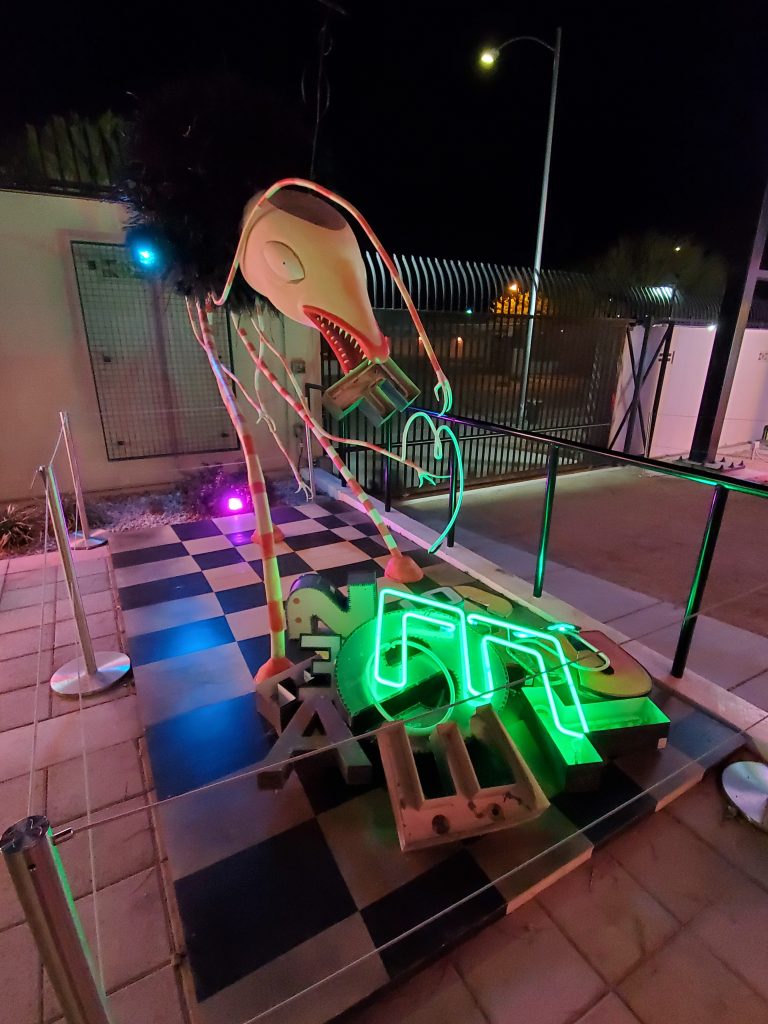
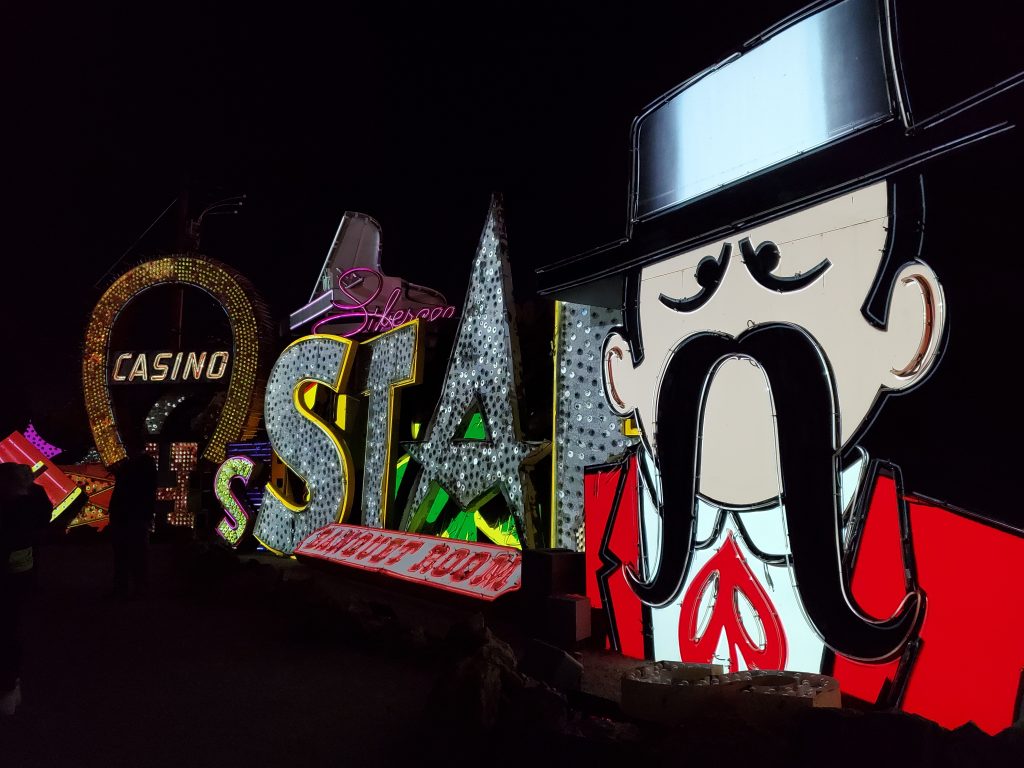

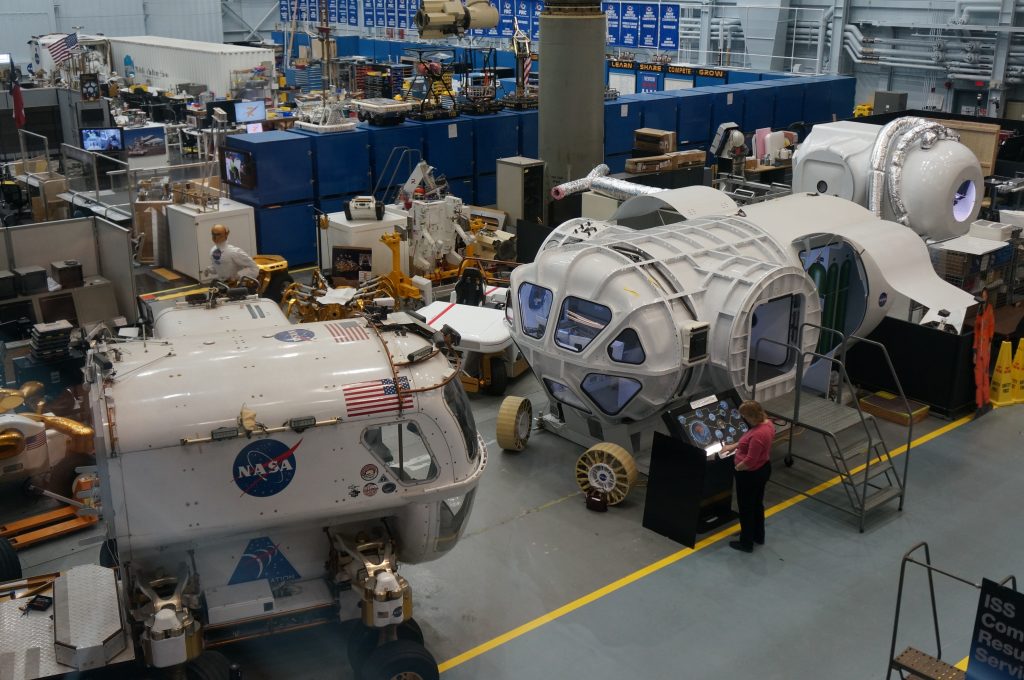
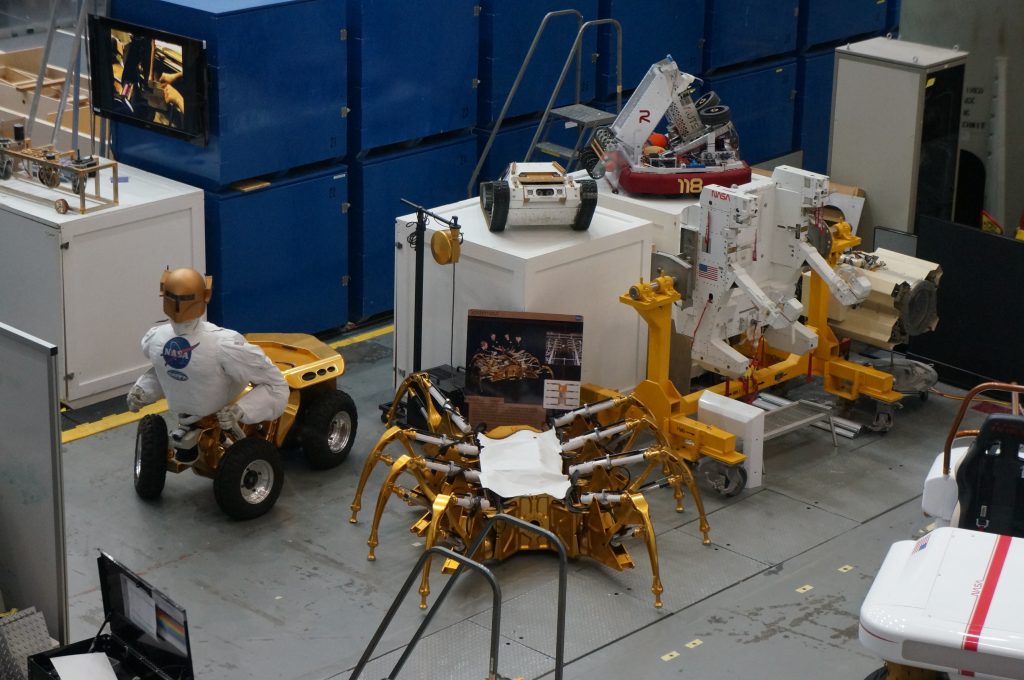
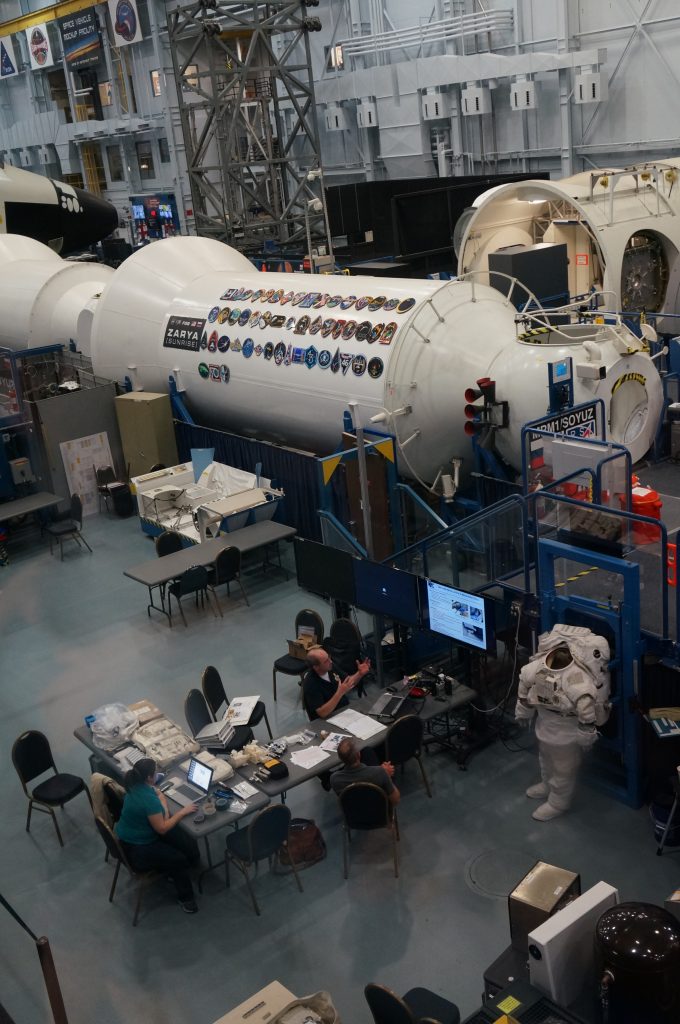
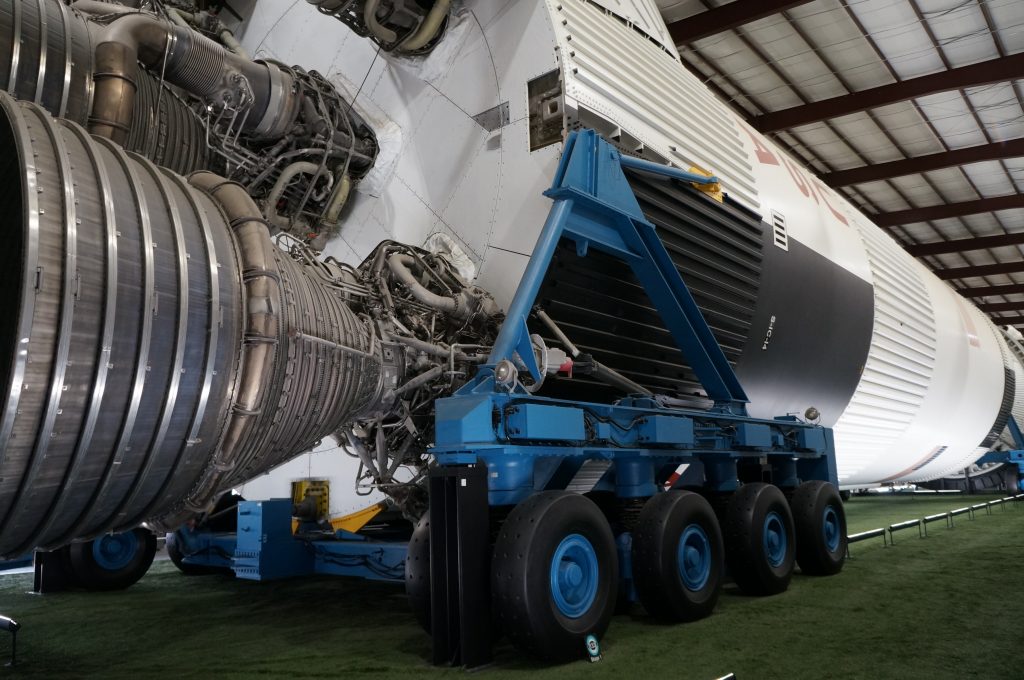
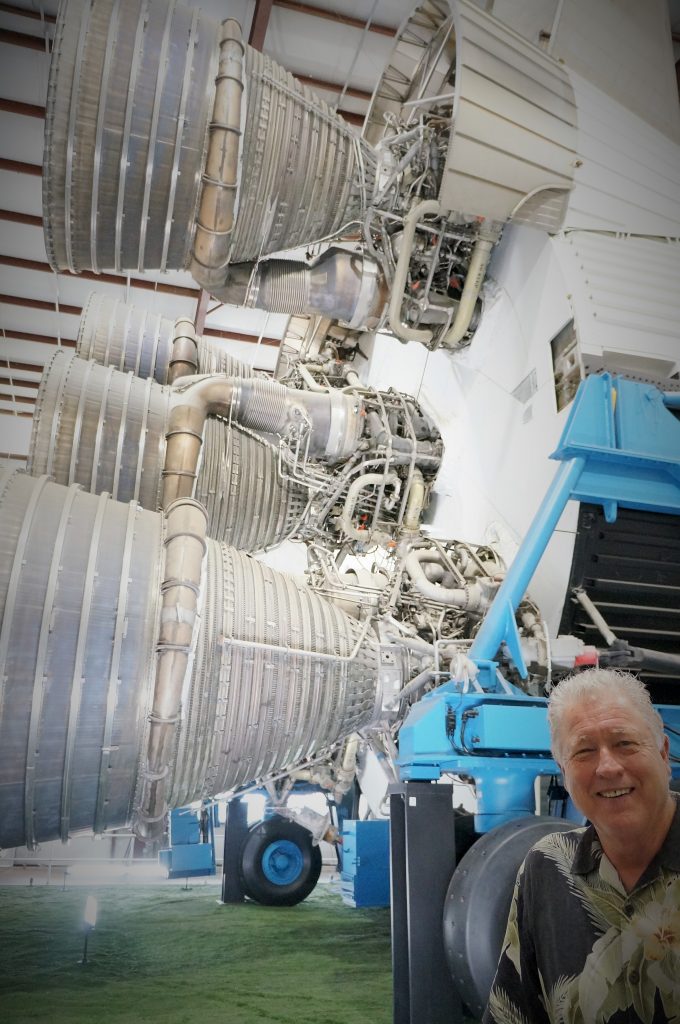
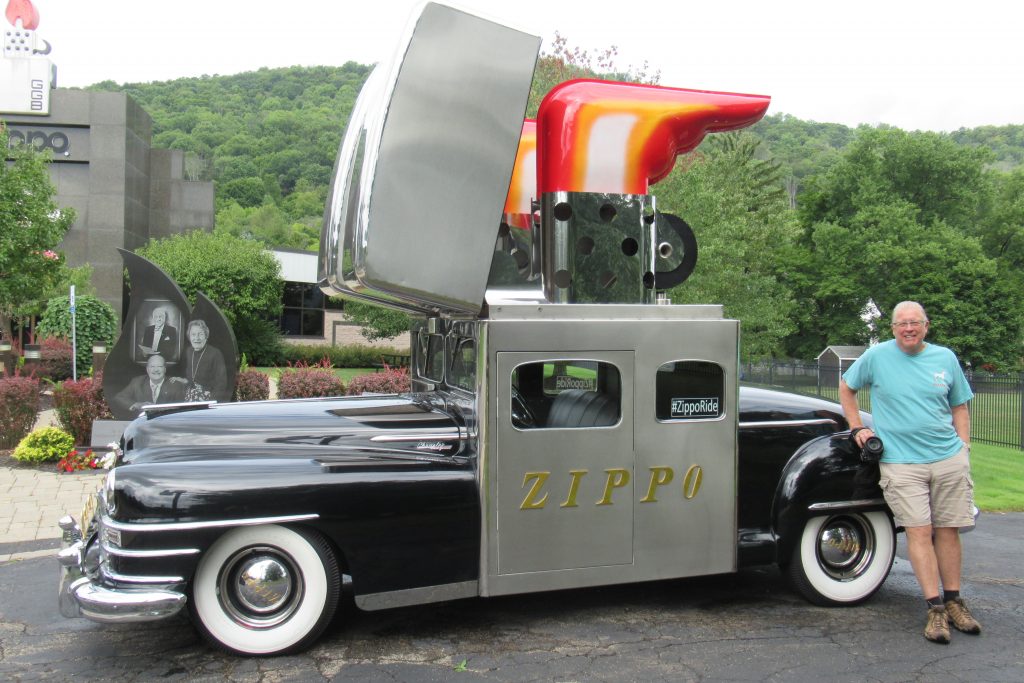
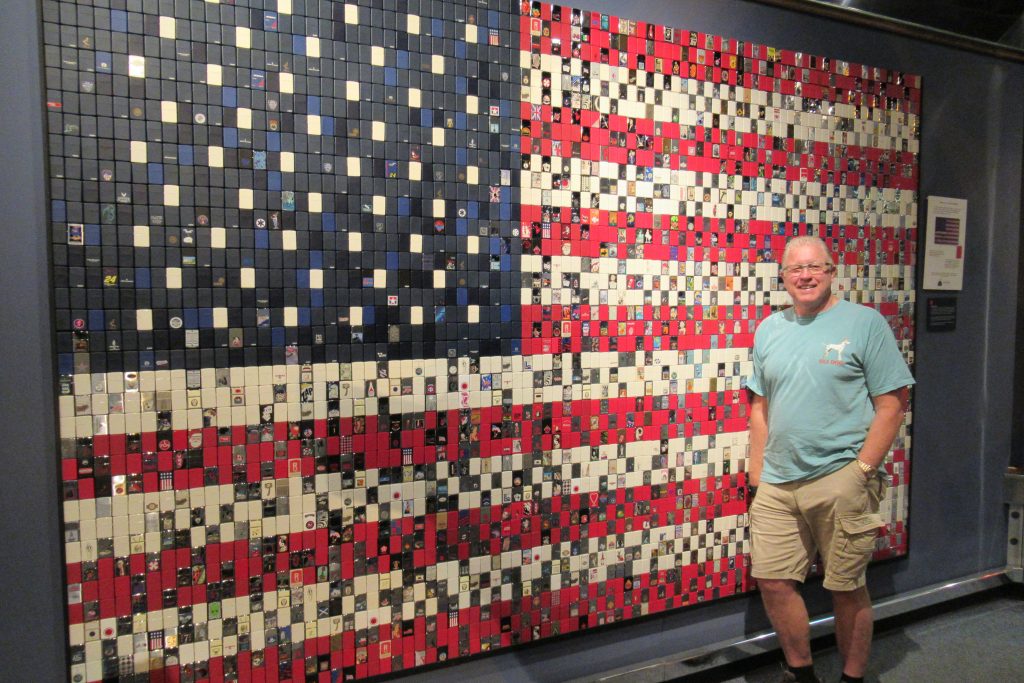
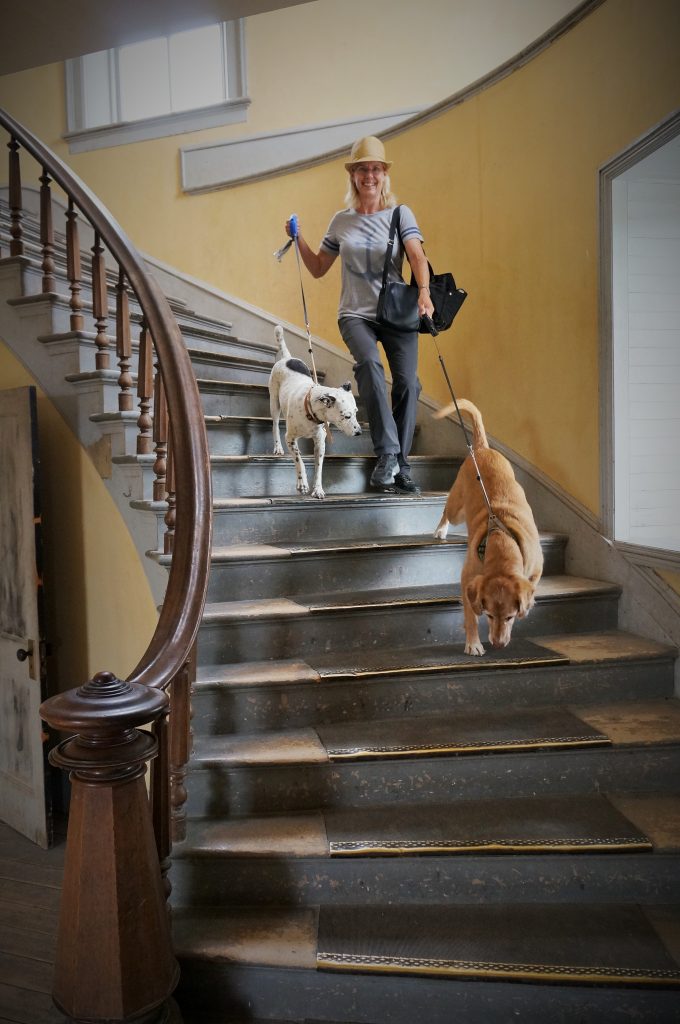
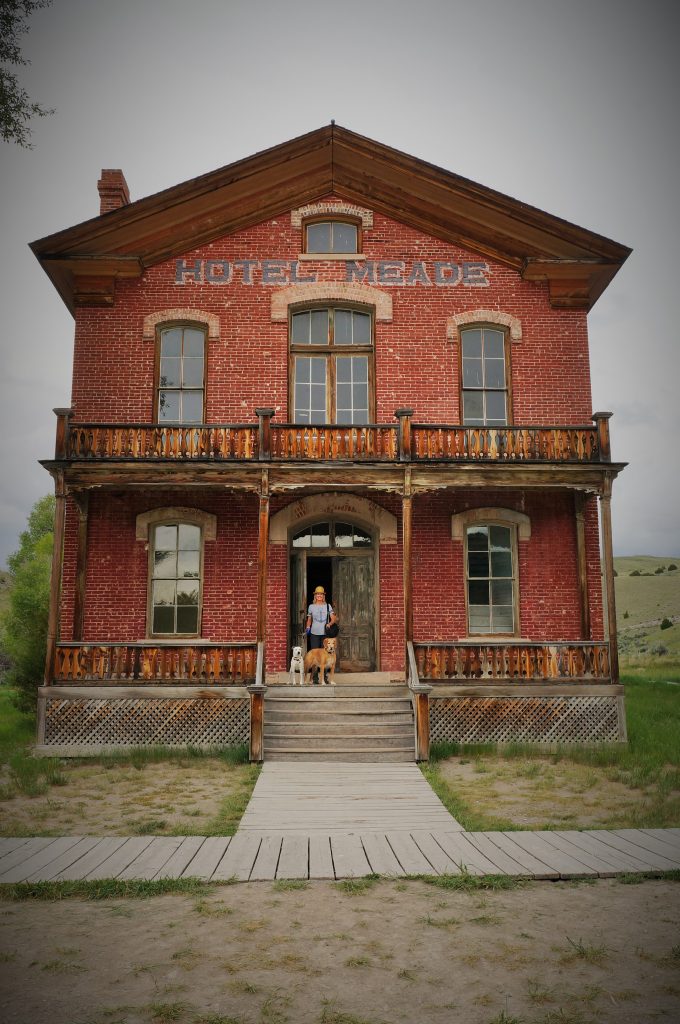
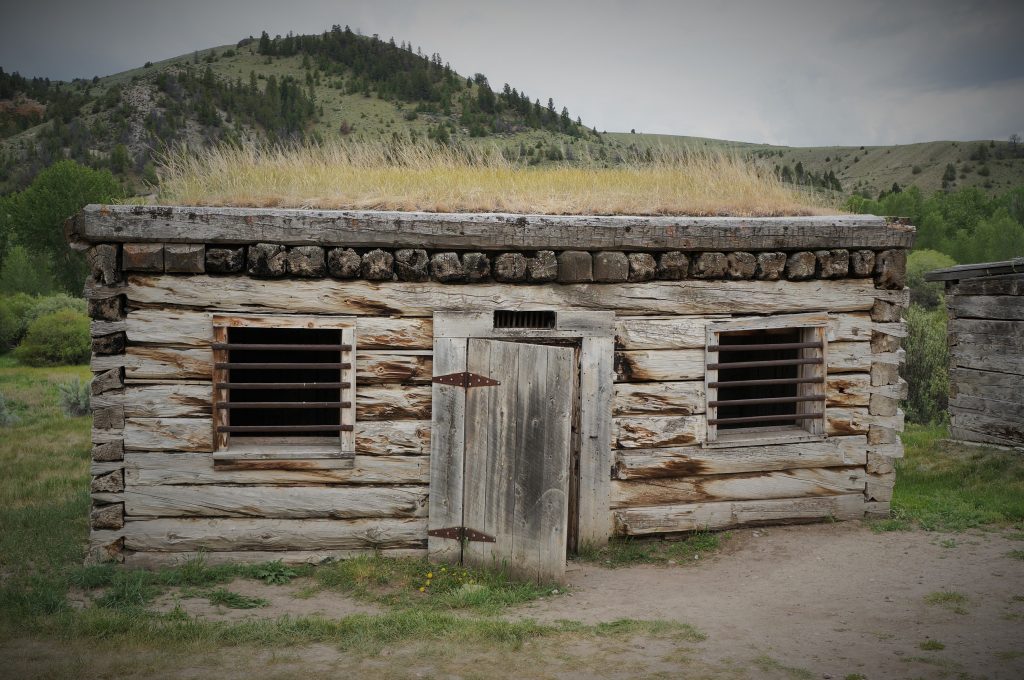
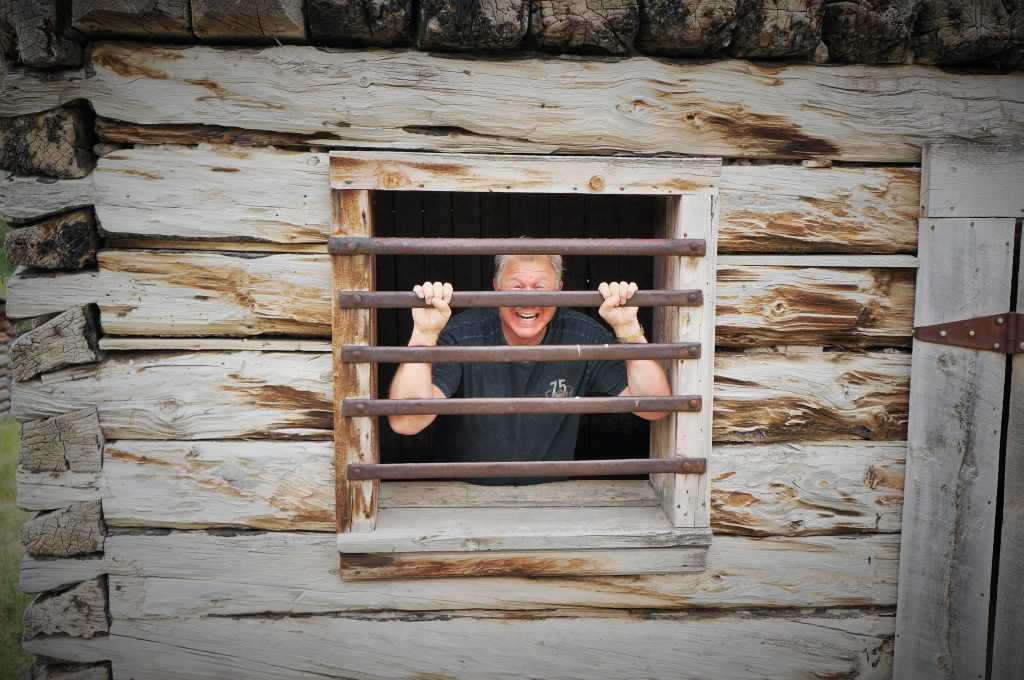

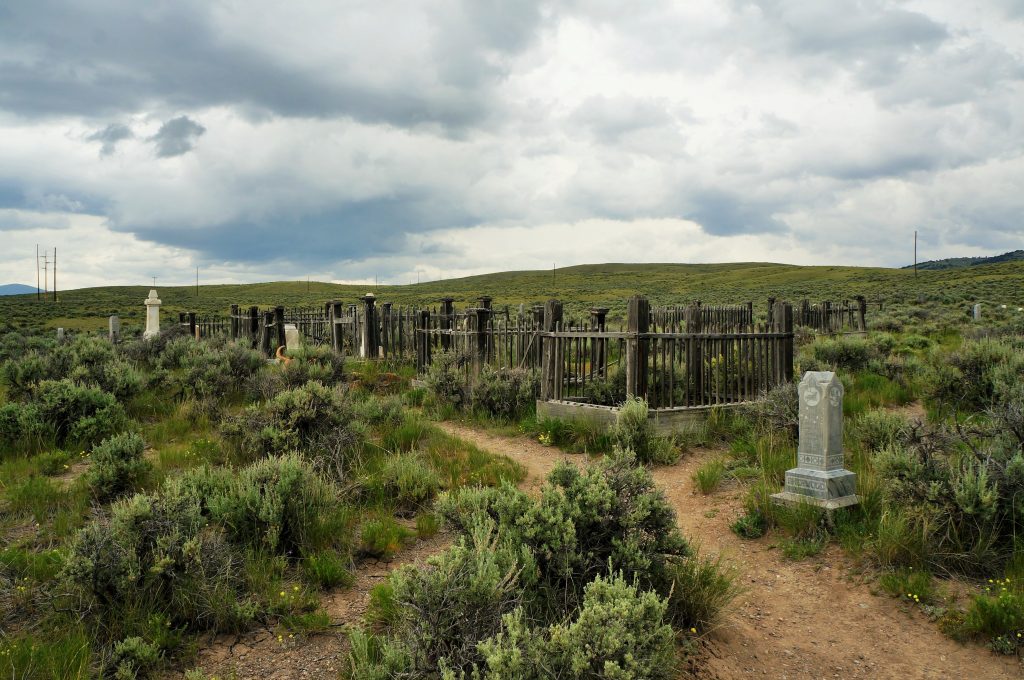
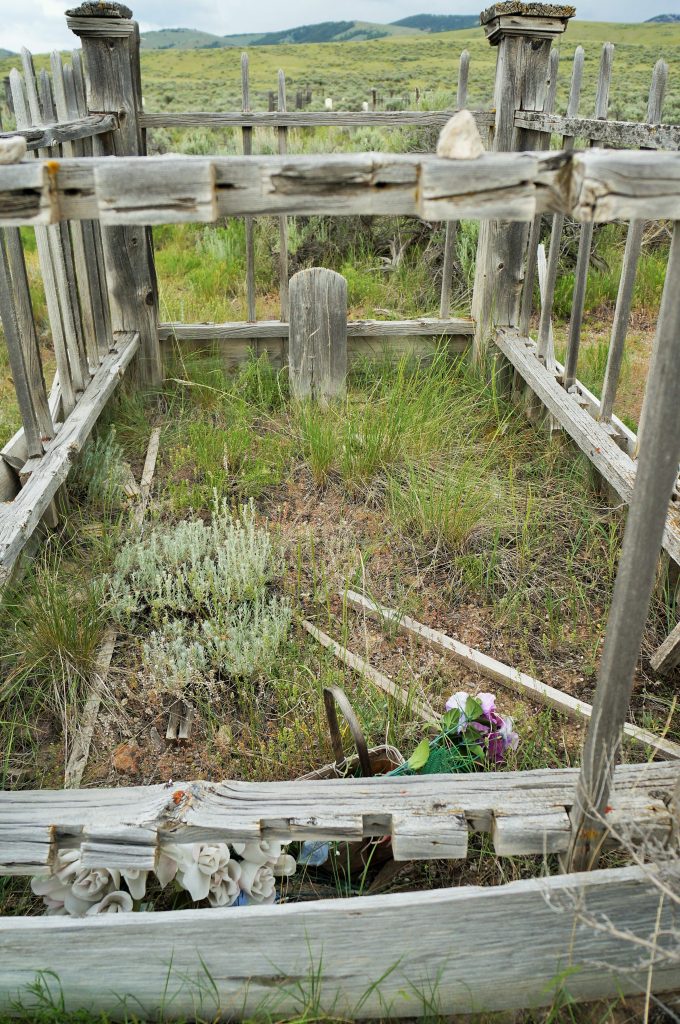
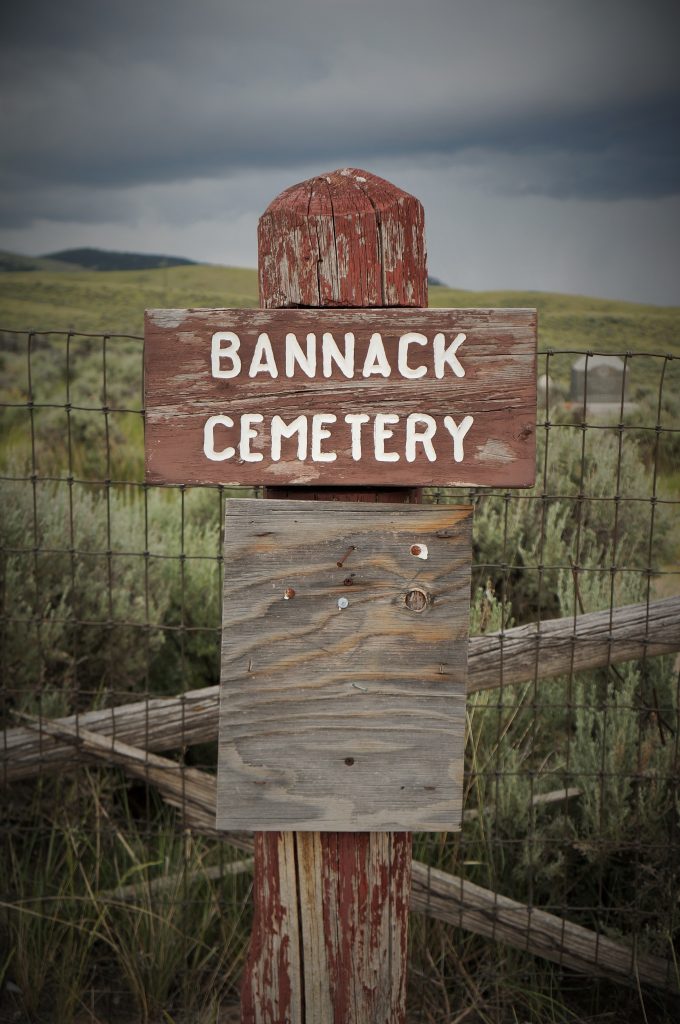
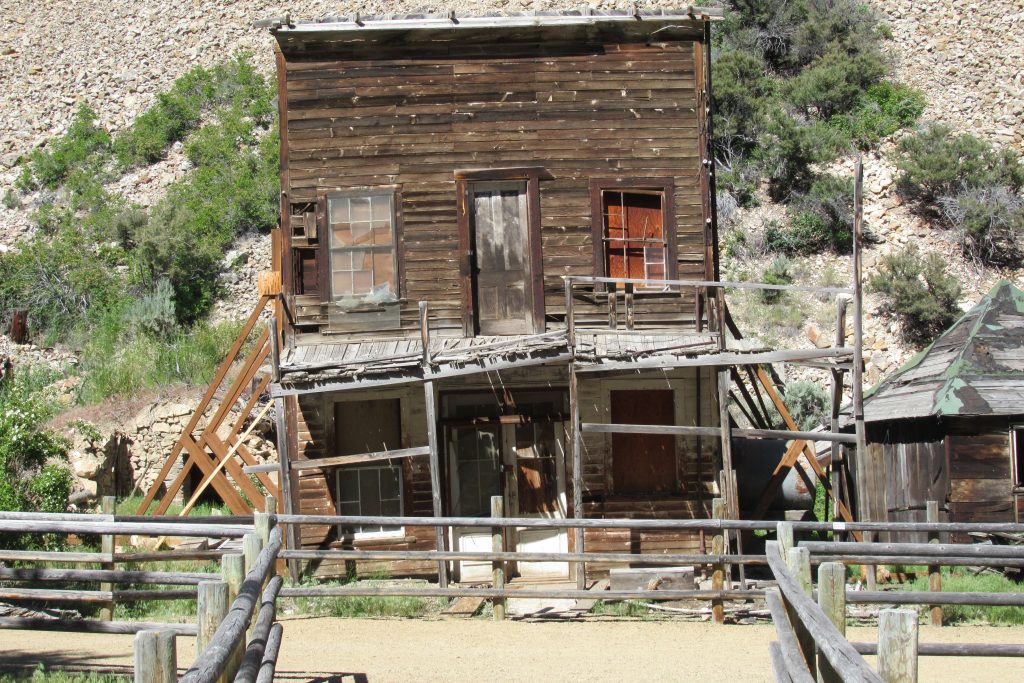
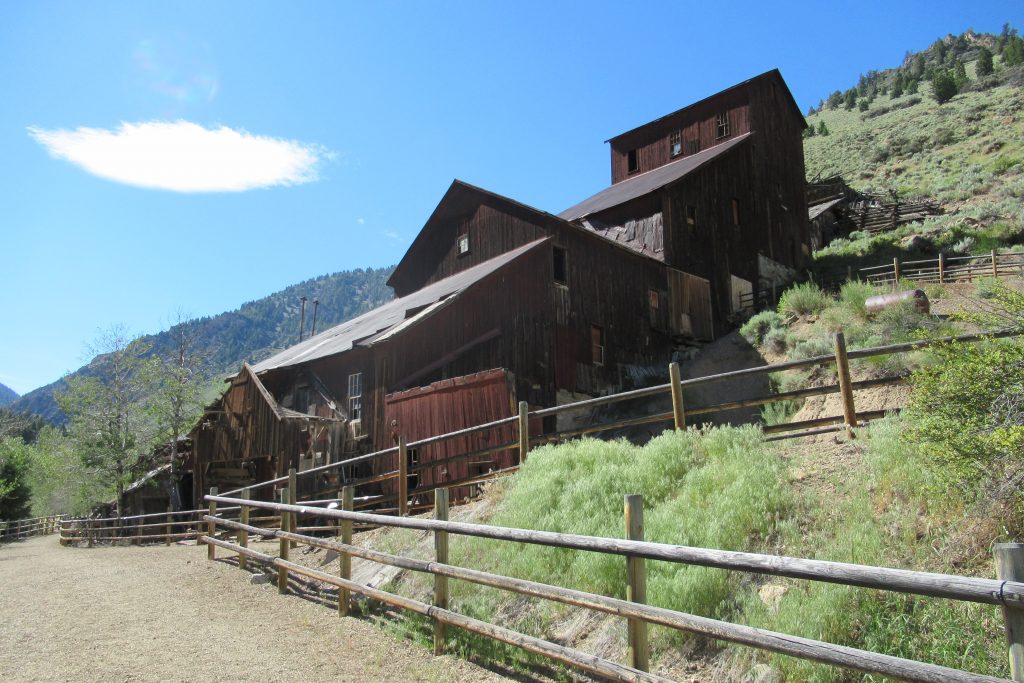

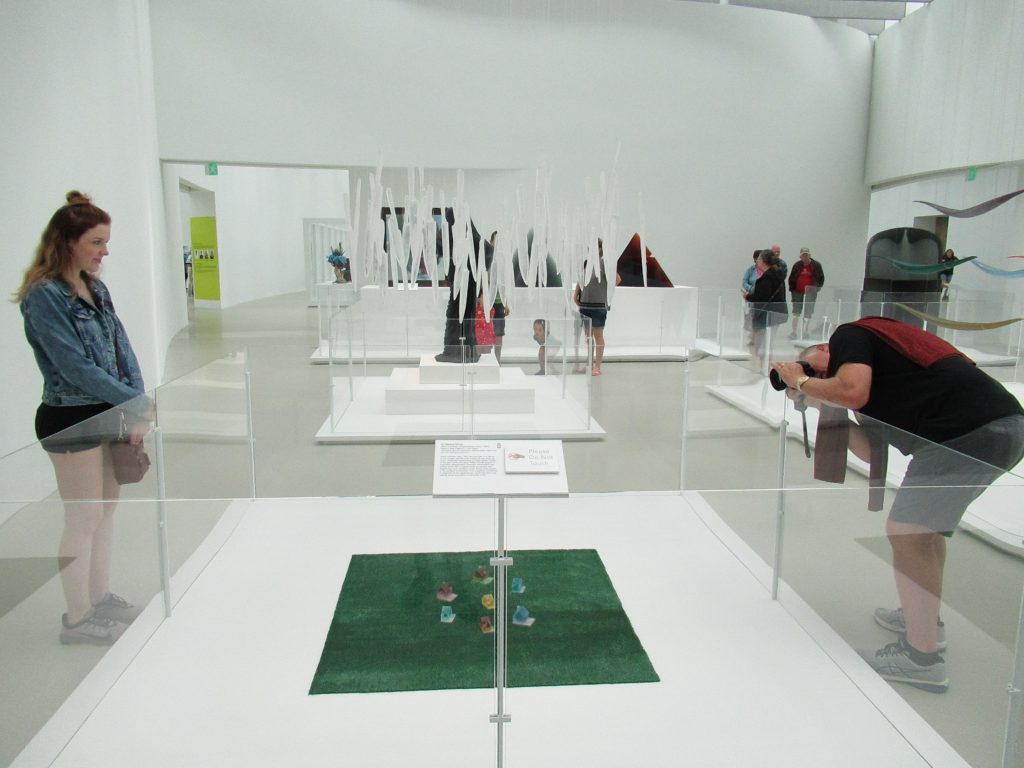
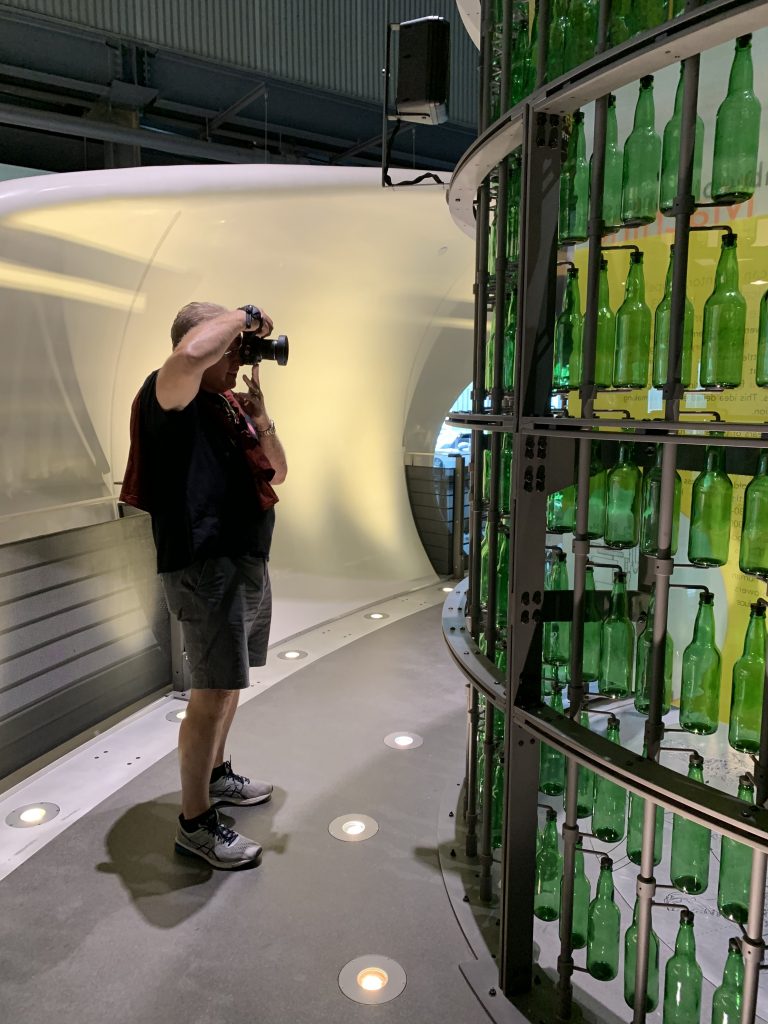
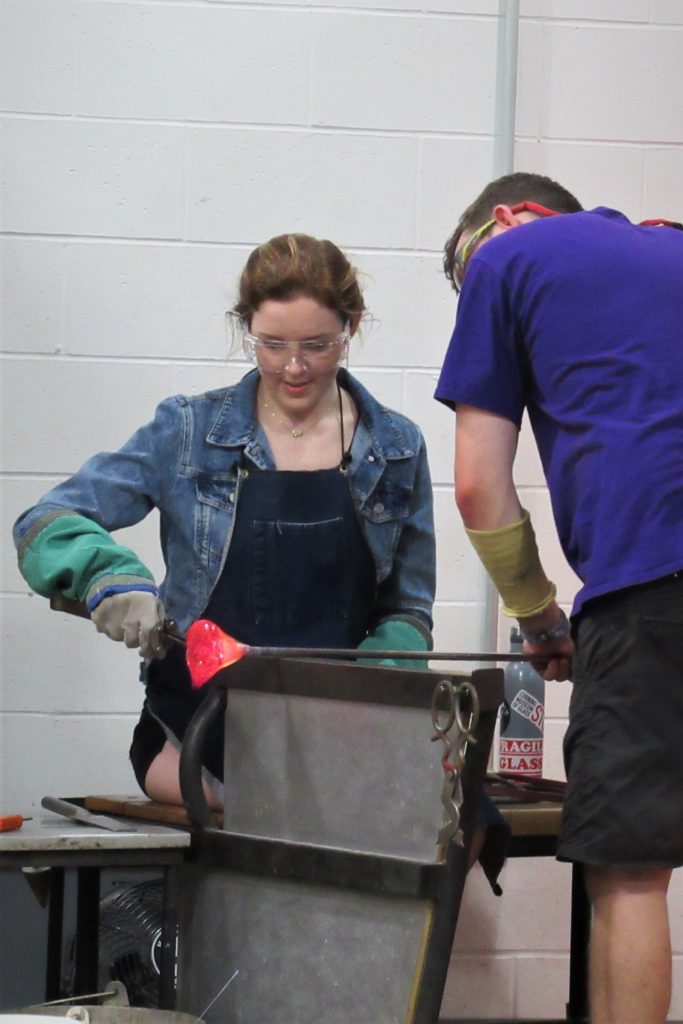
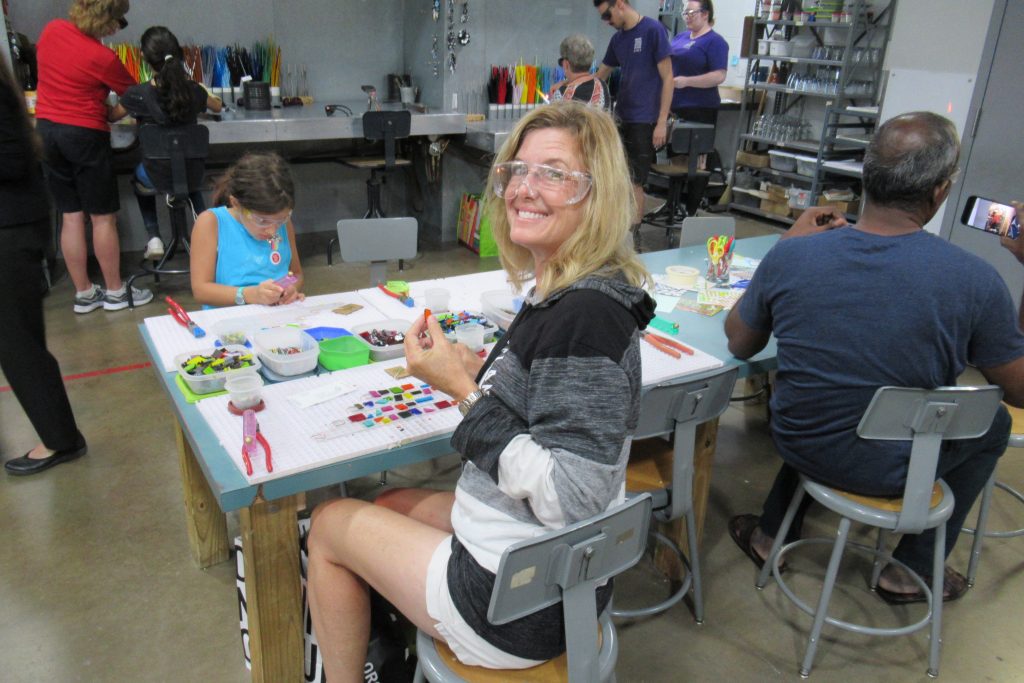

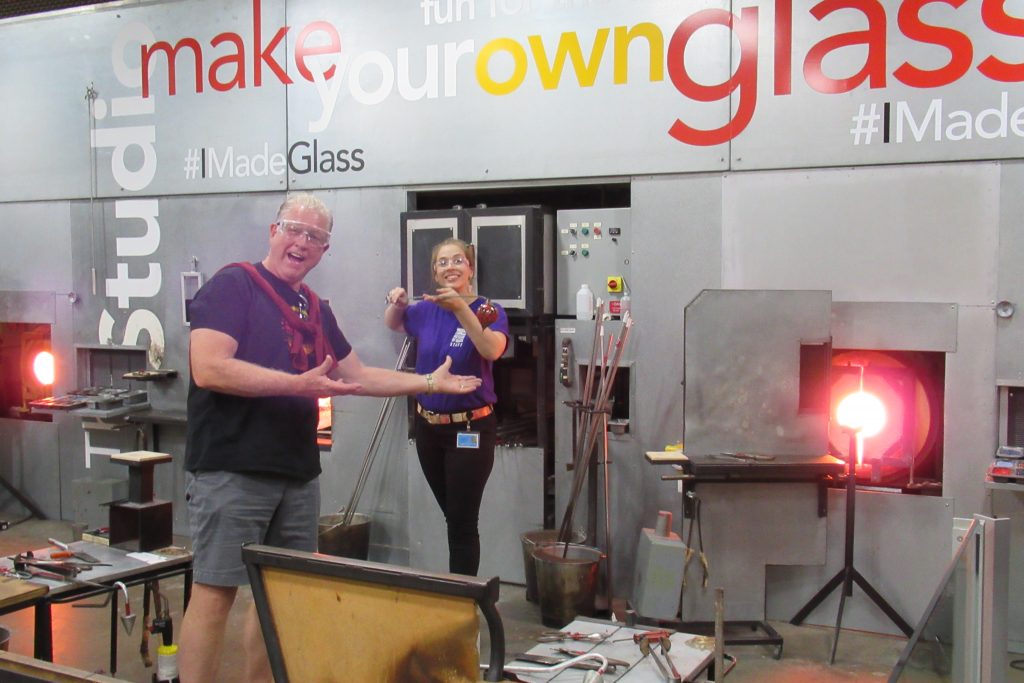
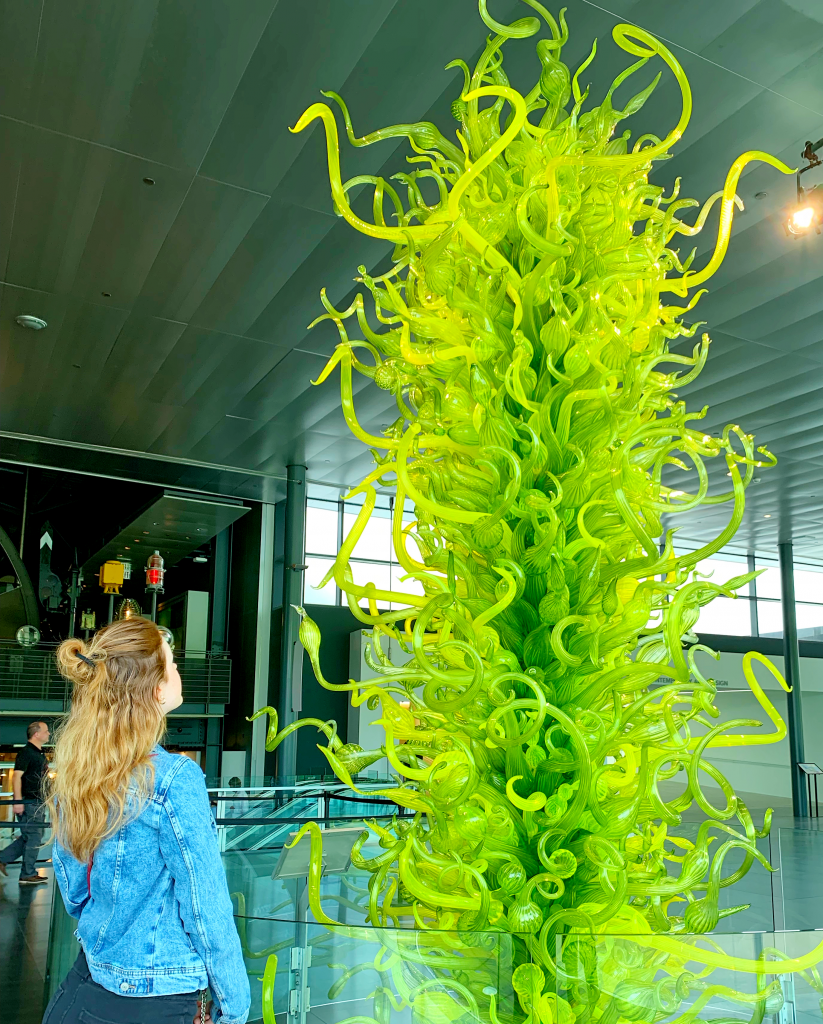
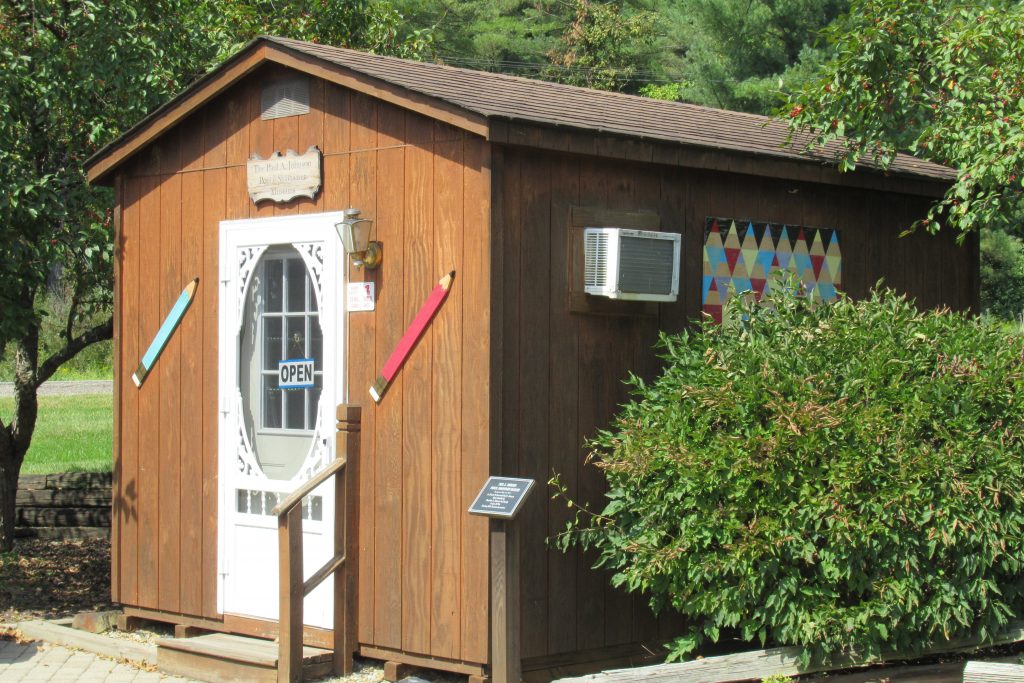


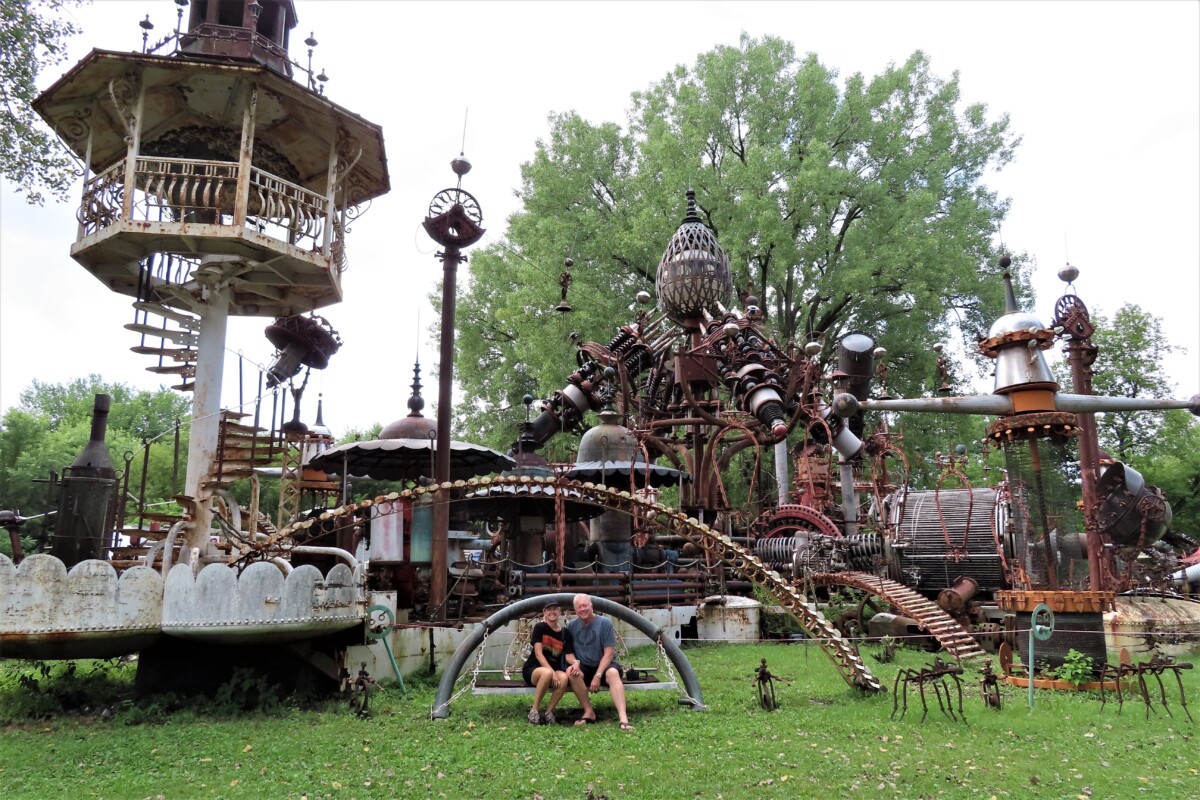

Leave a reply